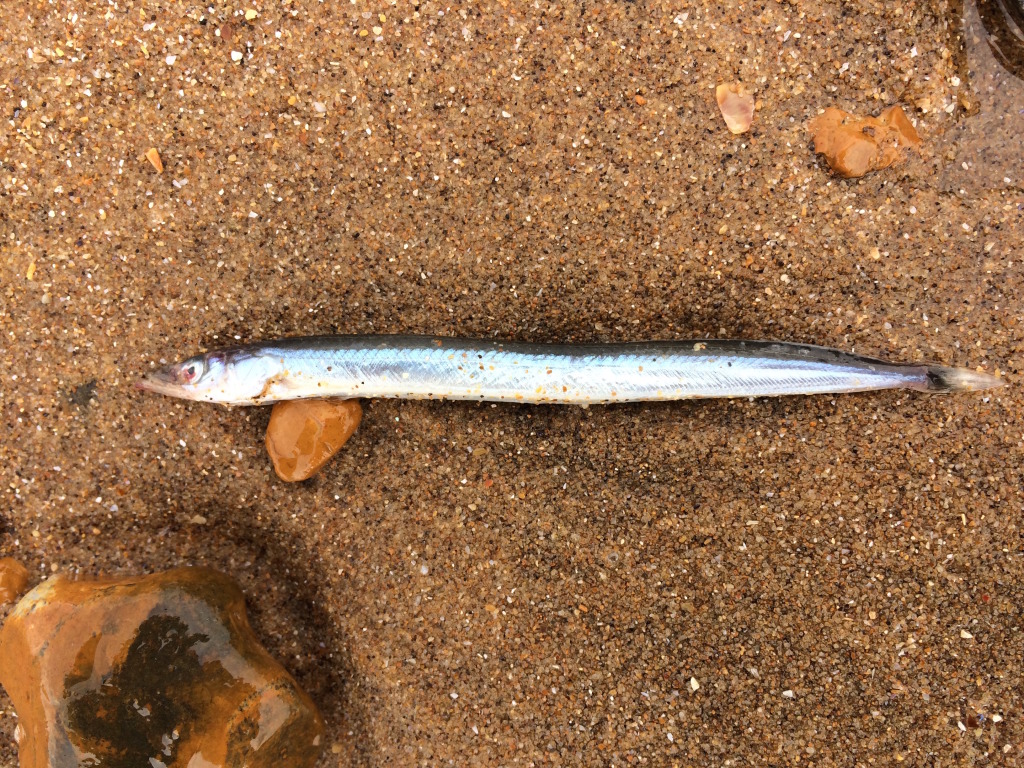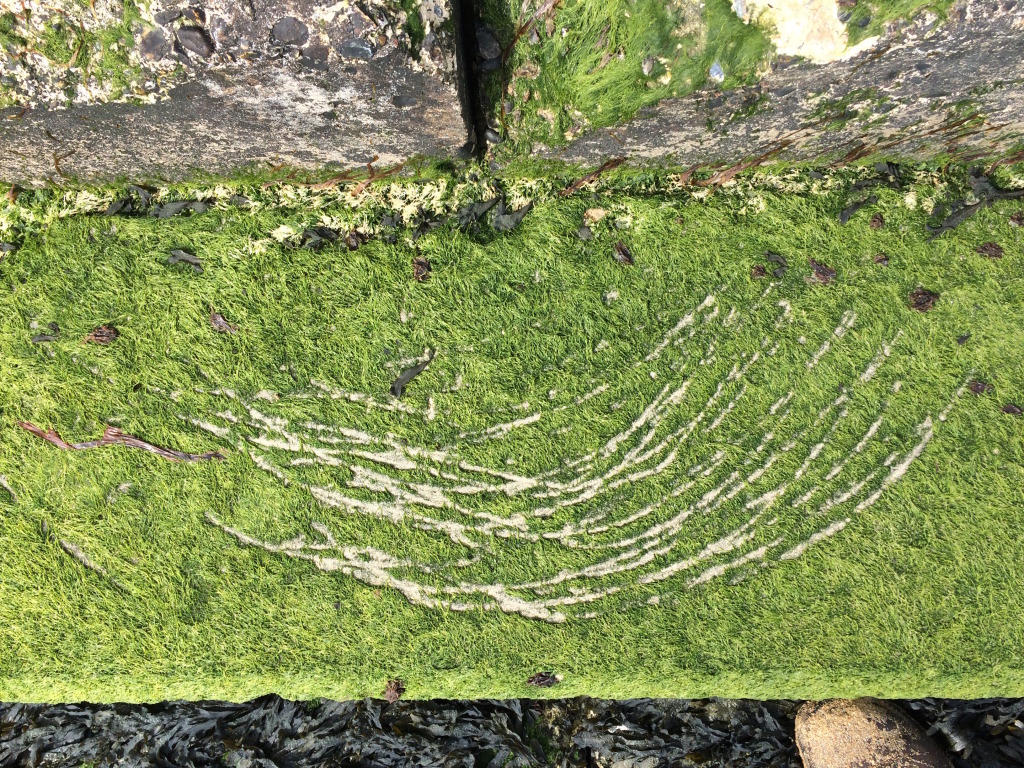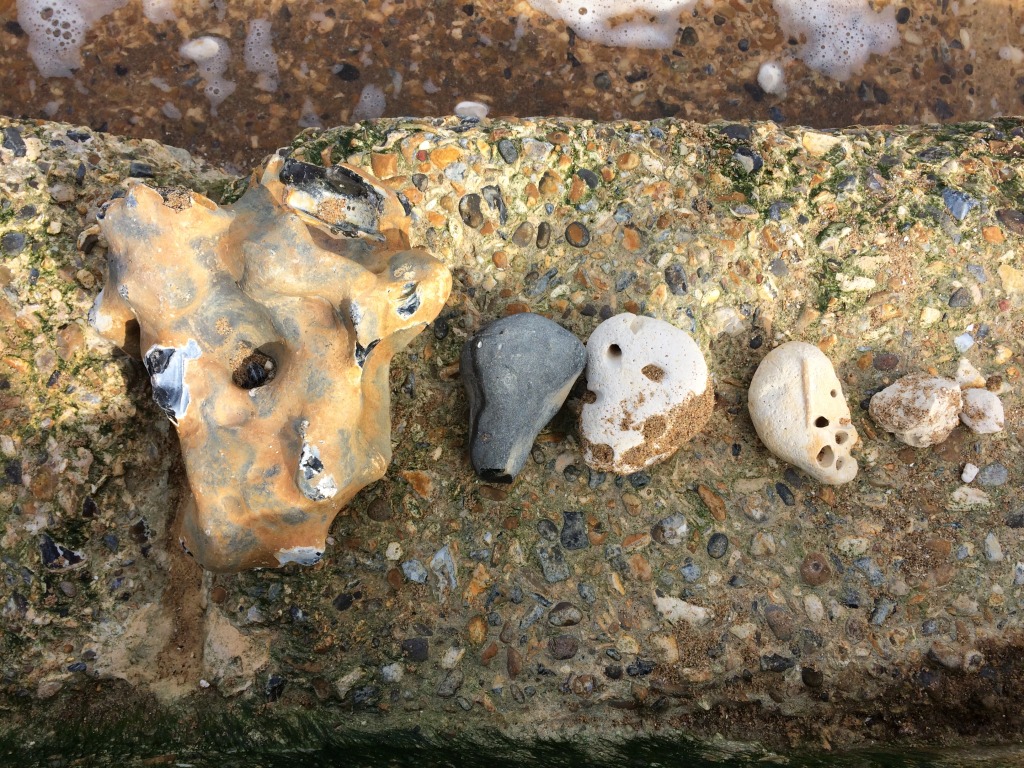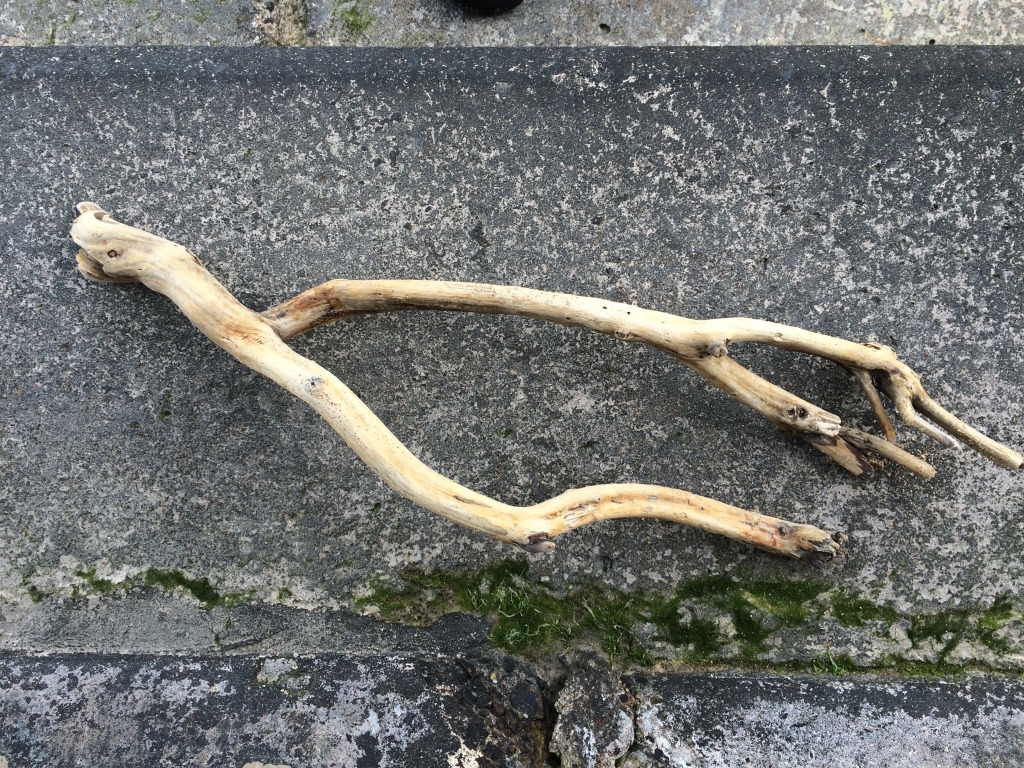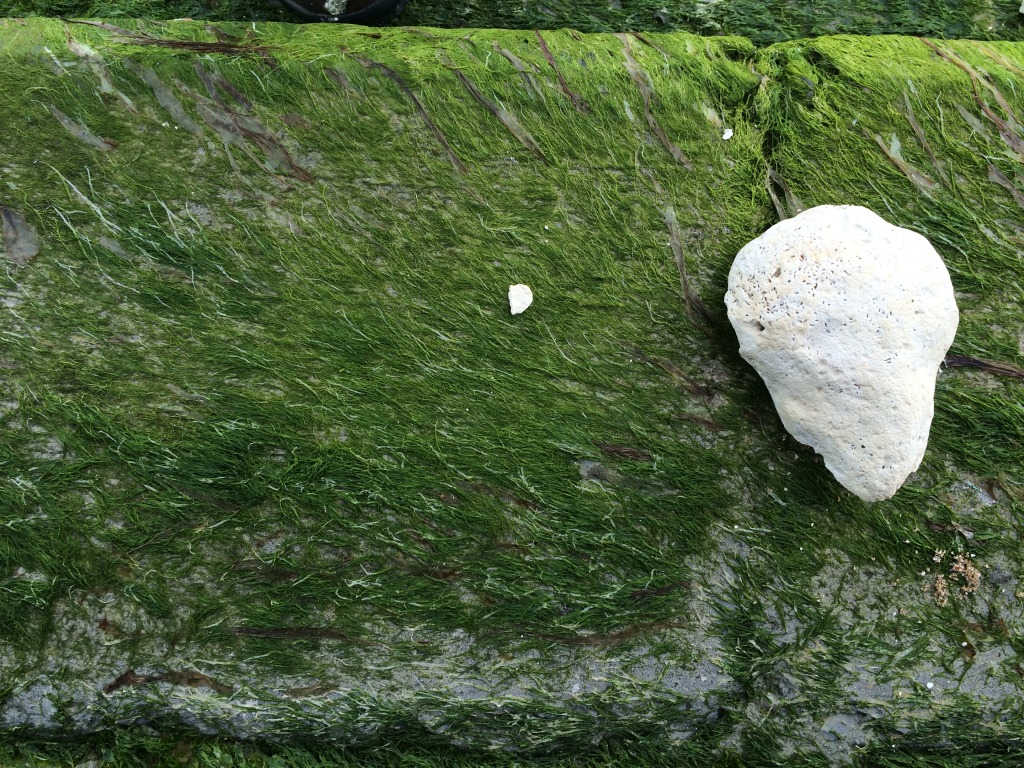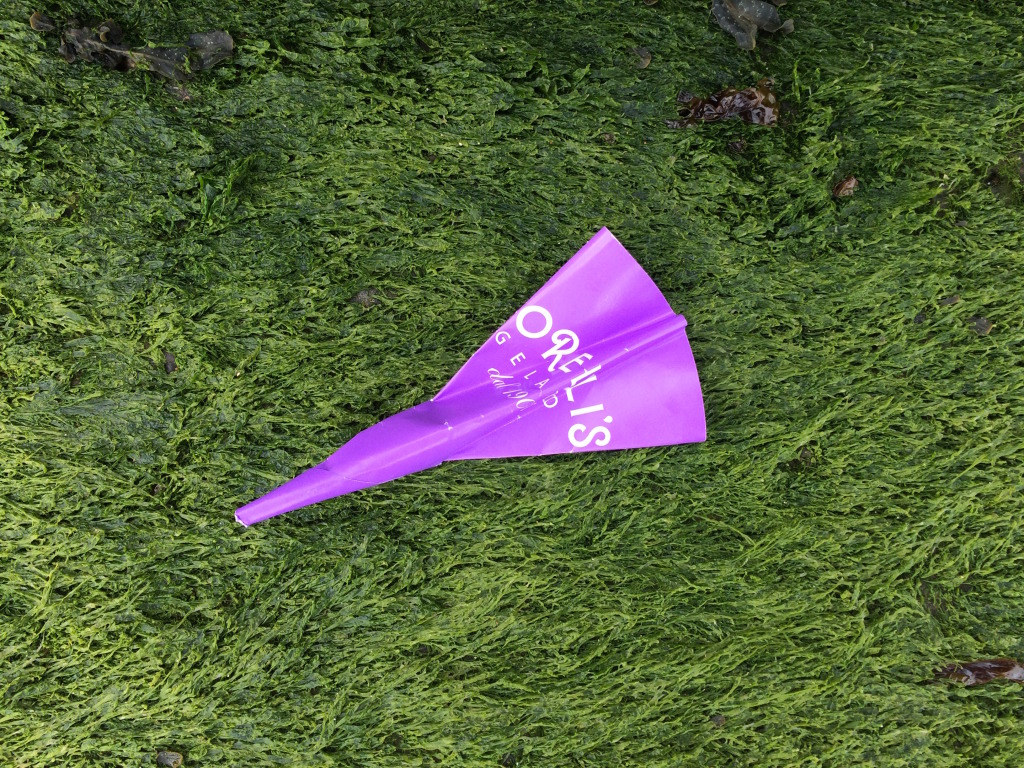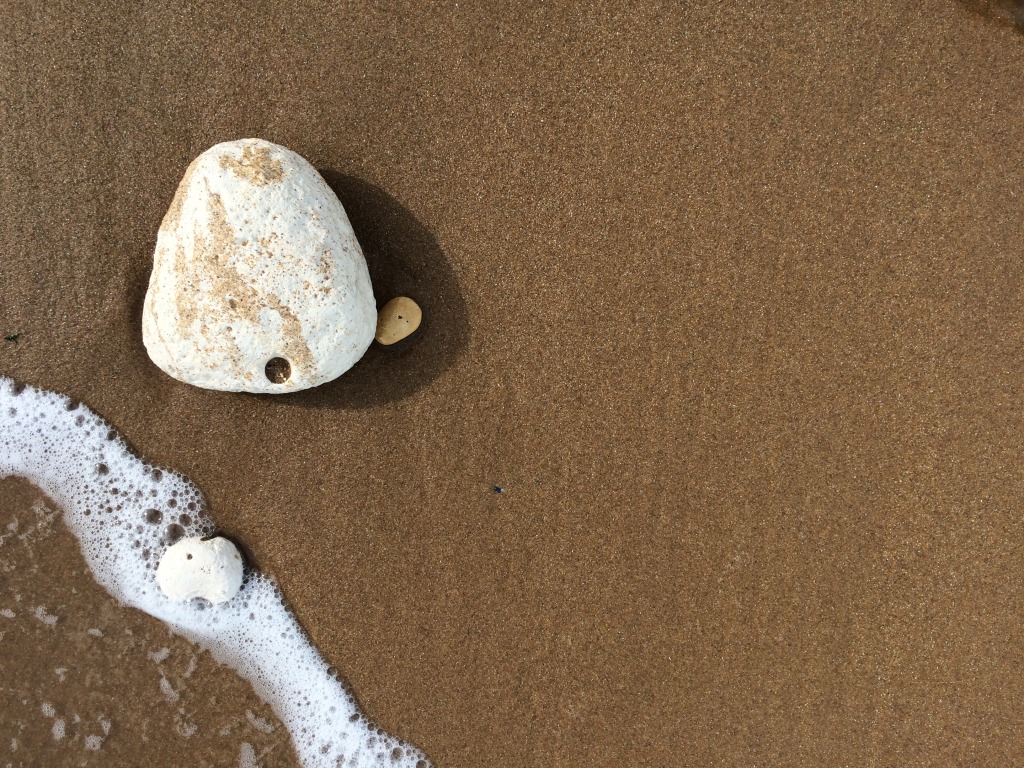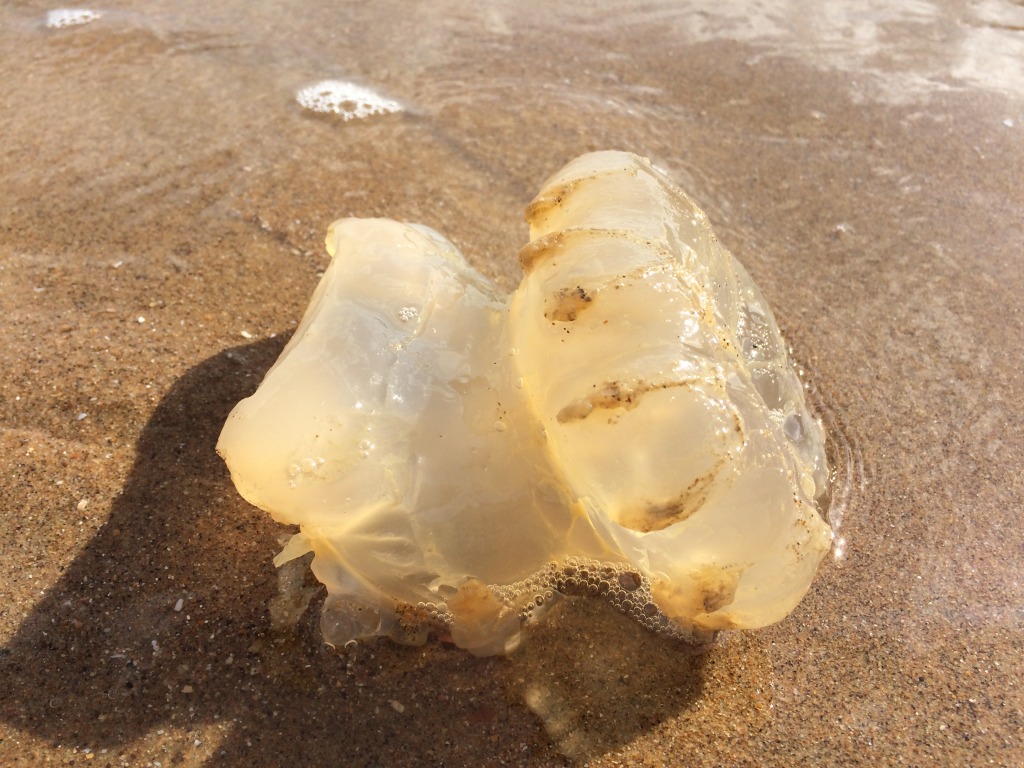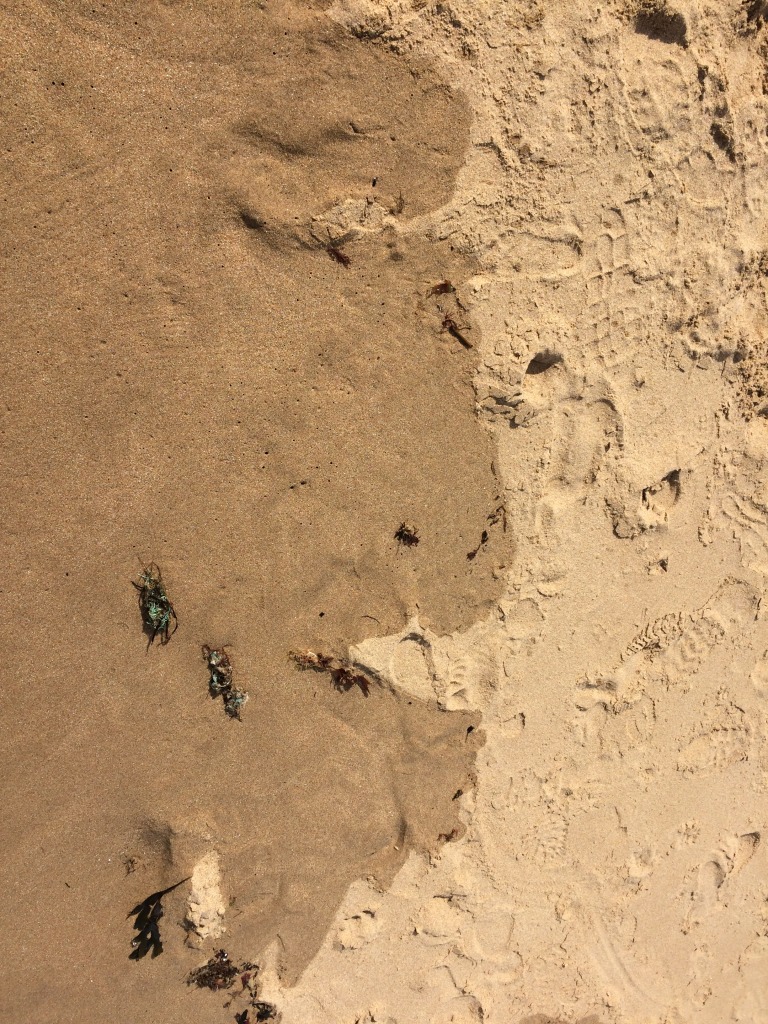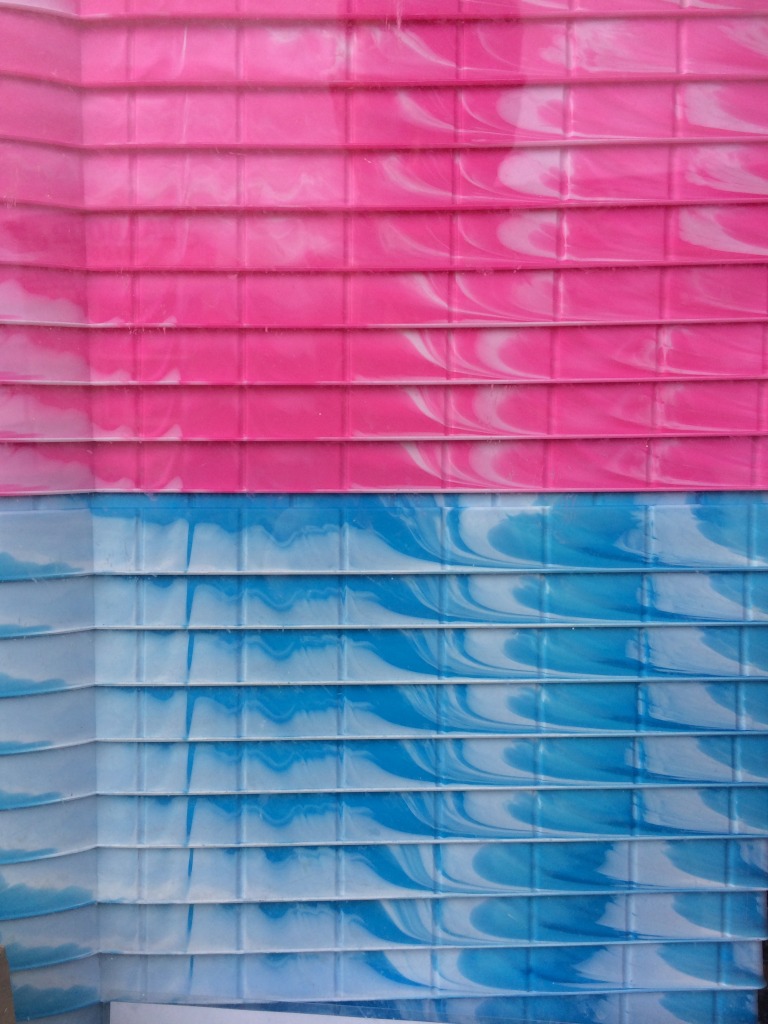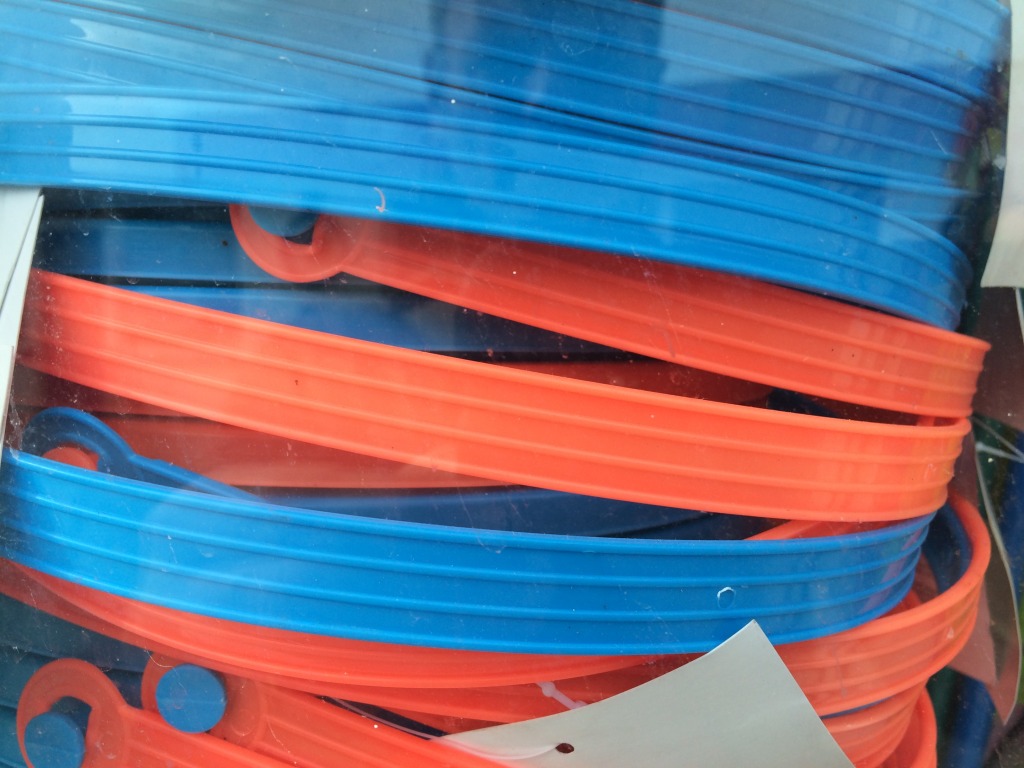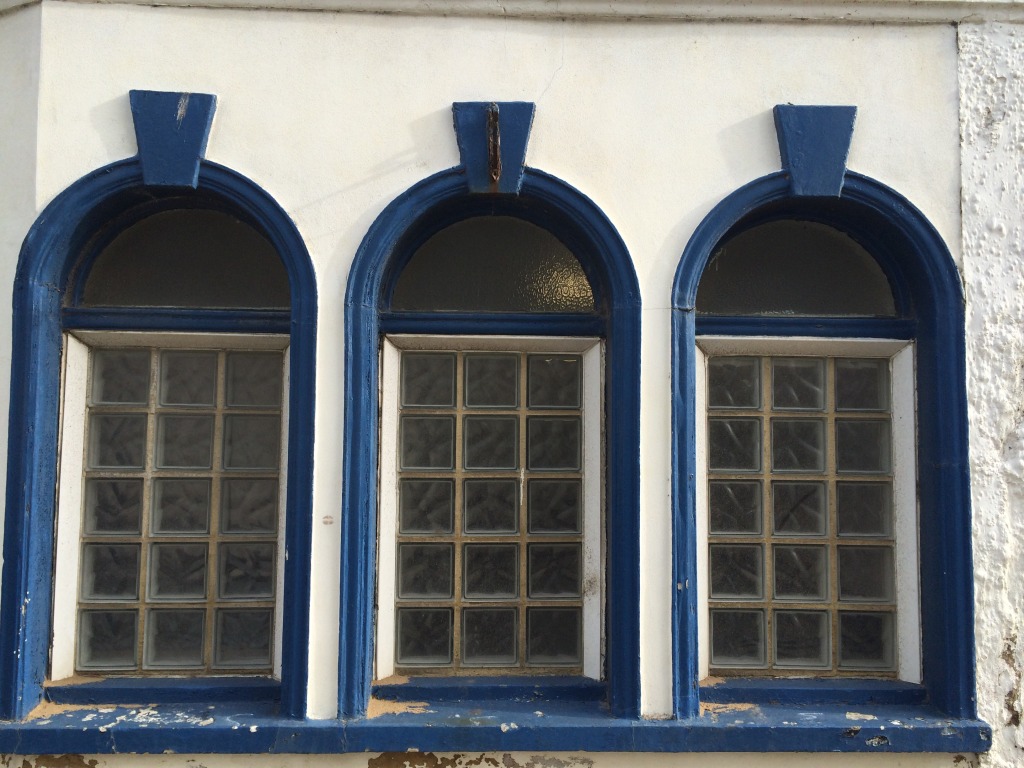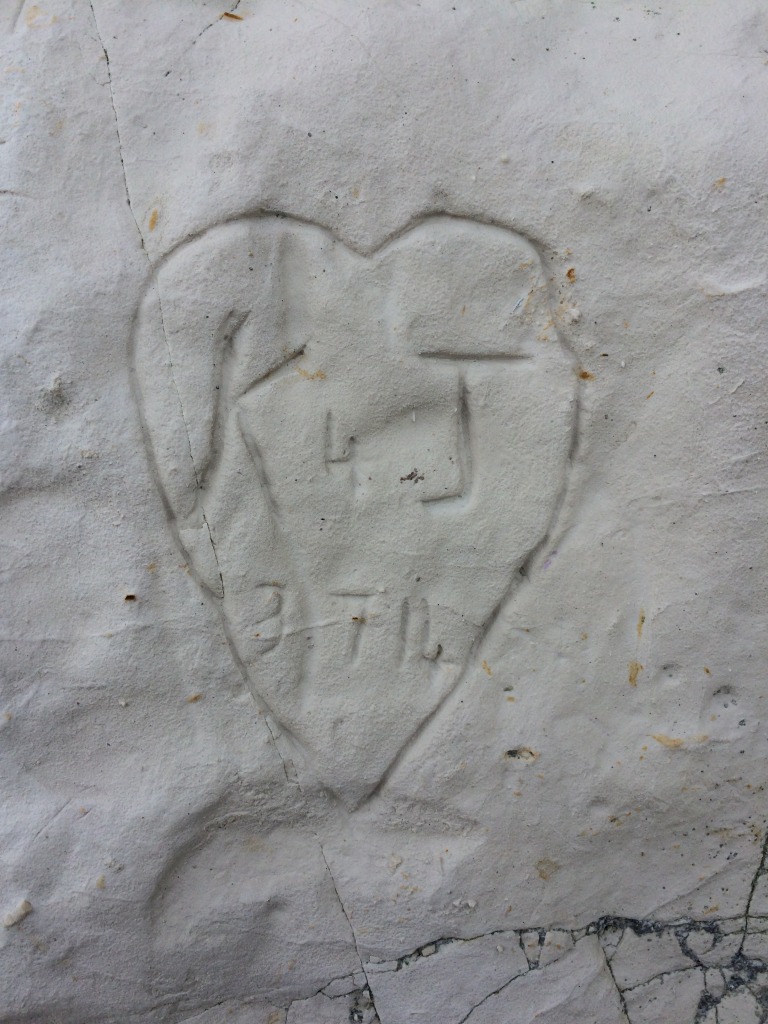Pan troglodytes, Pongo pygmaeus and Gorilla gorilla
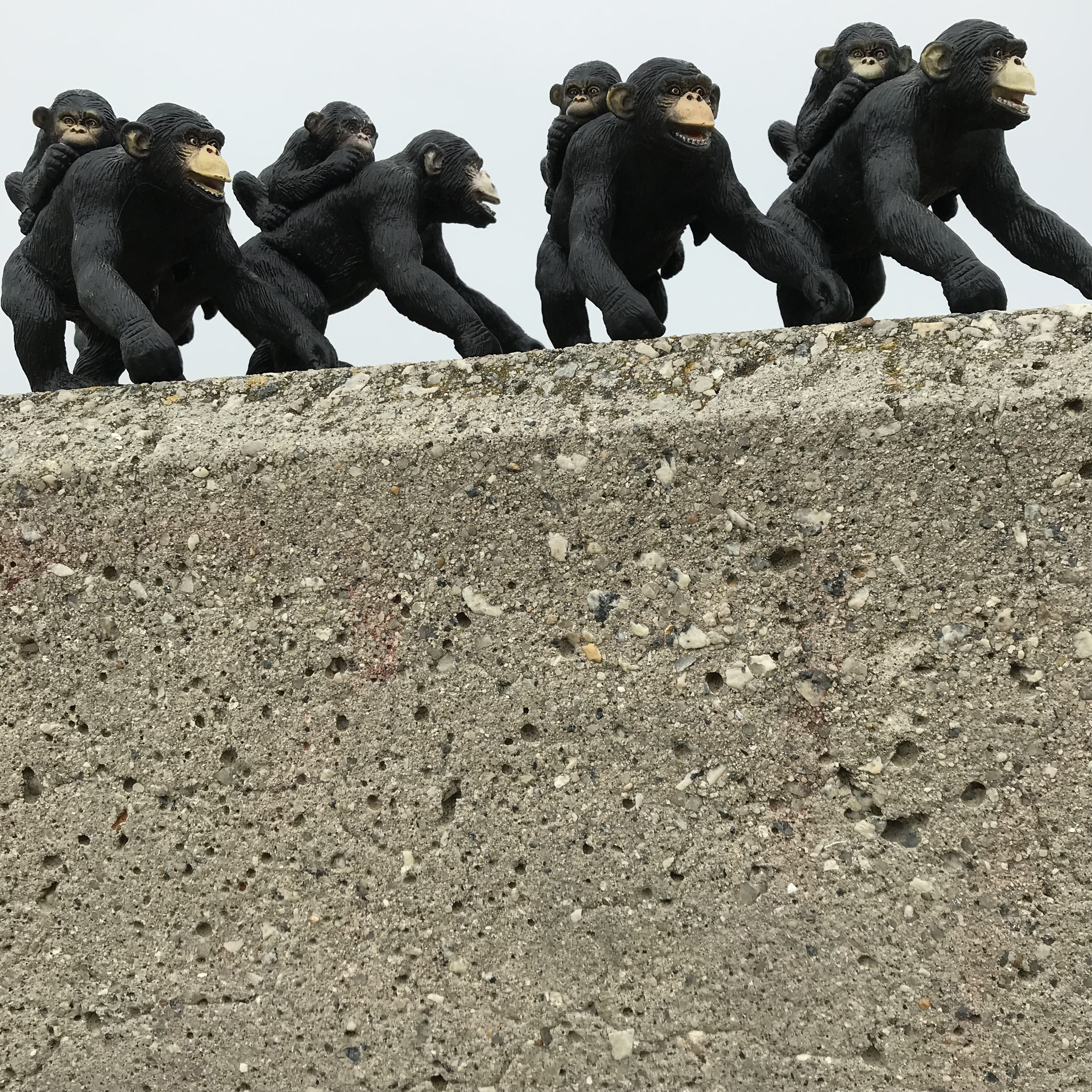
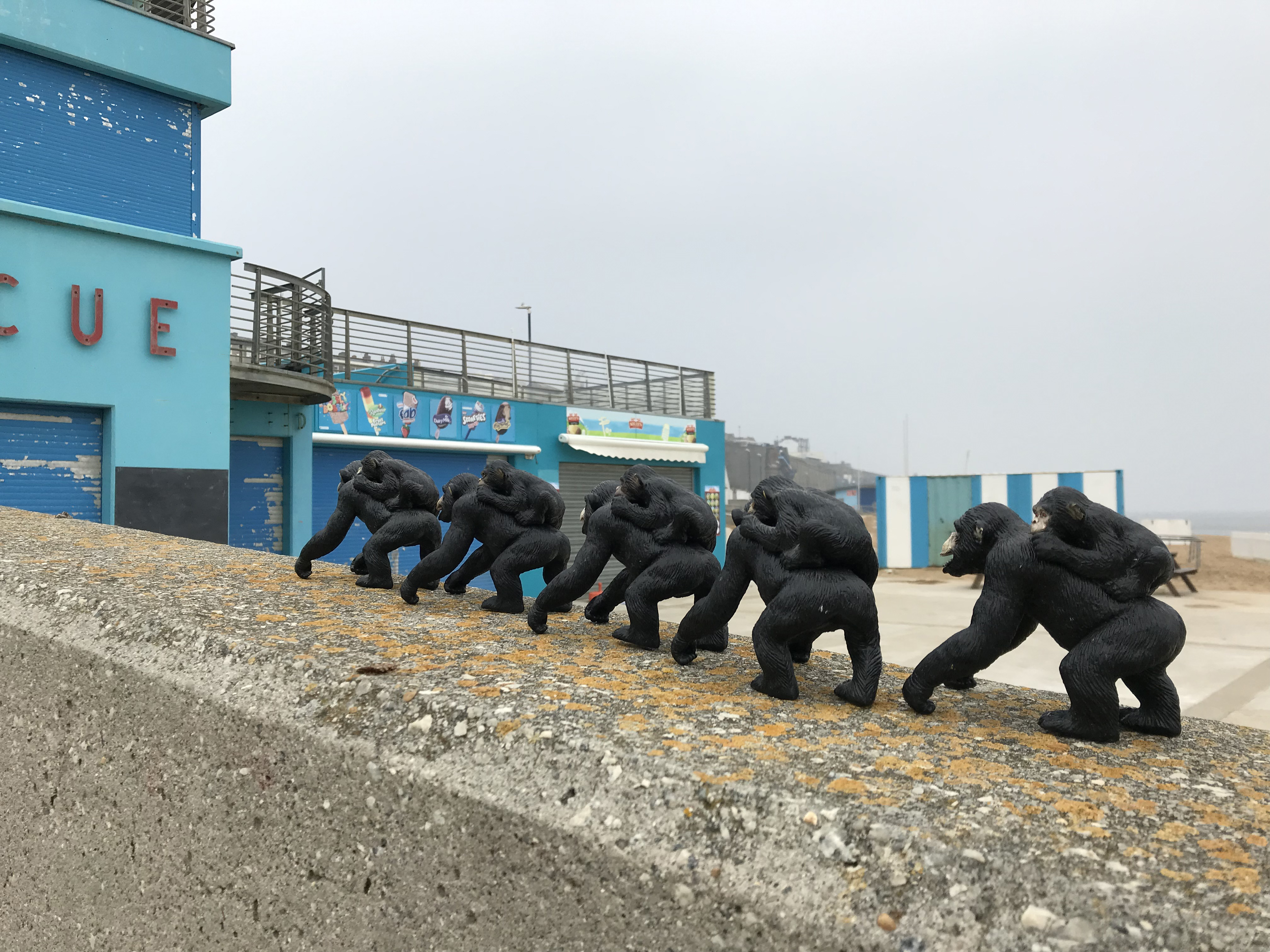
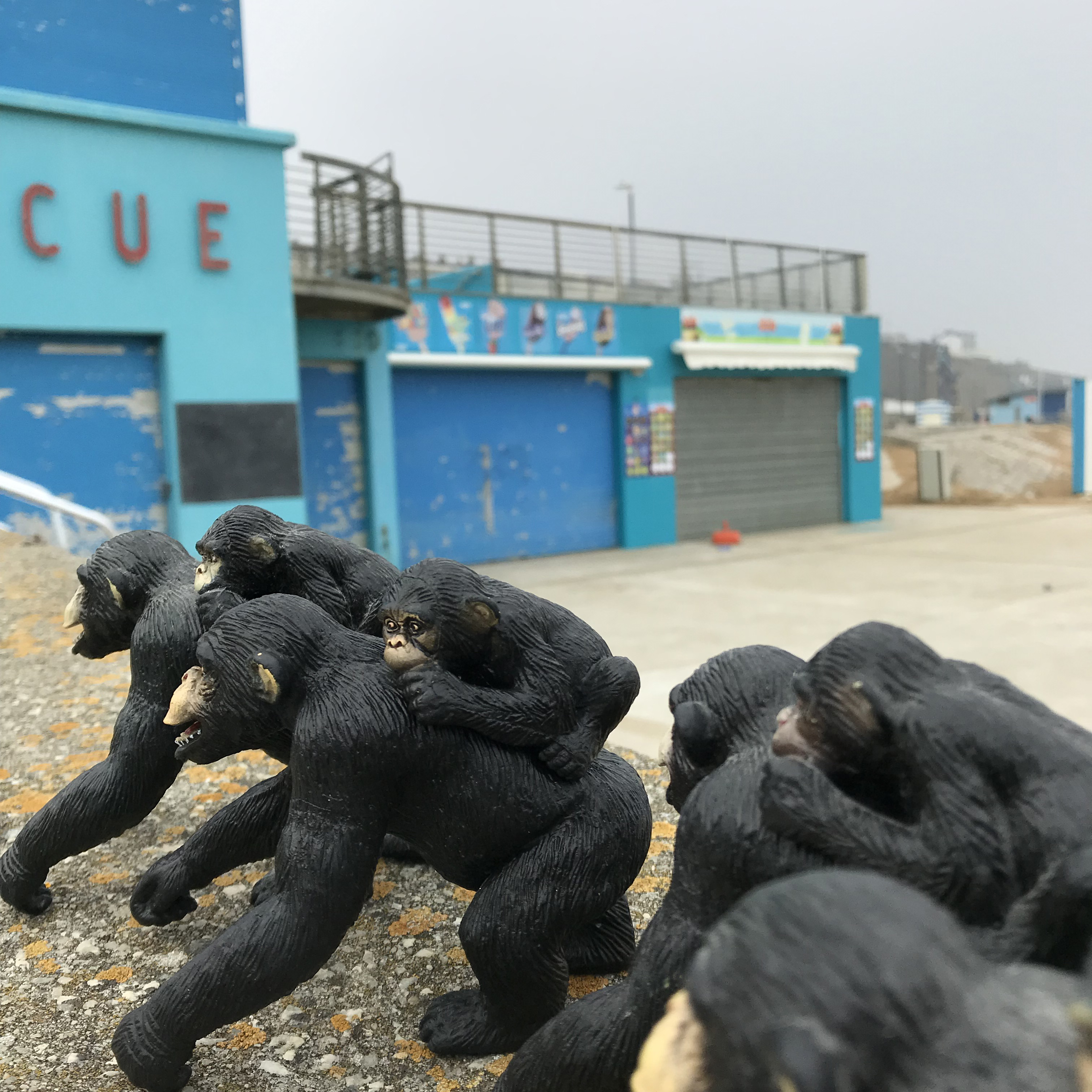
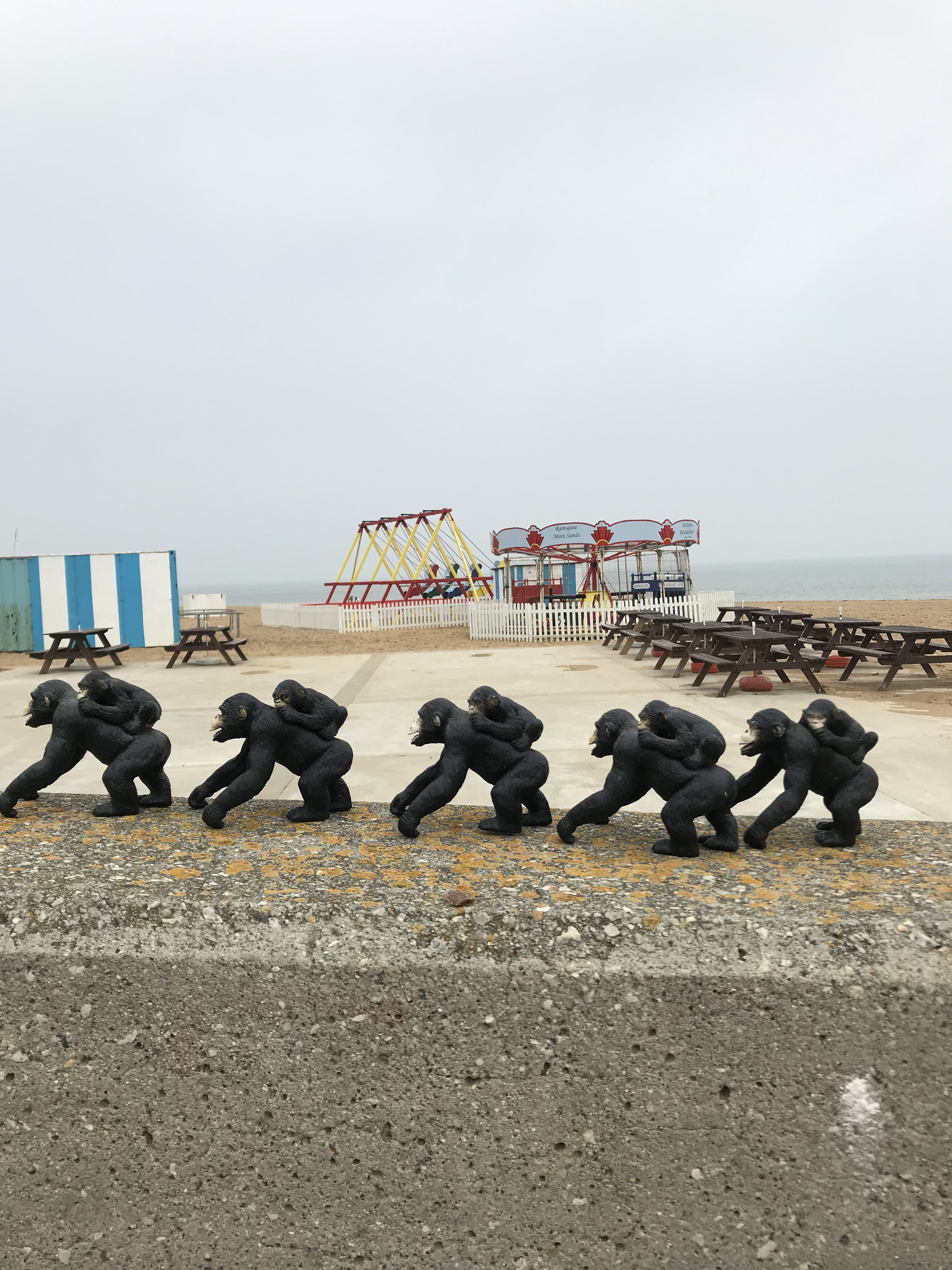
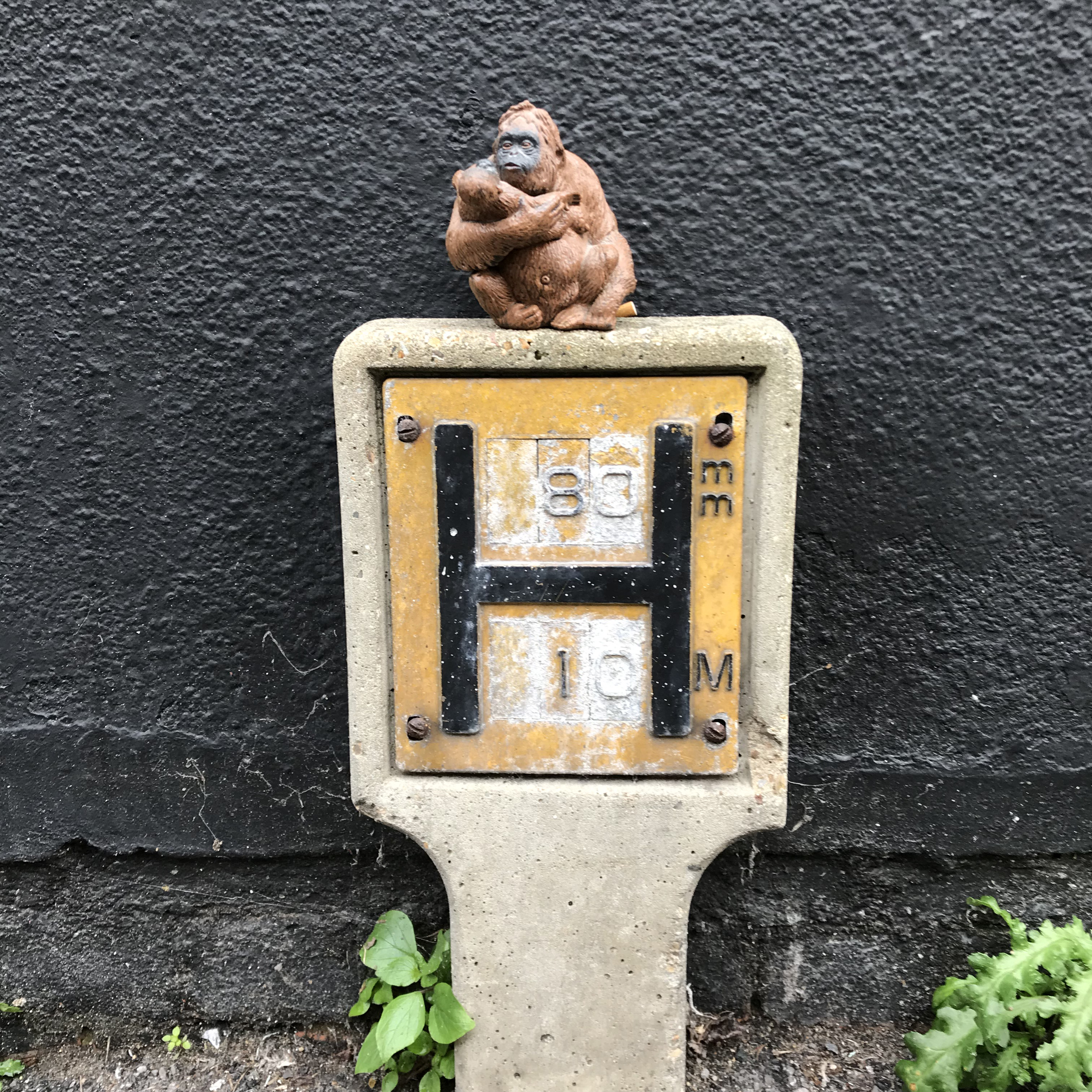
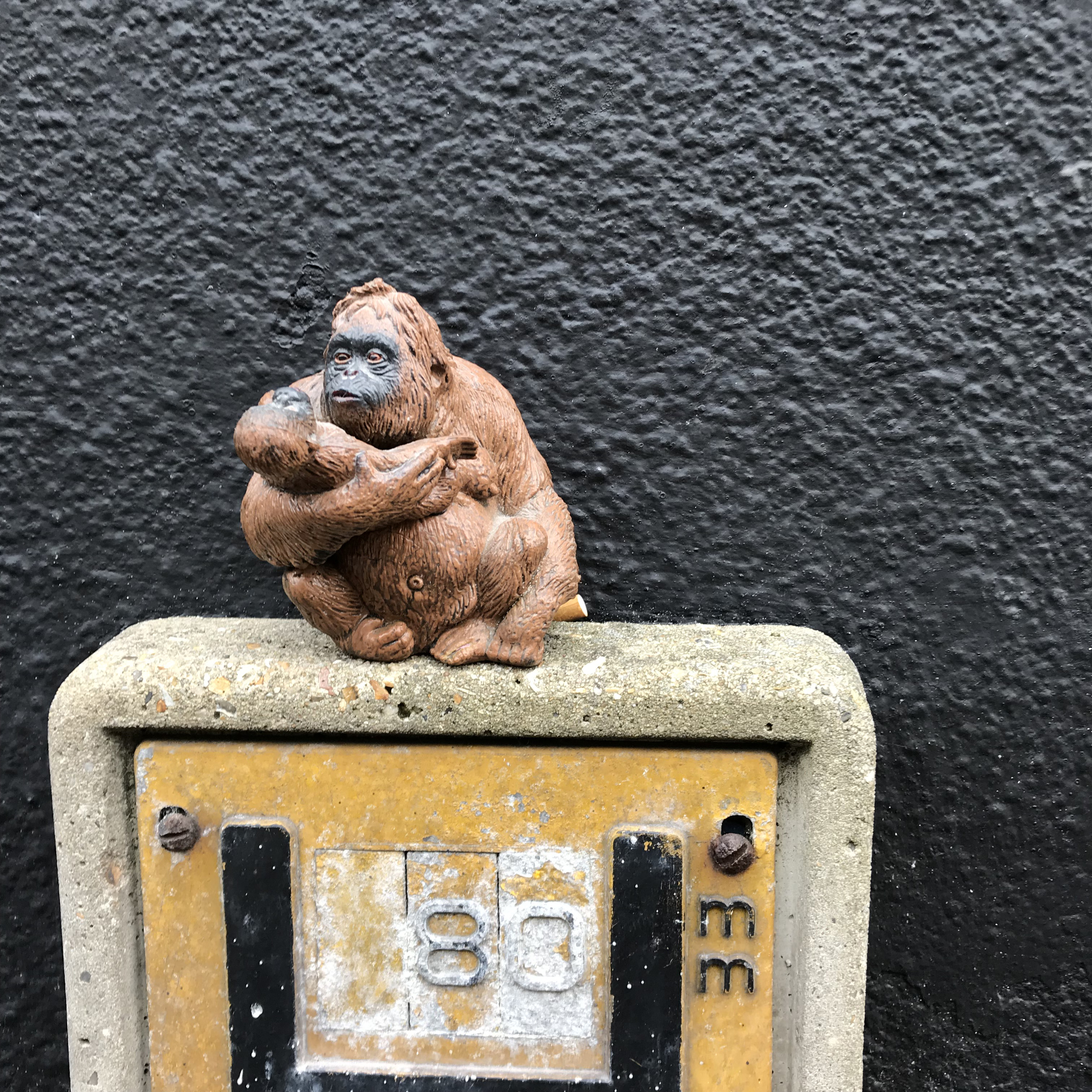



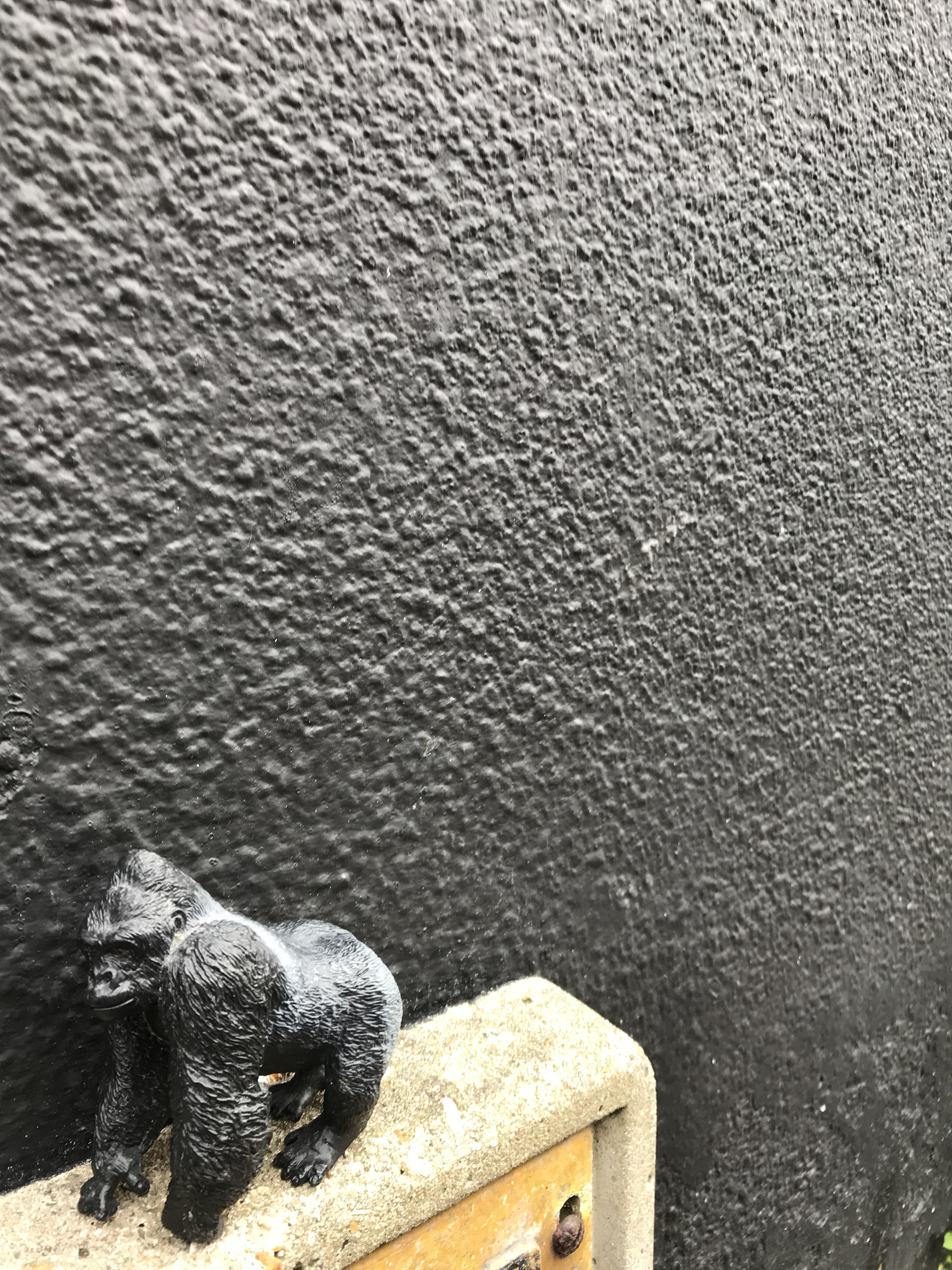
Pan troglodytes, Pongo pygmaeus and Gorilla gorilla










Stumped: Elephant herd marooned on Dumpton Park Drive
These images are part of the ongoing Animal Thanet project and installation / performance, which considers & reflects wider concerns I have for the natural world, particularly focussed on the lives of its wild animals, conservation, loss of habitat, diminishing numbers, poaching, trophy hunting, extinction and callous exploitation, which holds a mirror to our humanity. We may soon only have plastic versions of our wild neighbours to play with. The last decade has witnessed the slow & horrible realisation that our negative impact on the planet and particularly our plastic pollution of almost every environment, is a real-time catastrophe for the world around us.
A recently removed tree provides a stump as a refuge and island platform for these Elephants marooned above the pavement on Dumpton Park Drive. Habitat loss is a major issue in Elephant conservation. Human population growth means encroachment on wildlife. Loss of trees and forests leaves space for wildlife diminished and in smaller and smaller pockets or ‘island’ reserves. EleAid

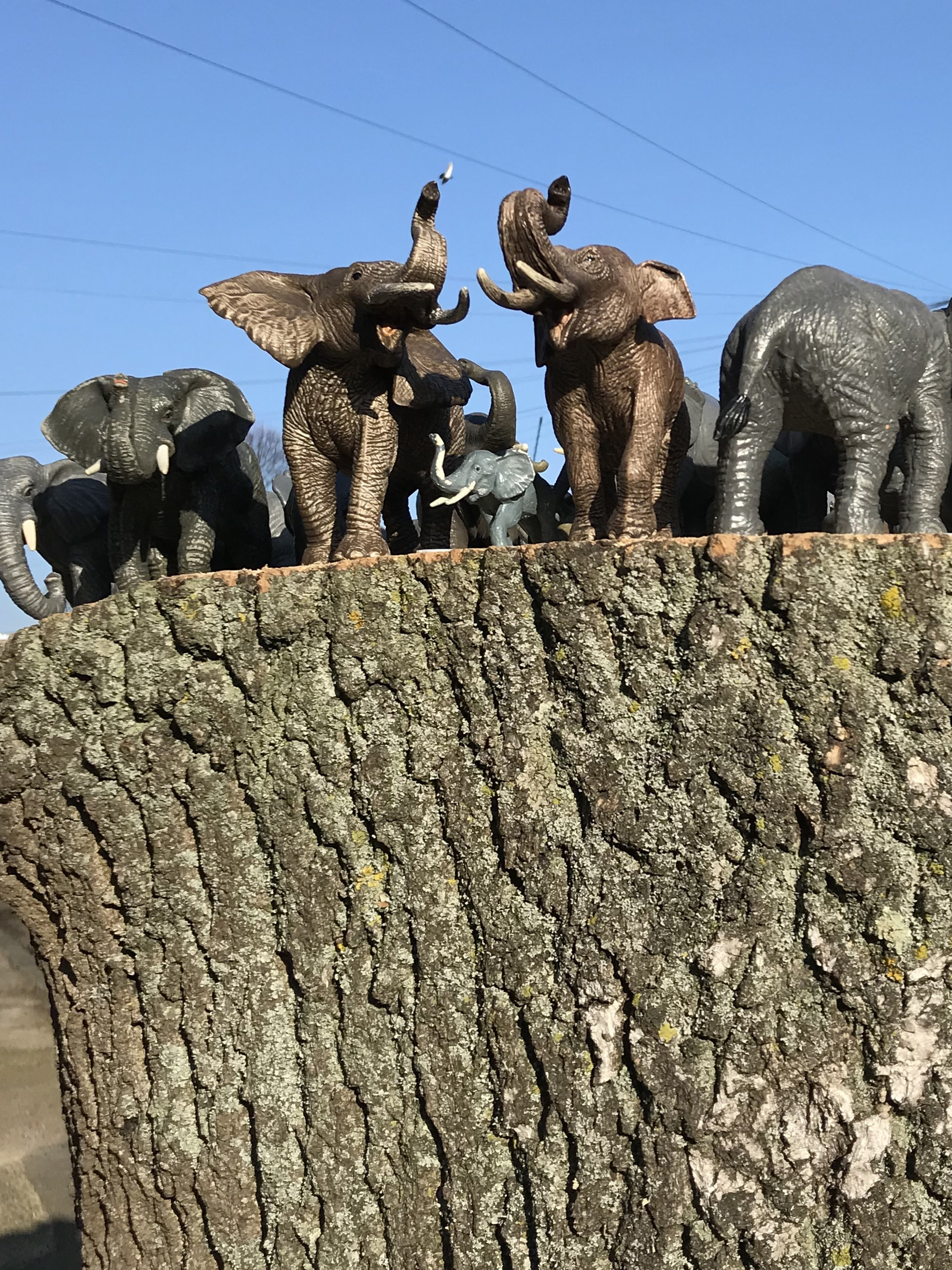
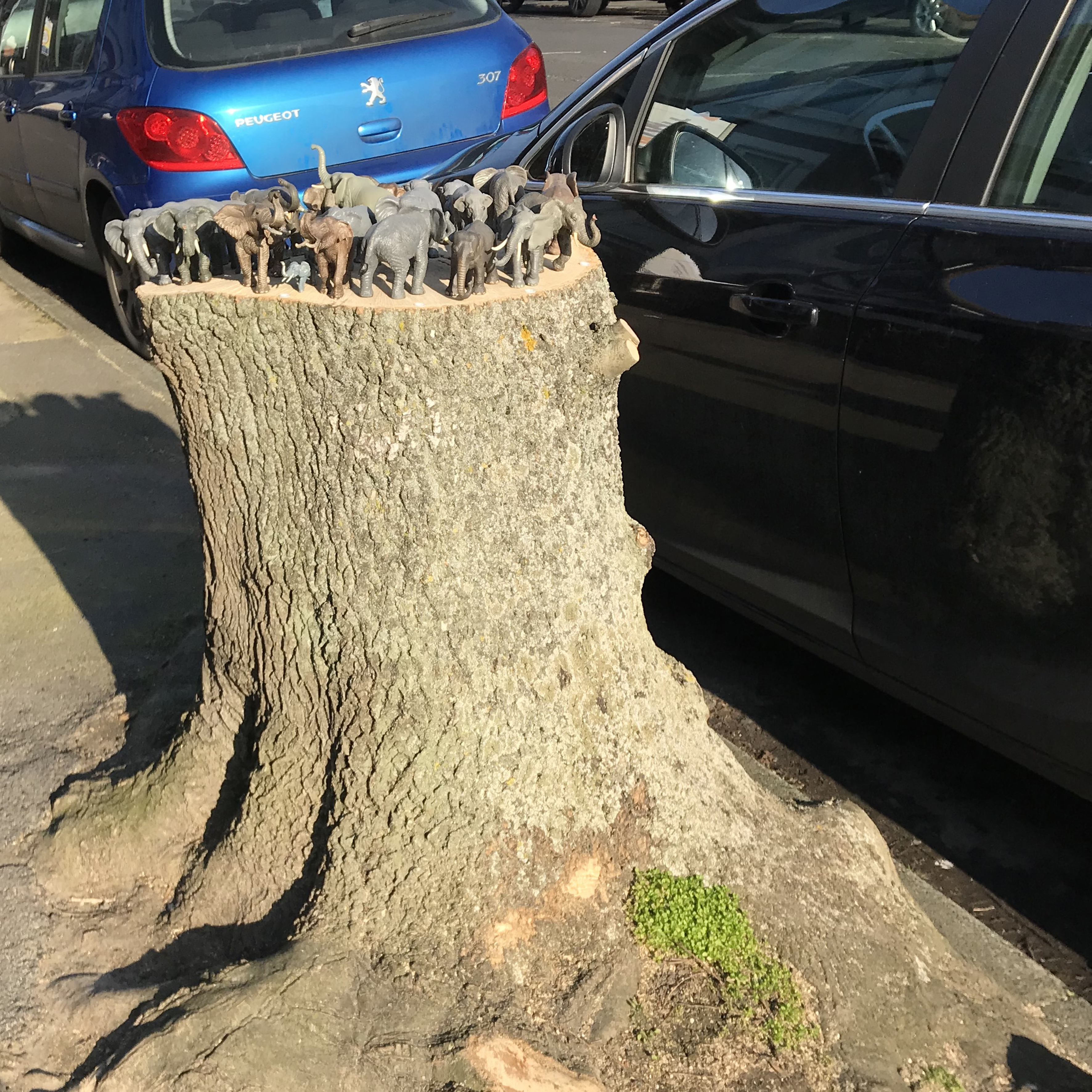
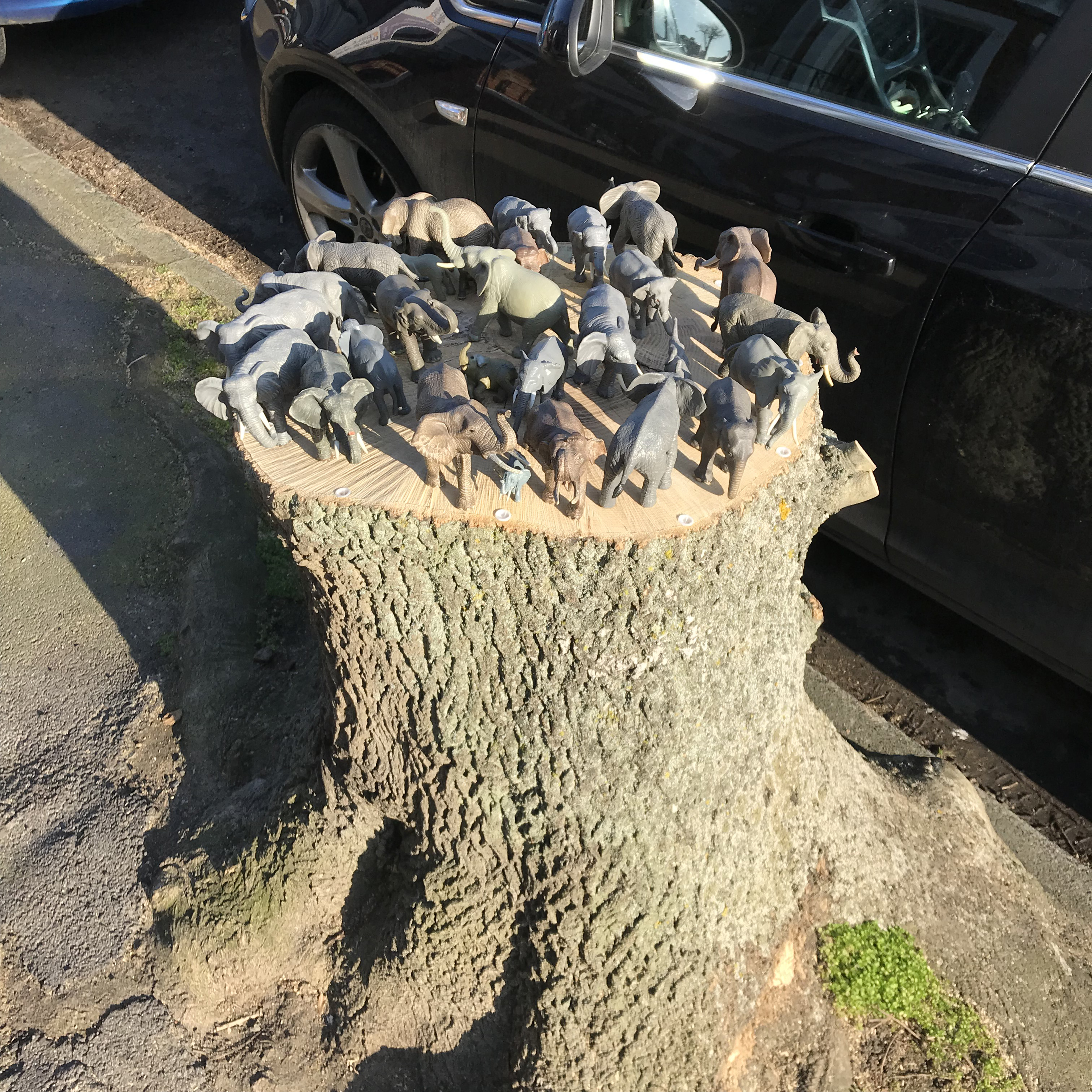
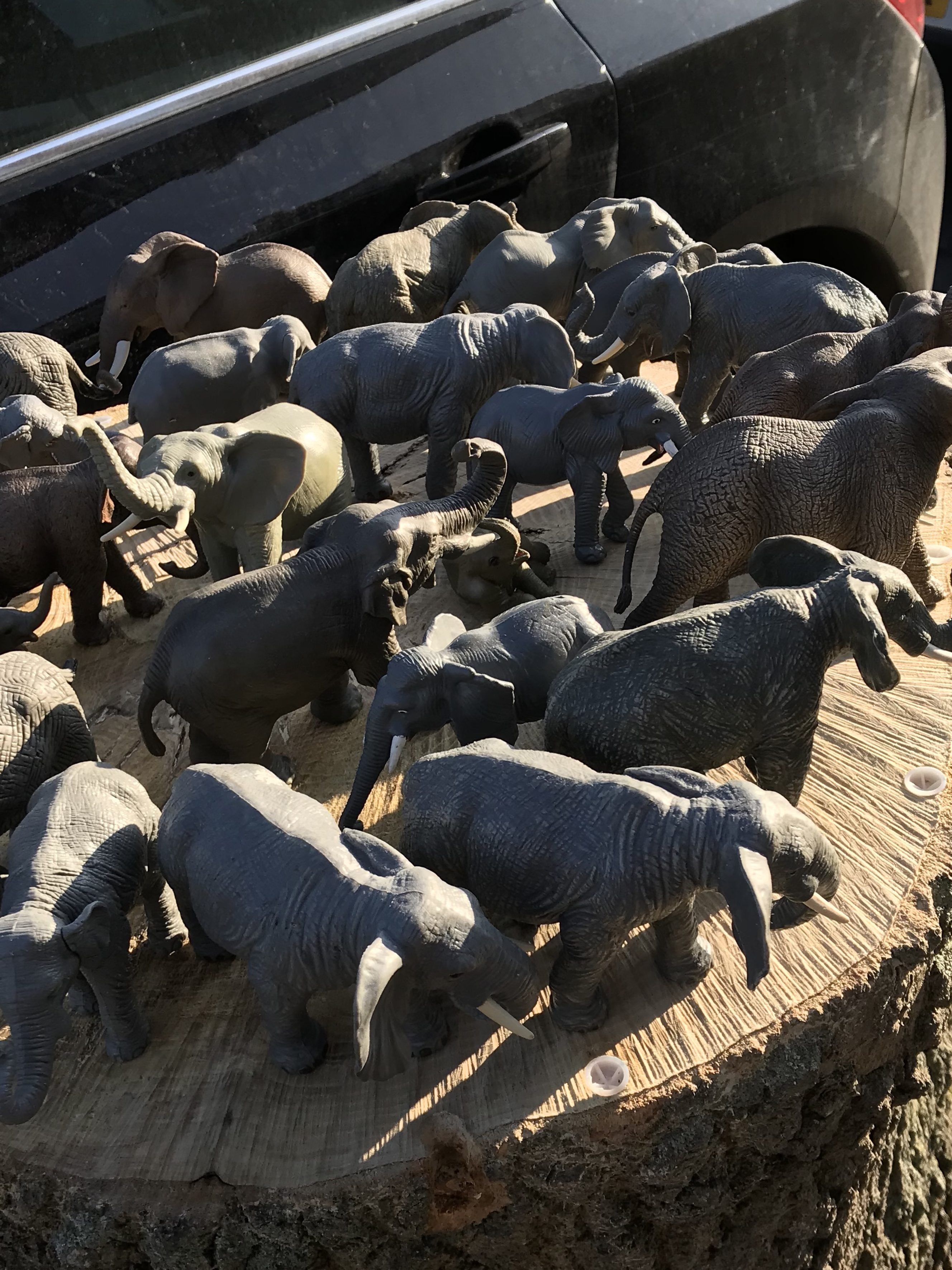
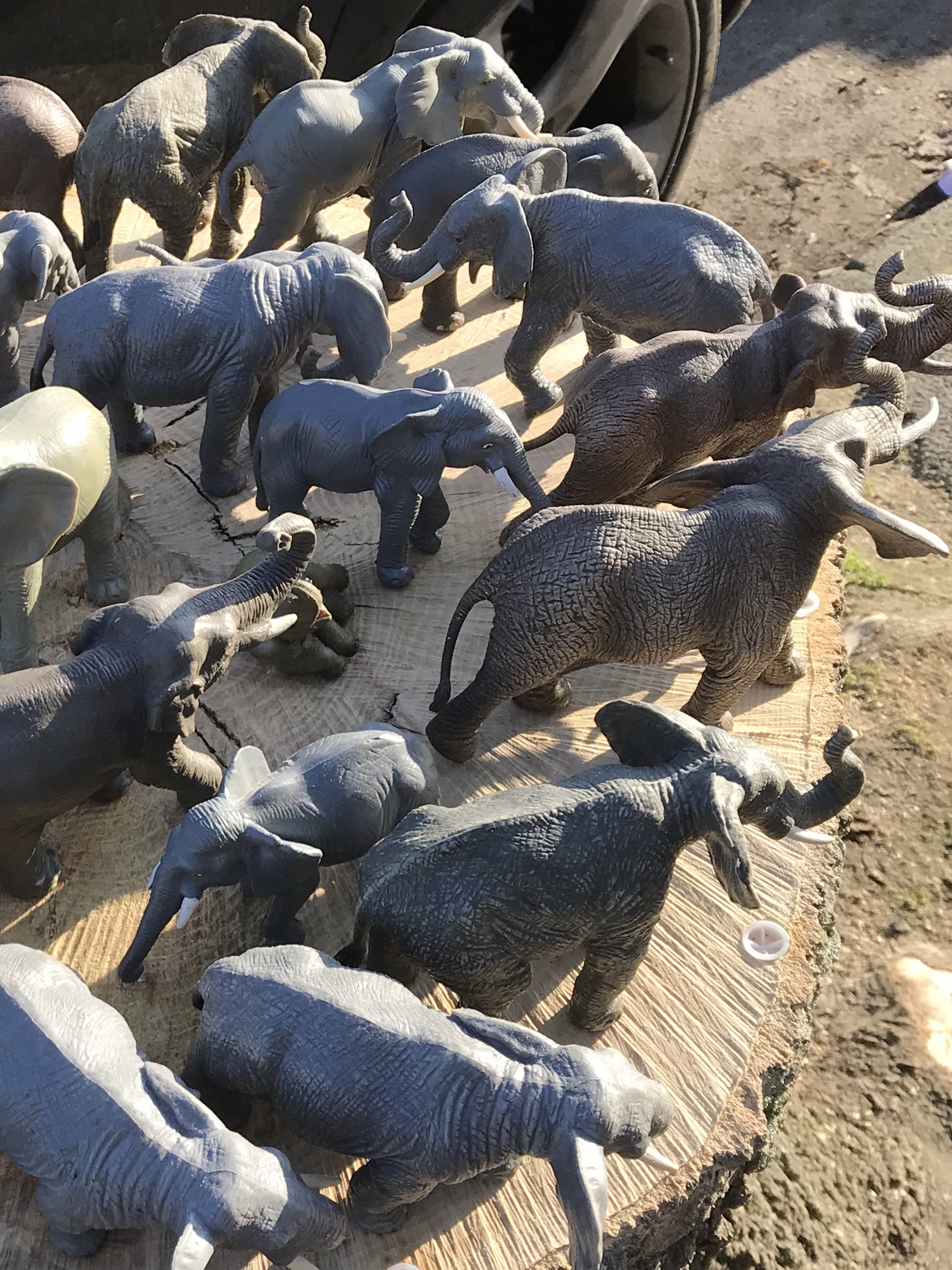
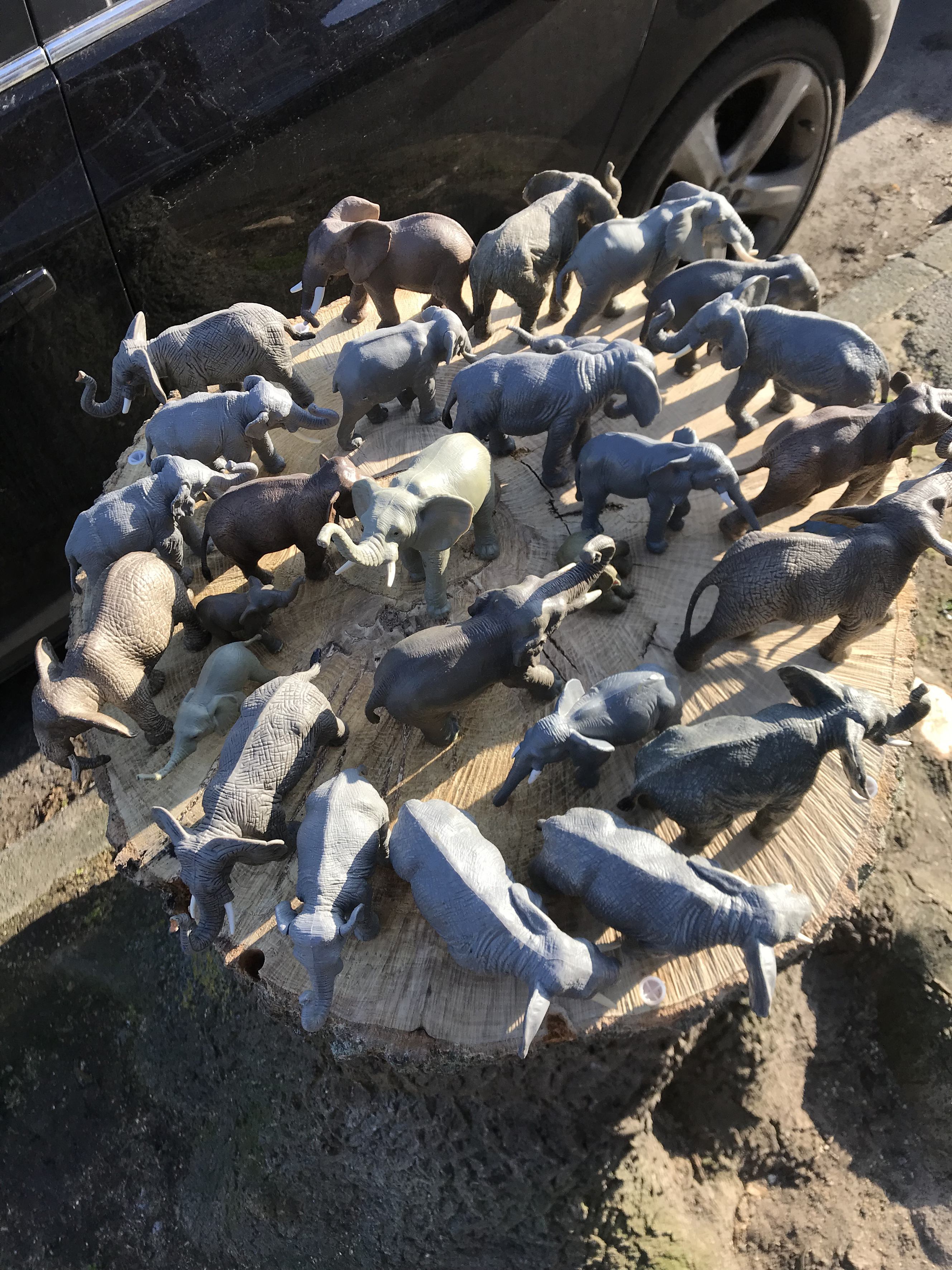
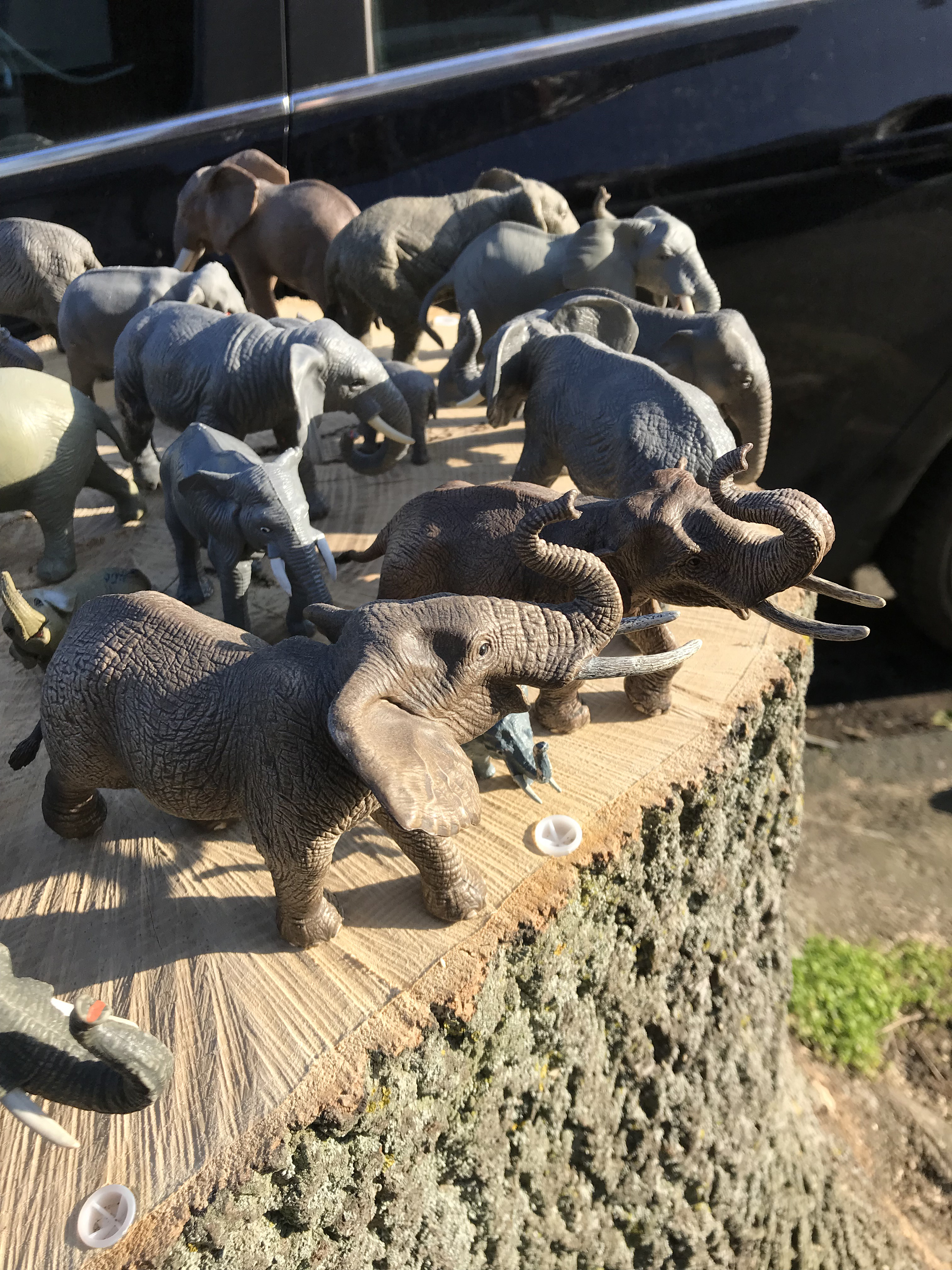
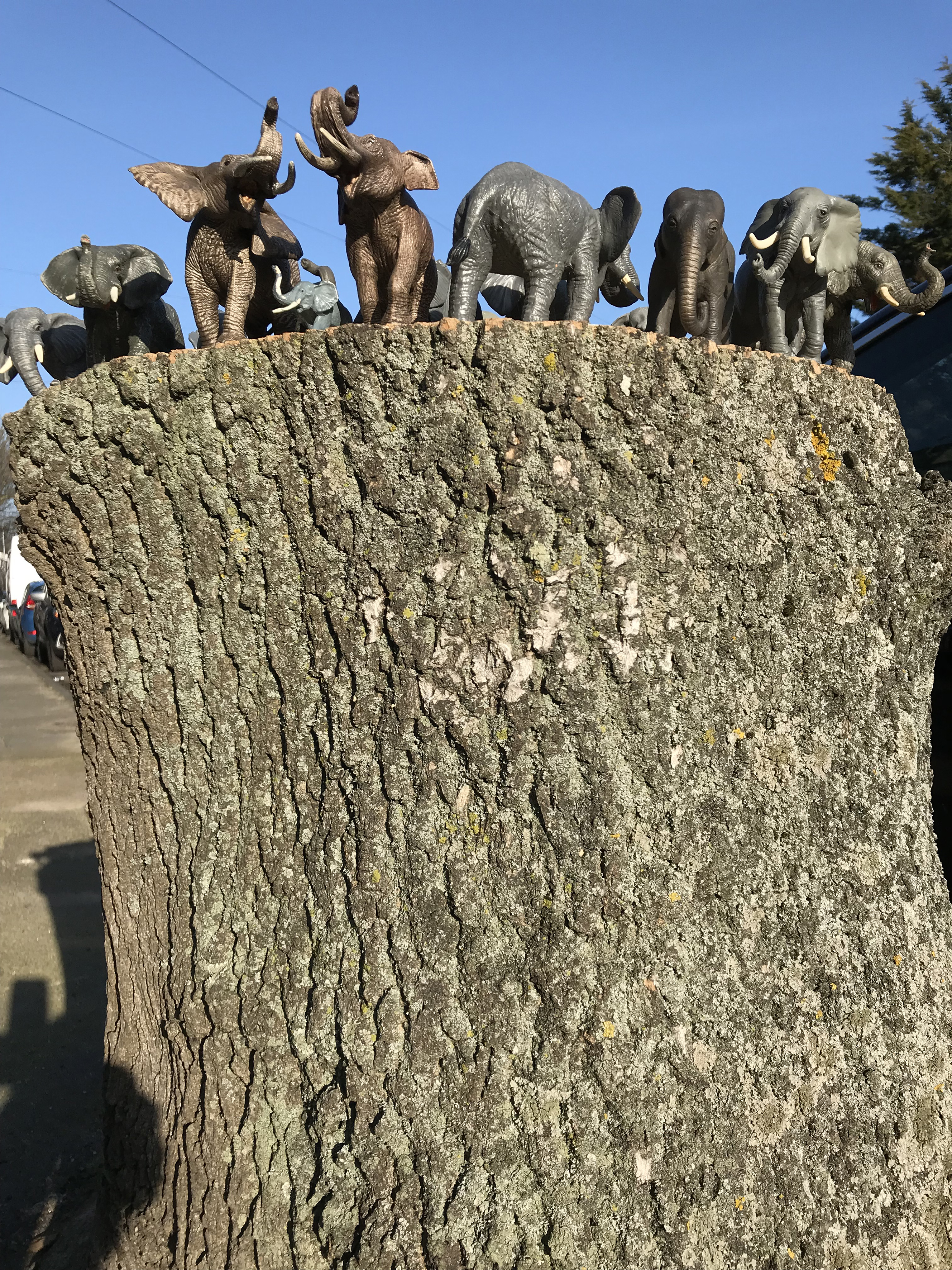
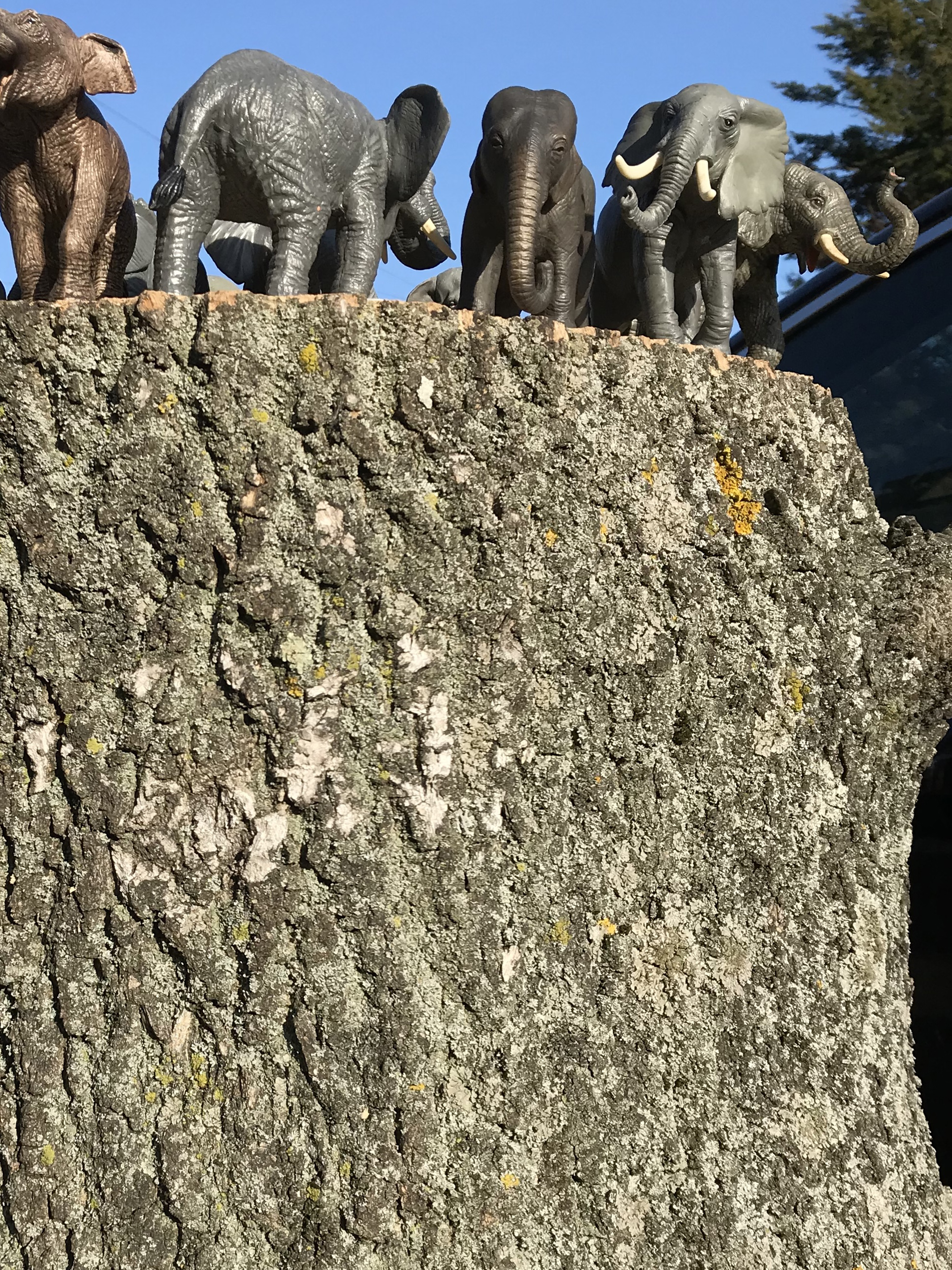
A haul-out of Nile Crocodiles – Crocodylus niloticus on Elms Avenue, Ramsgate.
These images are part of the ongoing Animal Thanet project and installation / performance, which considers & reflects wider concerns I have for the natural world, particularly focussed on the lives of its wild animals, conservation, loss of habitat, diminishing numbers, poaching, trophy hunting, extinction and callous exploitation, which holds a mirror to our humanity. We may soon only have plastic versions of our wild neighbours to play with. The last decade has witnessed the slow & horrible realisation that our negative impact on the planet and particularly our plastic pollution of almost every environment, is a real-time catastrophe for the world around us.

Above: Crocodiles haul out by a rainwater pool caught in the tarpaulin of a trailer parked on Elms Avenue.

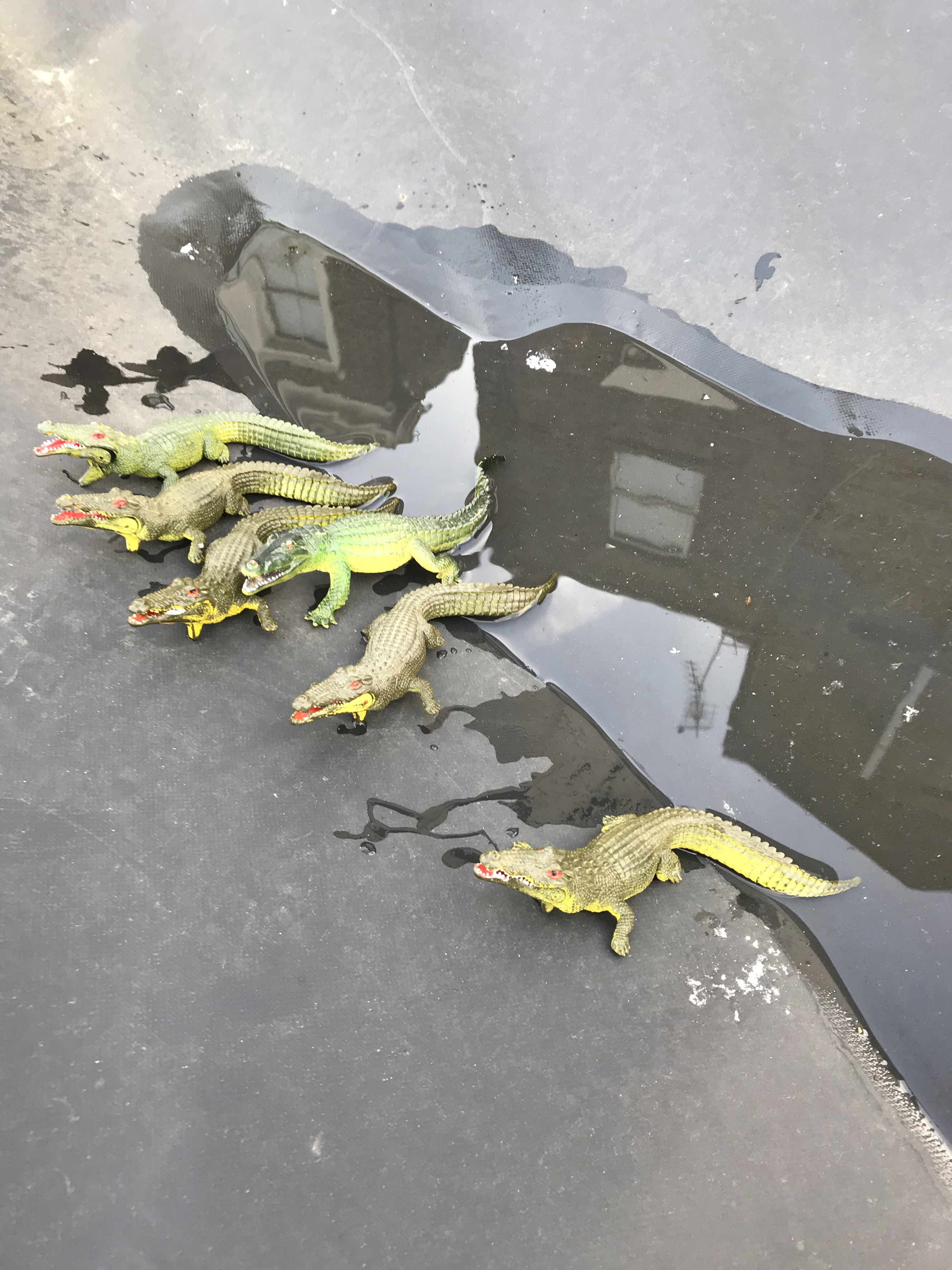

A walk from Herne Bay to Birchington at Low Tide with two Arabian Oryx and an African Elephant – February 2019
These images are part of the ongoing Animal Thanet project and installation / performance, which considers & reflects wider concerns I have for the natural world, particularly focussed on the lives of its wild animals, conservation, loss of habitat, diminishing numbers, poaching, trophy hunting, extinction and callous exploitation, which holds a mirror to our humanity. We may soon only have plastic versions of our wild neighbours to play with. The last decade has witnessed the slow & horrible realisation that our negative impact on the planet and particularly our plastic pollution of almost every environment, is a real-time catastrophe for the world around us.
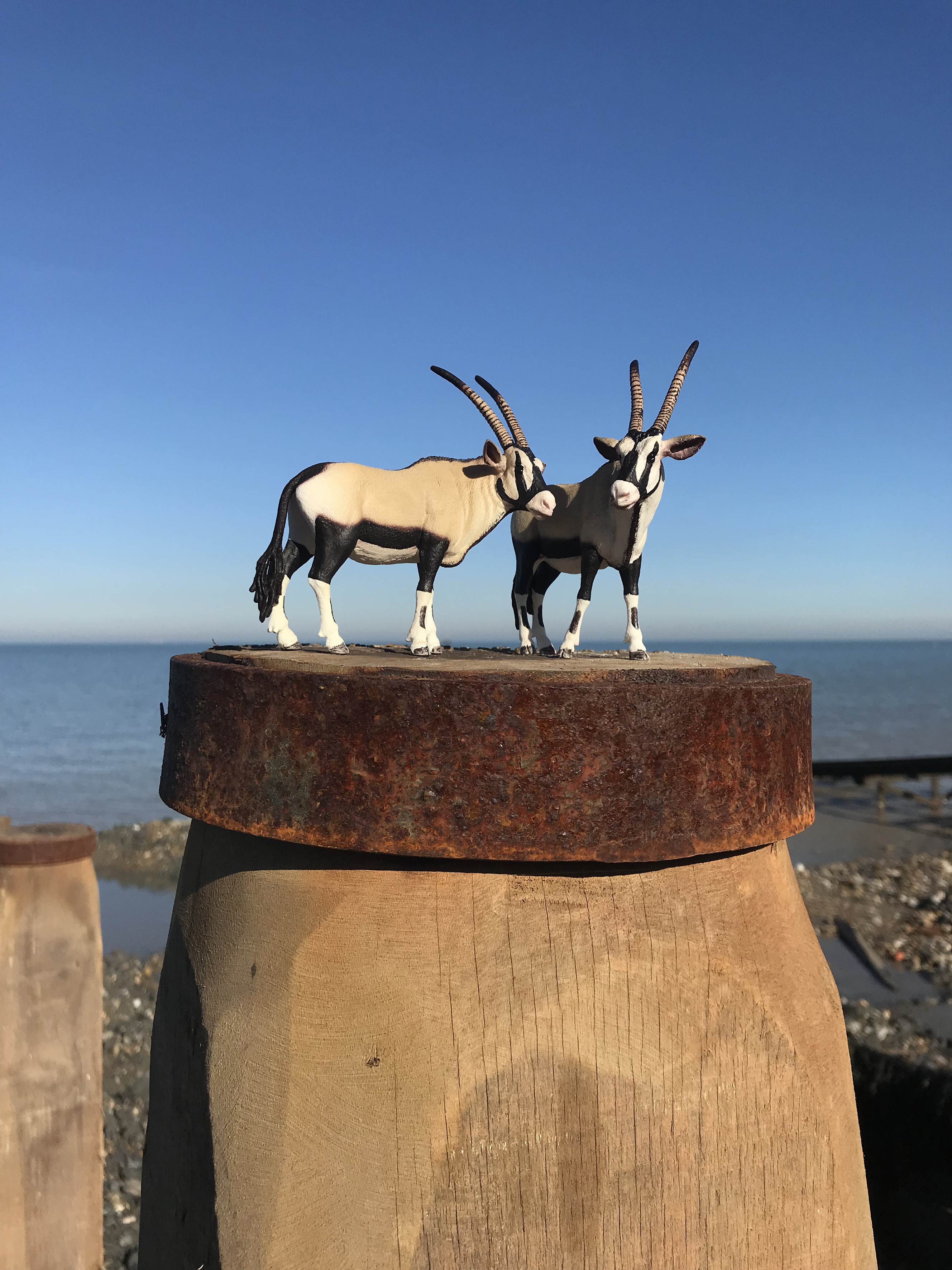
Above: Arabian Oryx – Oryx leucoryx at Herne Bay

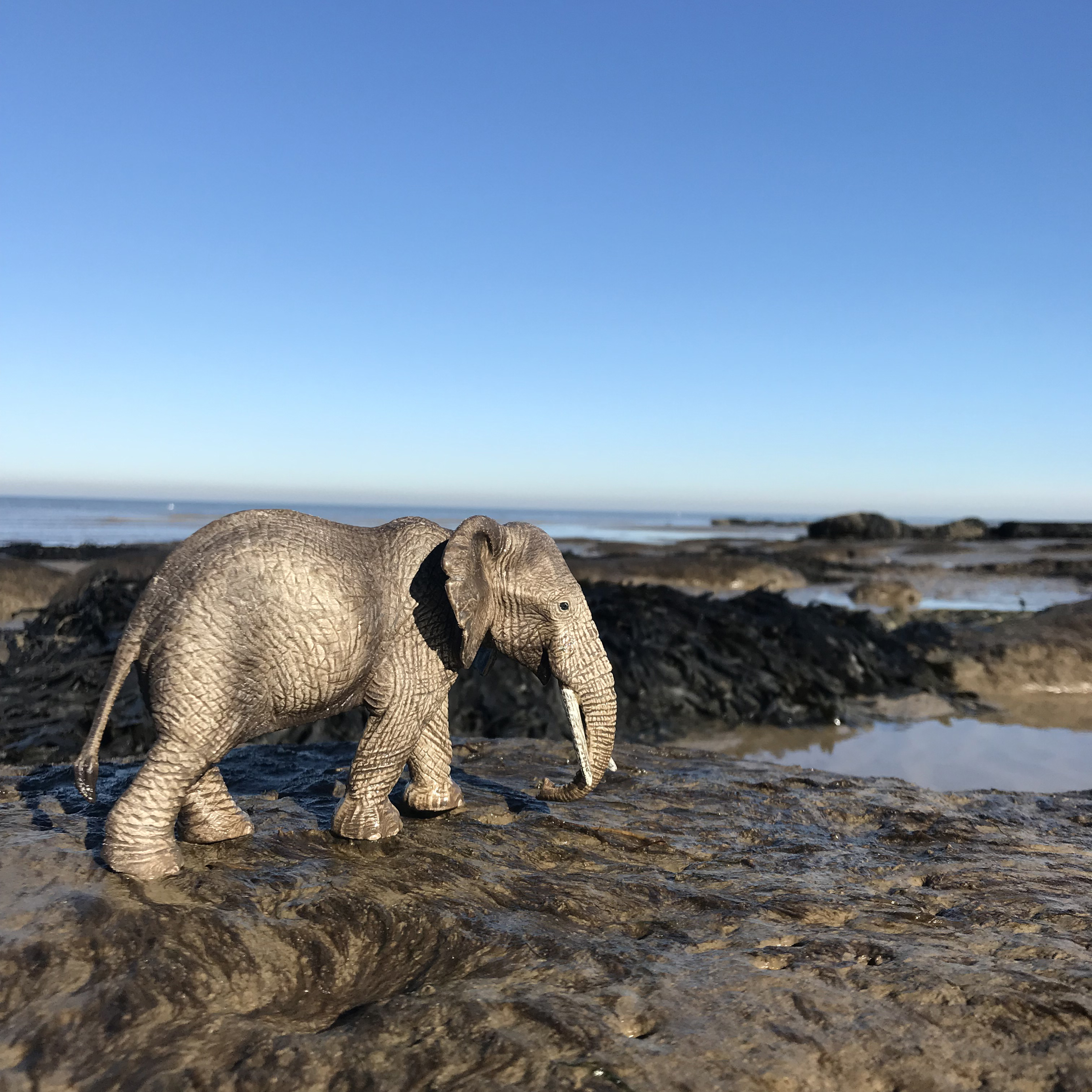
Above: African Elephant – L. africana at Herne Bay
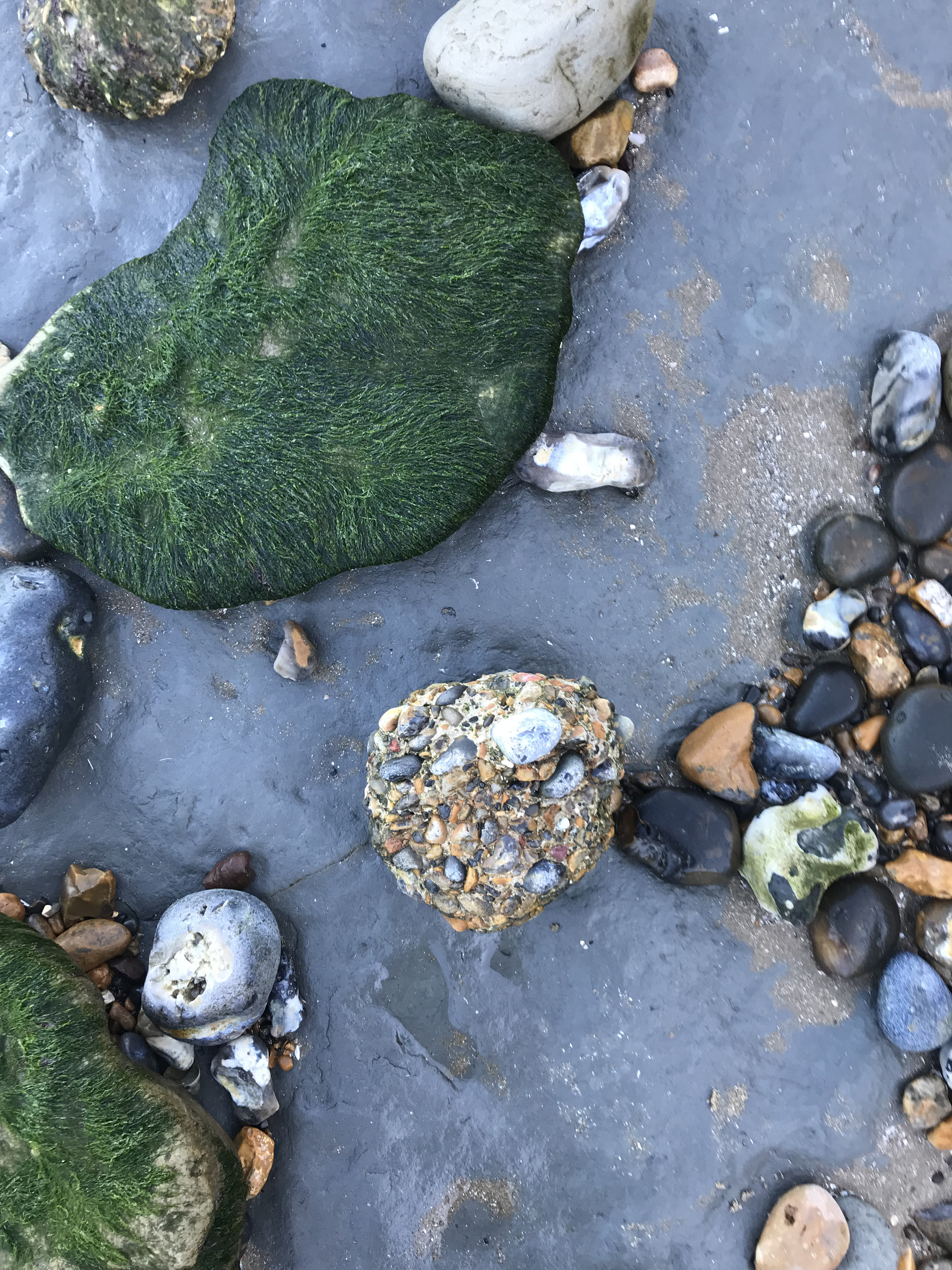
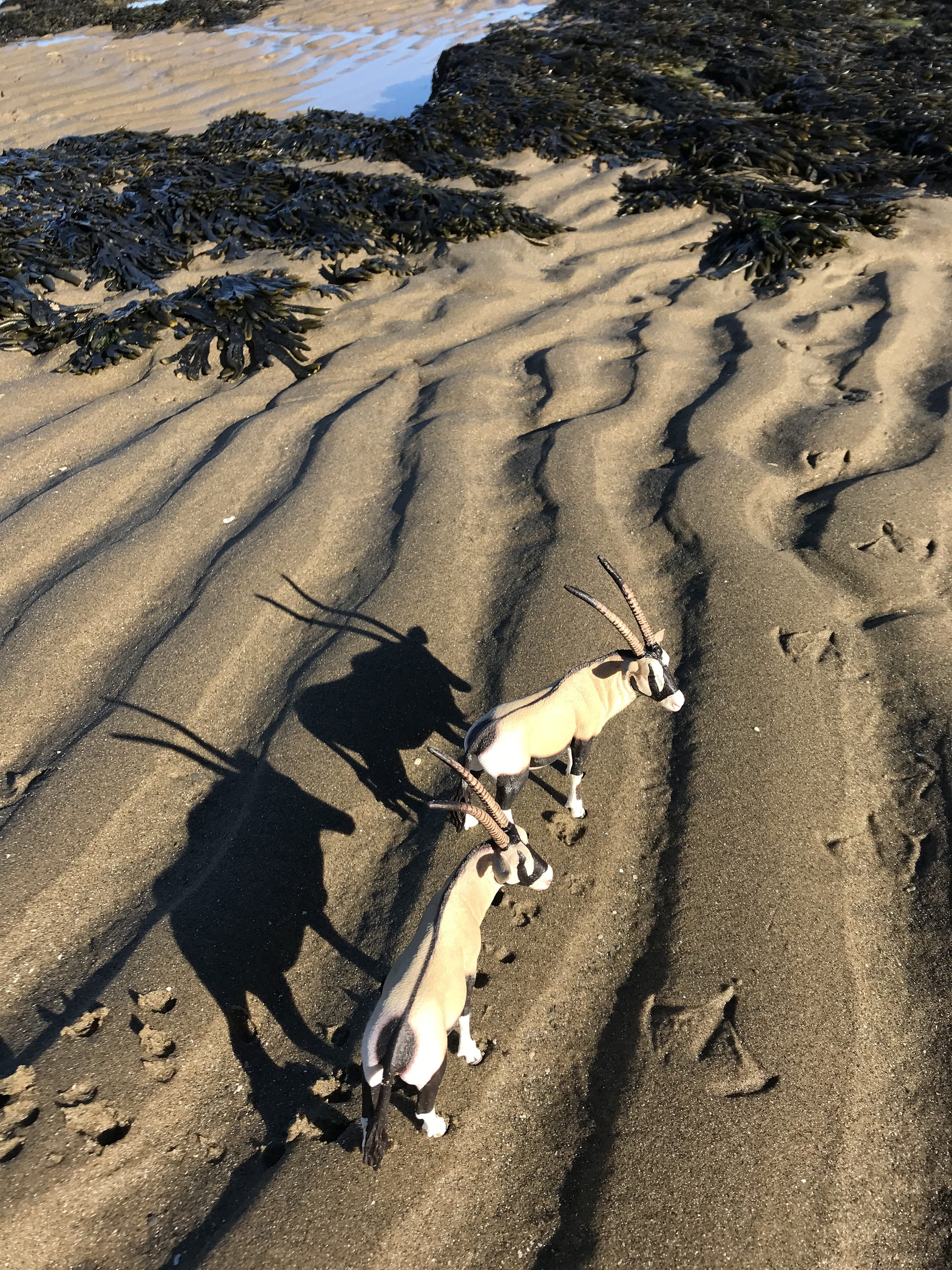
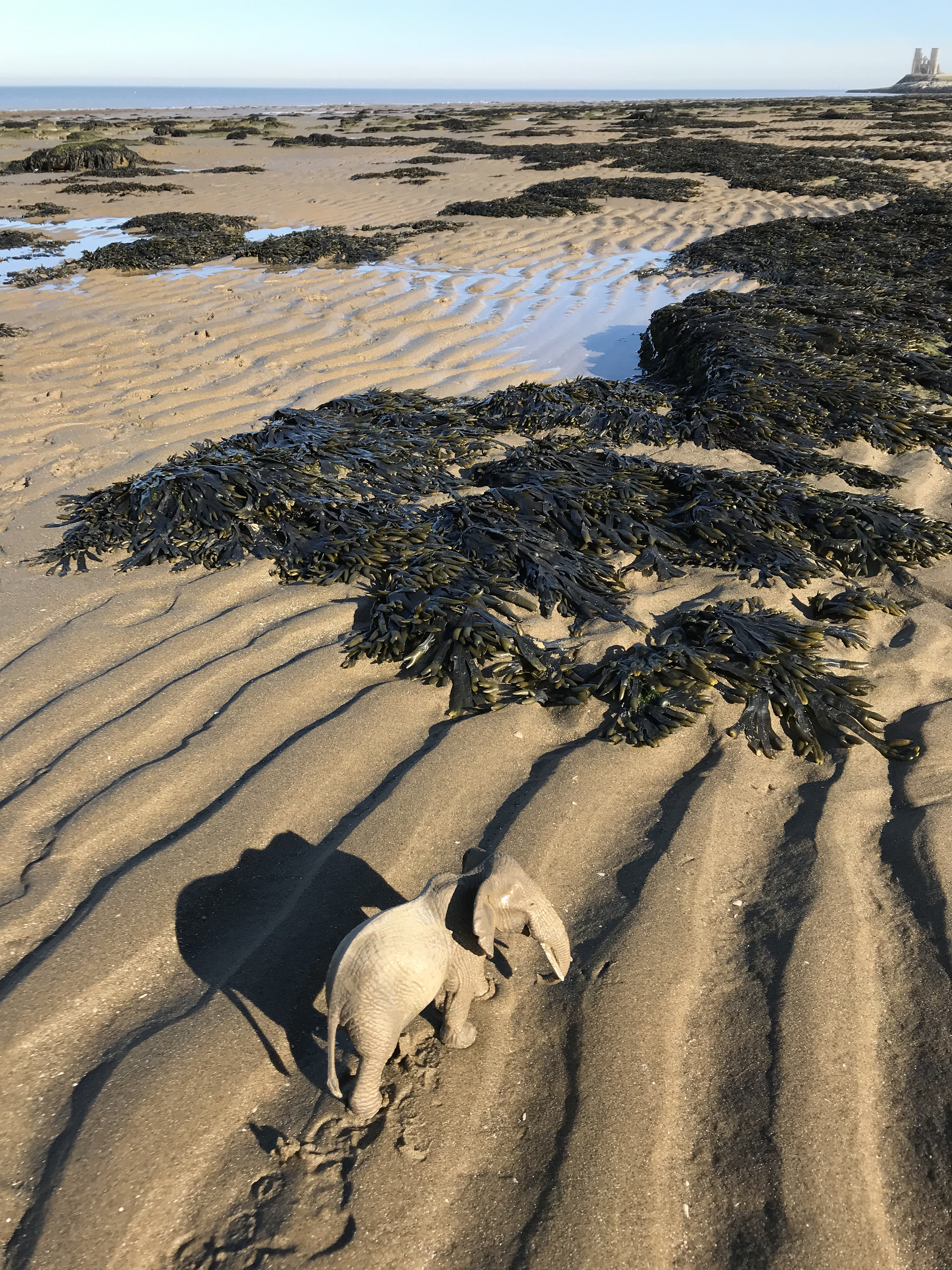
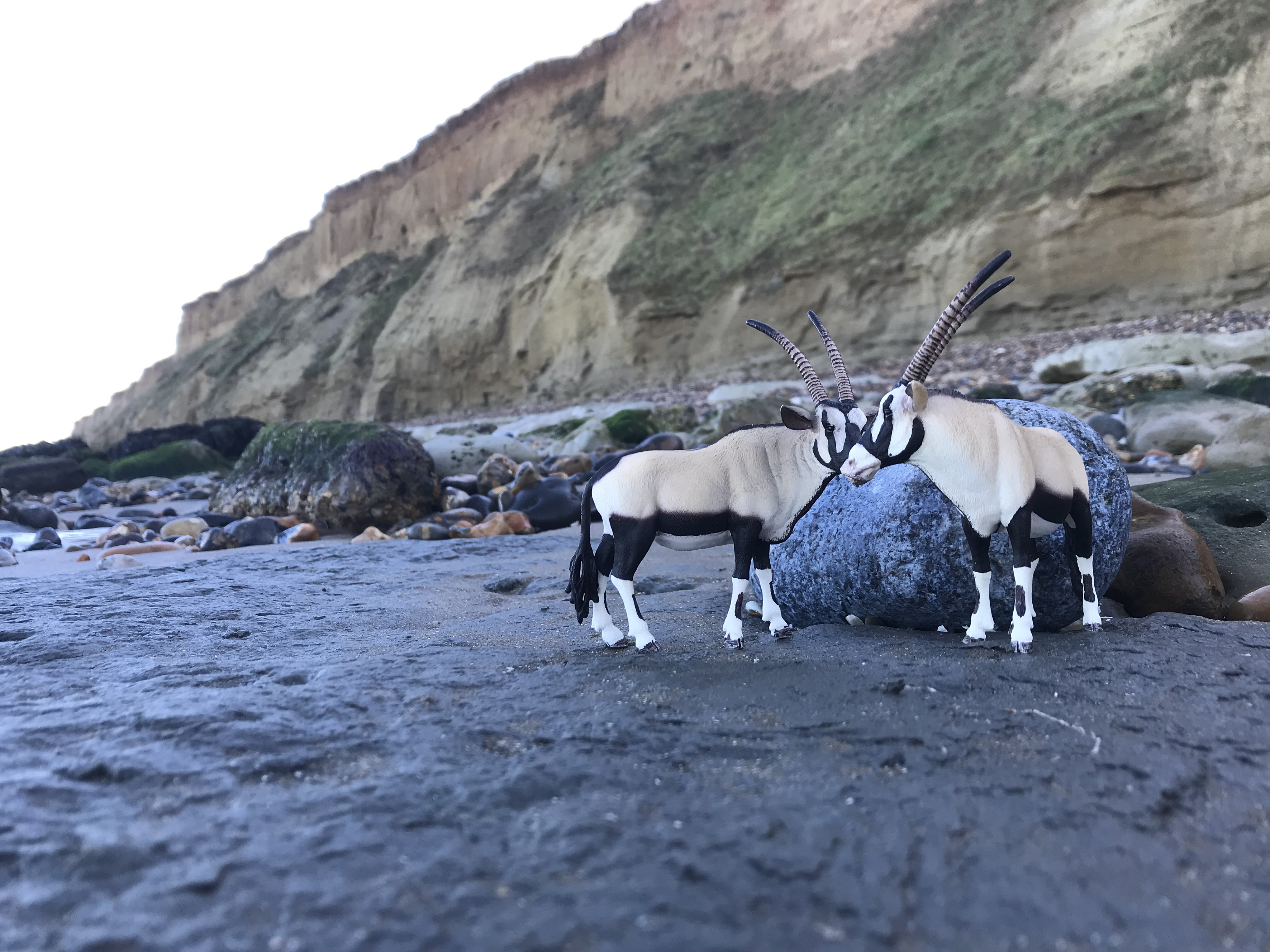
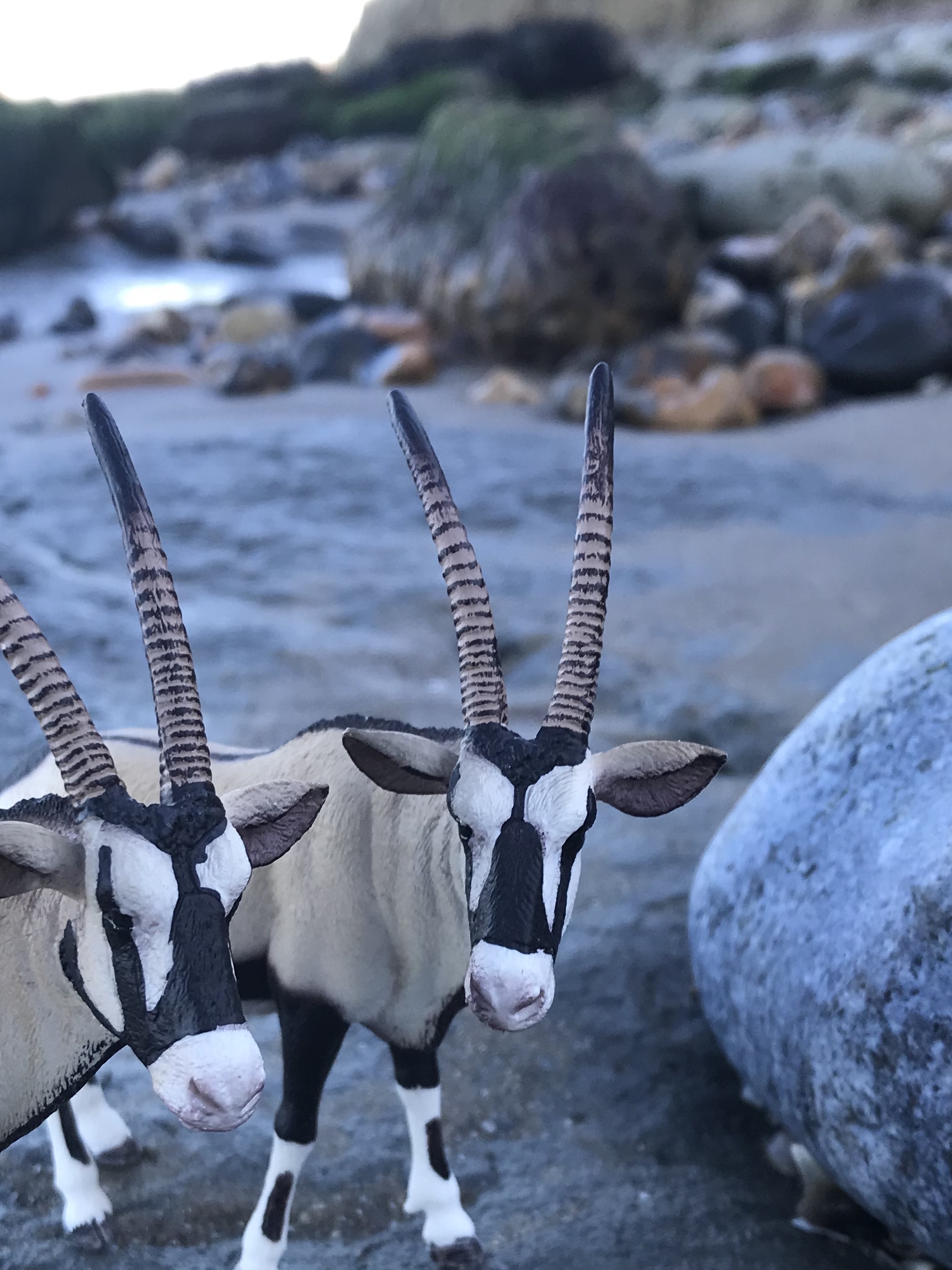
Above: Views towards Reculver.

Above & Below: Oryx at Minnis Bay
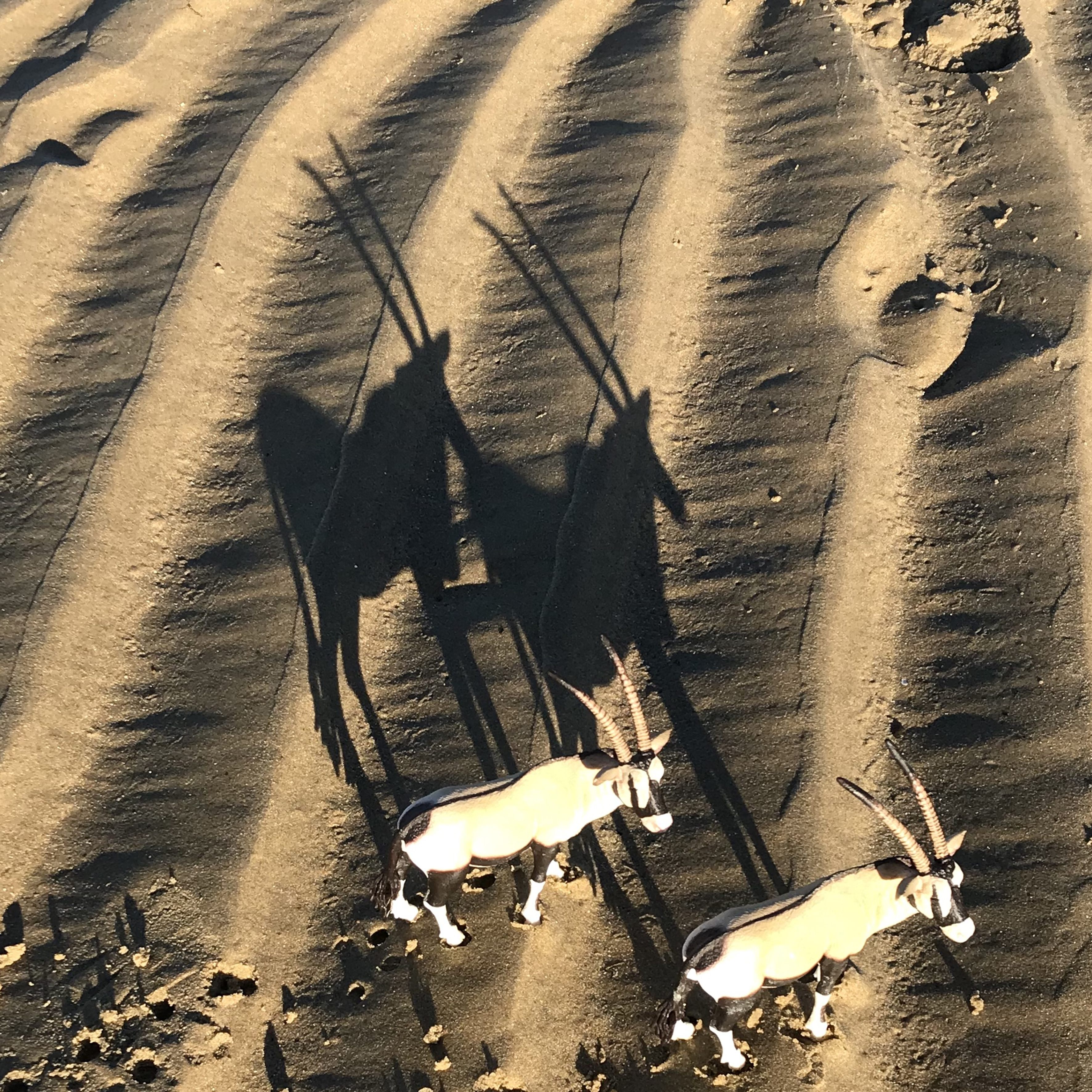
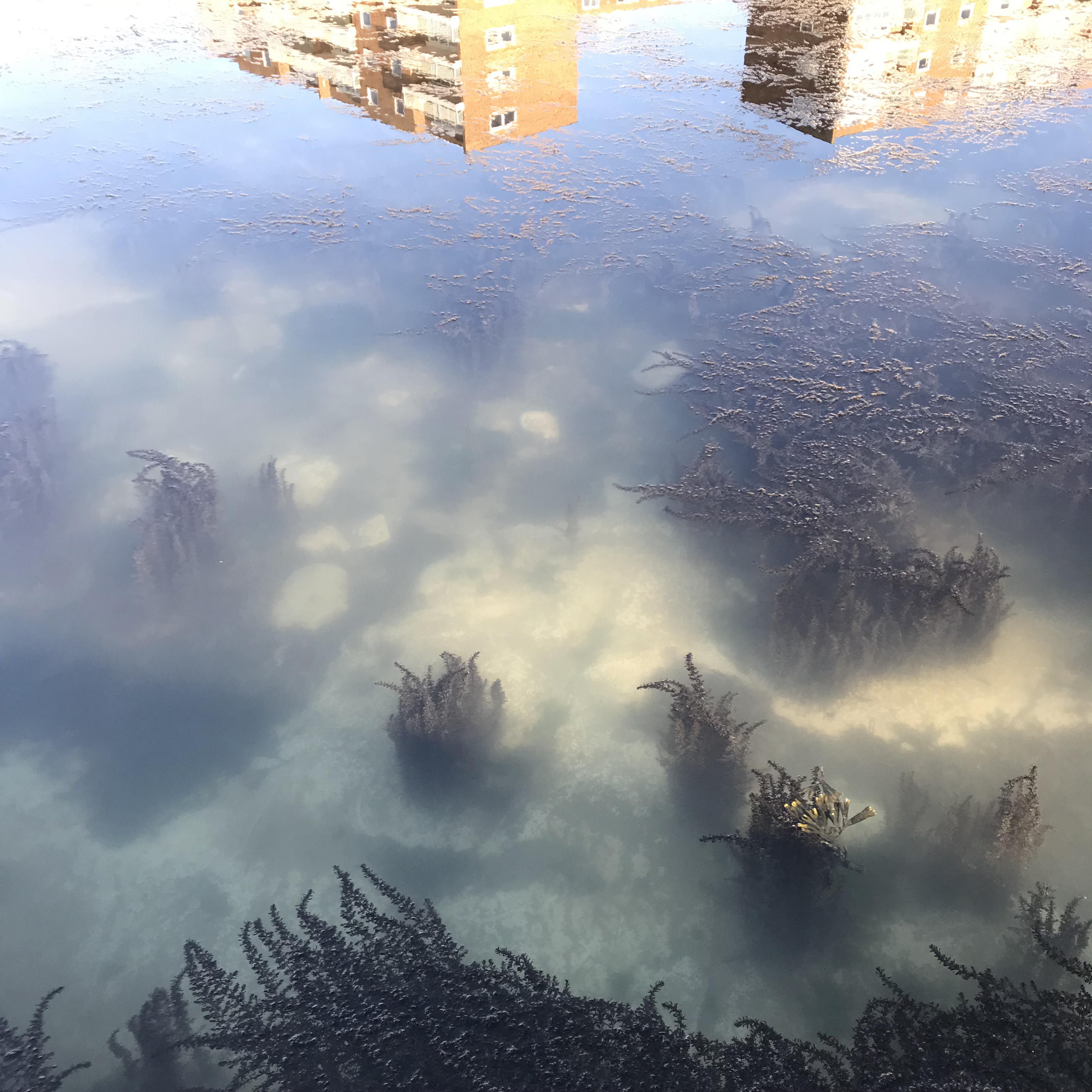
Above & Below: Small tidal sea bathing pool at Minnis Bay
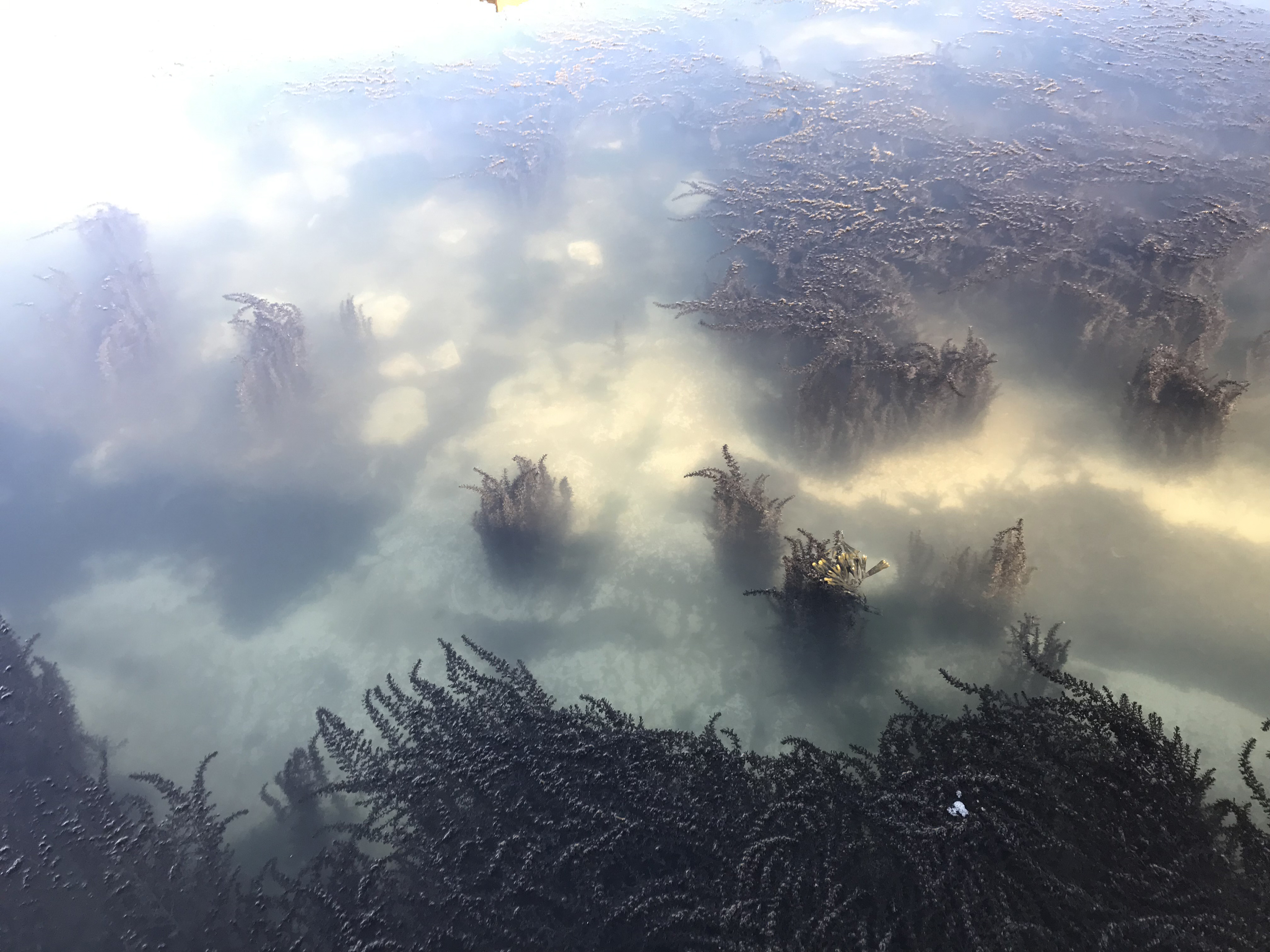
My Garden … May 2018
These images consider & reflect wider concerns for the natural world, particularly focussed on the lives of its wild animals, conservation, loss of habitat, diminishing numbers, poaching, extinction and callous exploitation, which holds a mirror to our humanity. We may soon only have plastic versions of our wild neighbours to play with. The last decade has witnessed the slow & horrible realisation that our negative impact on the planet and particularly our plastic pollution of almost every environment, is a catastrophe for the world around us.
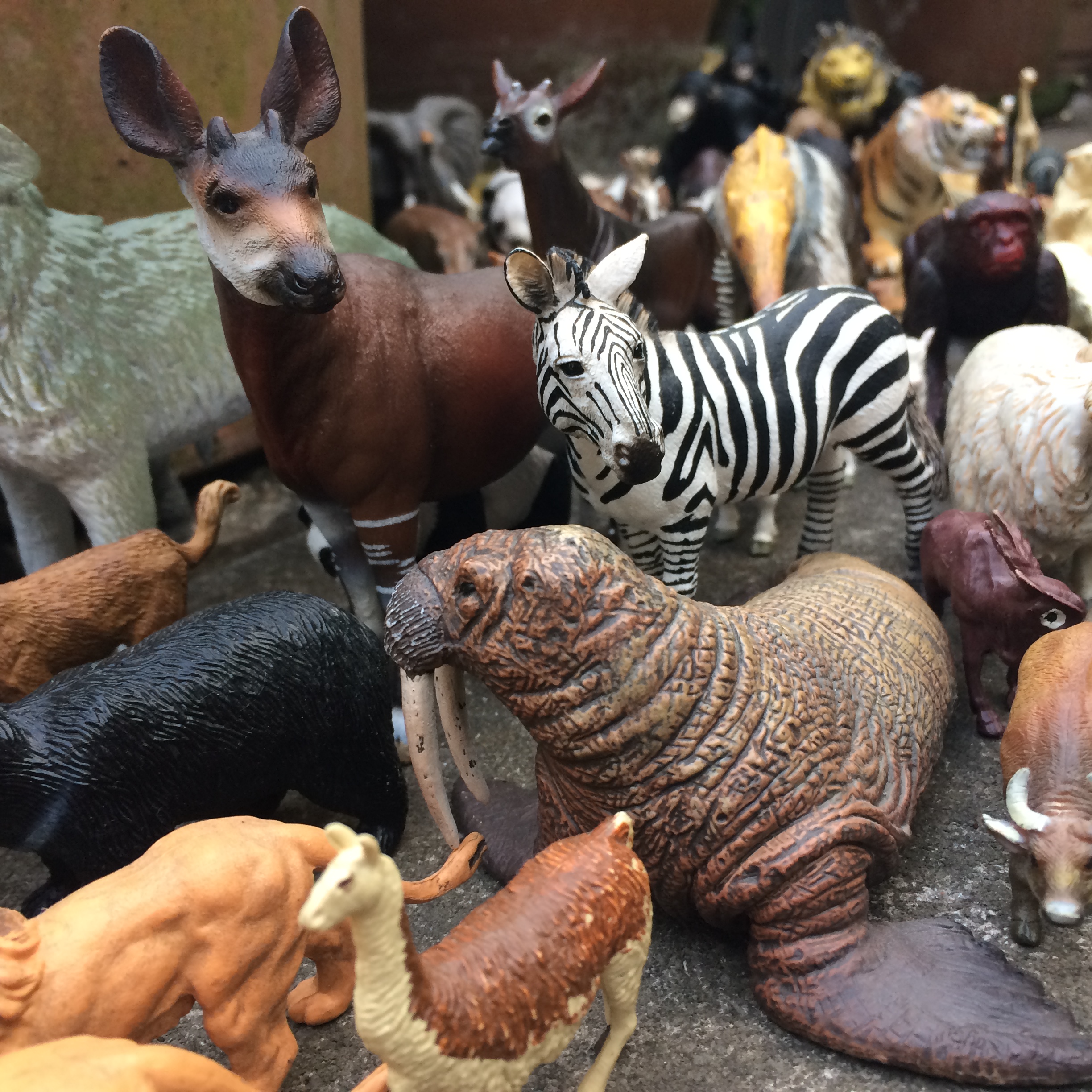
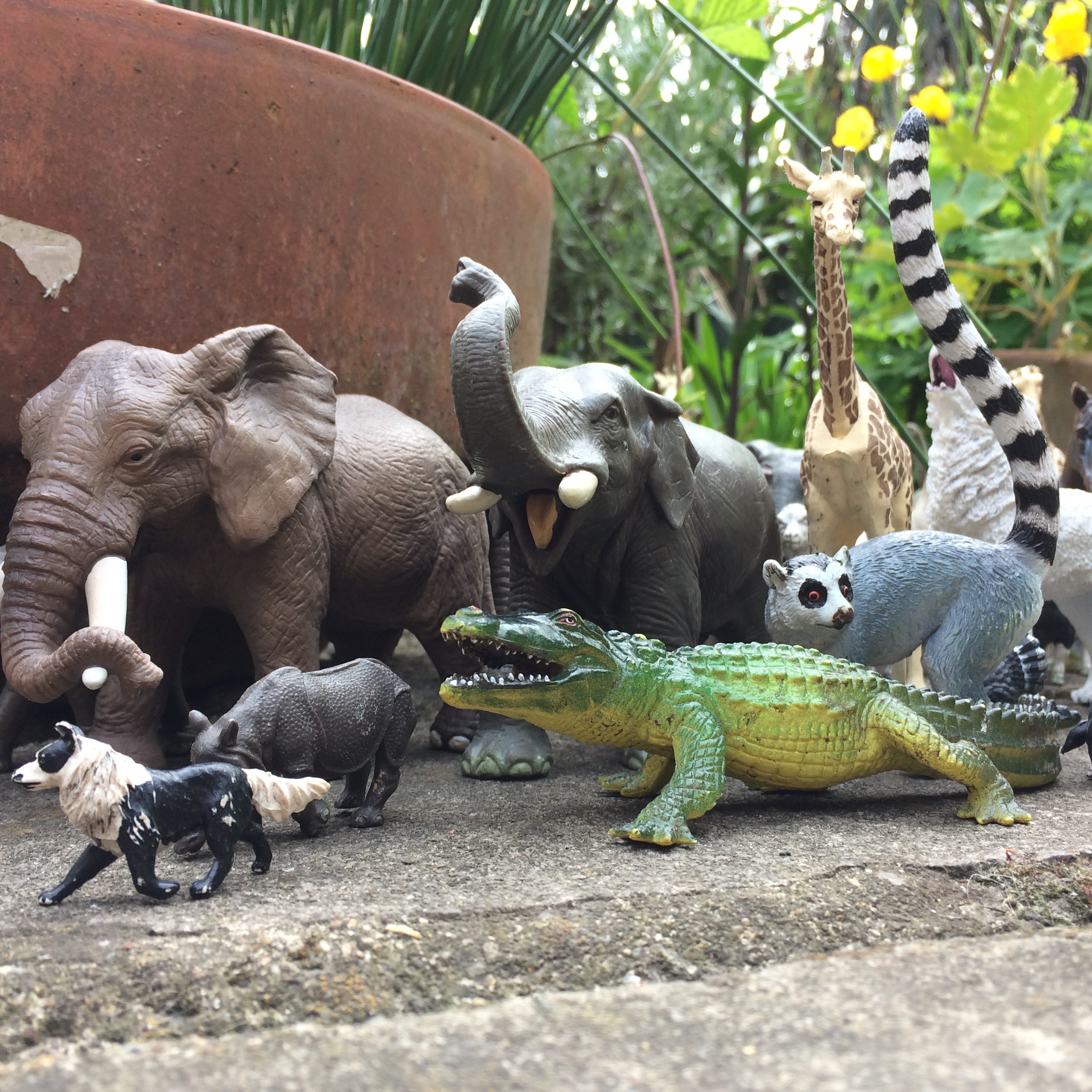
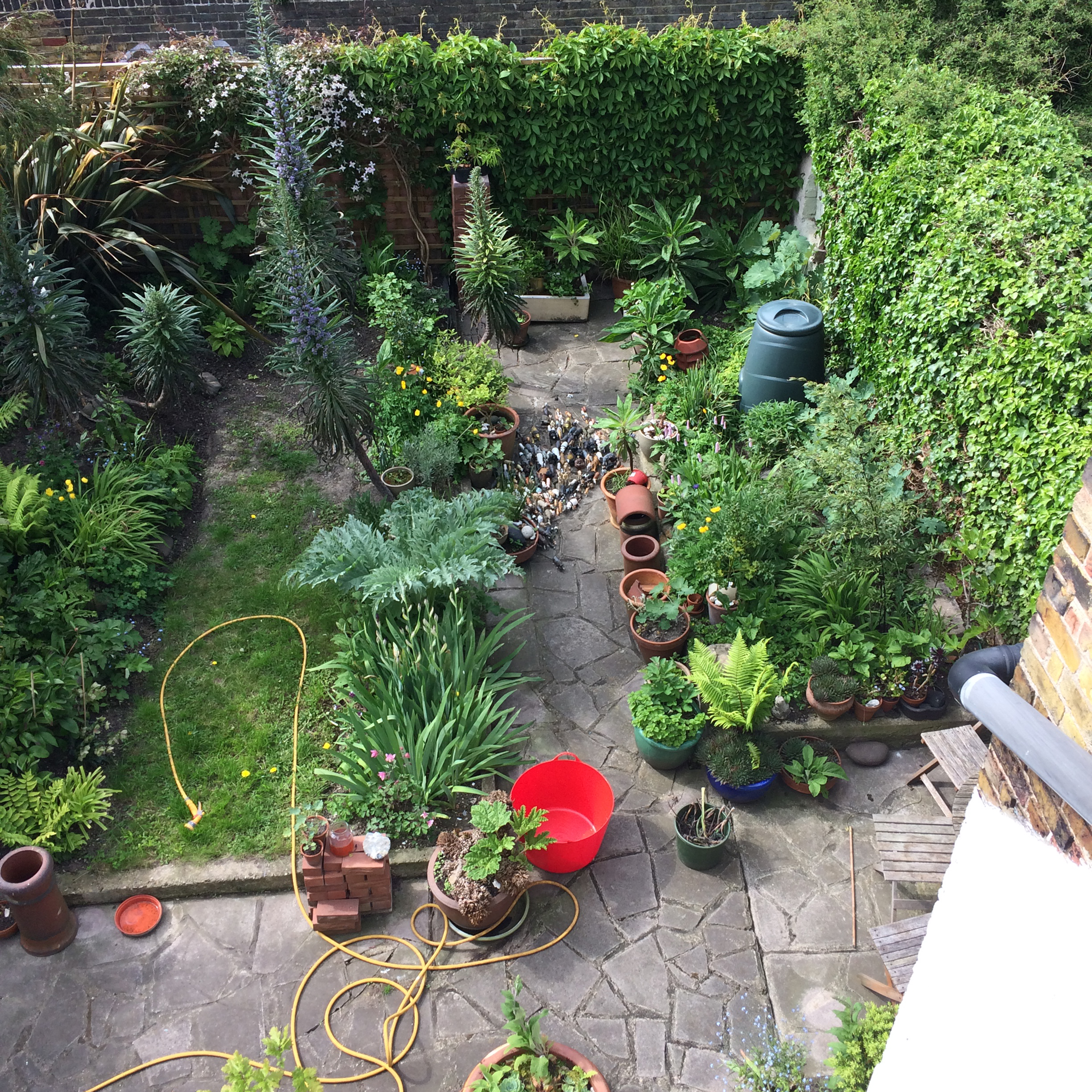

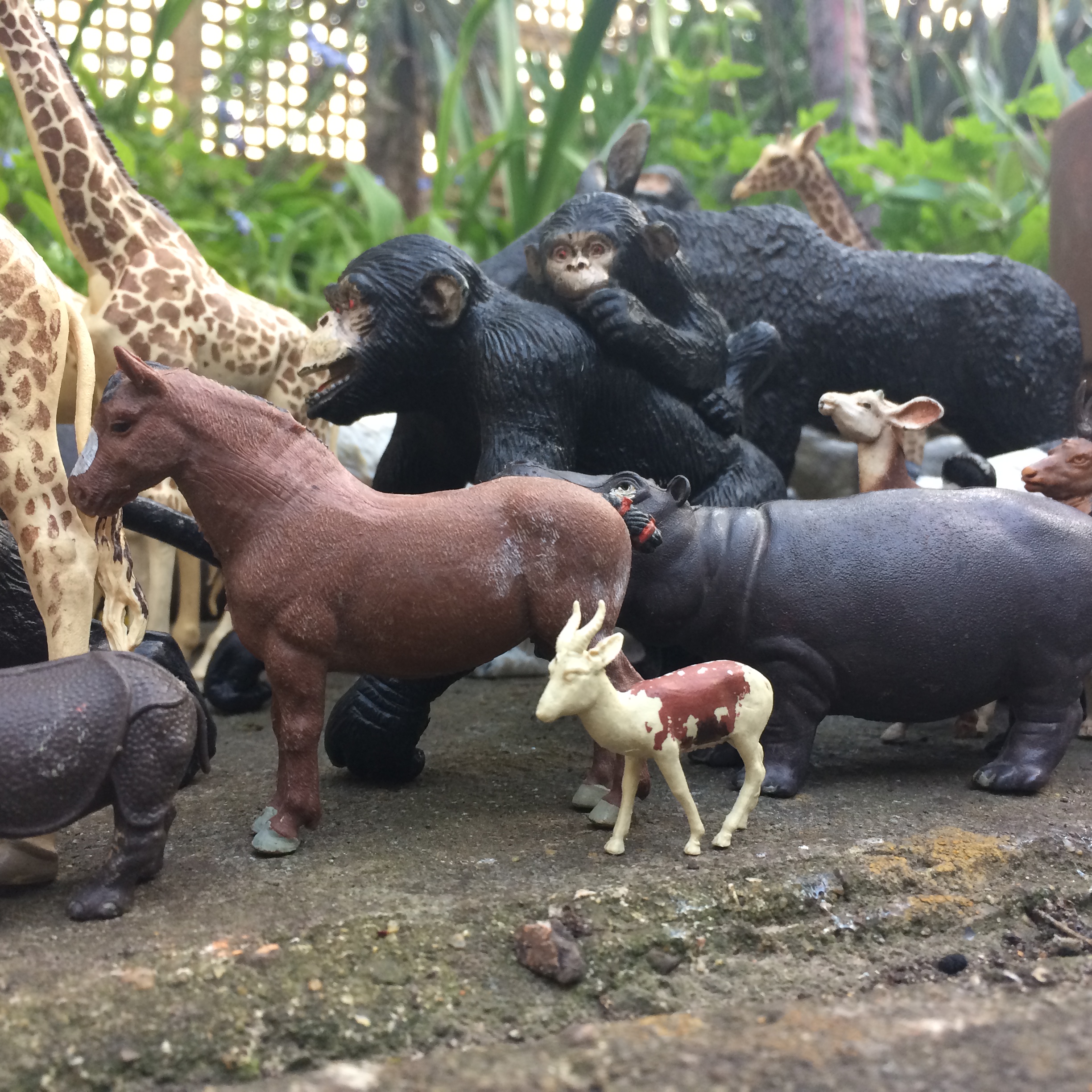
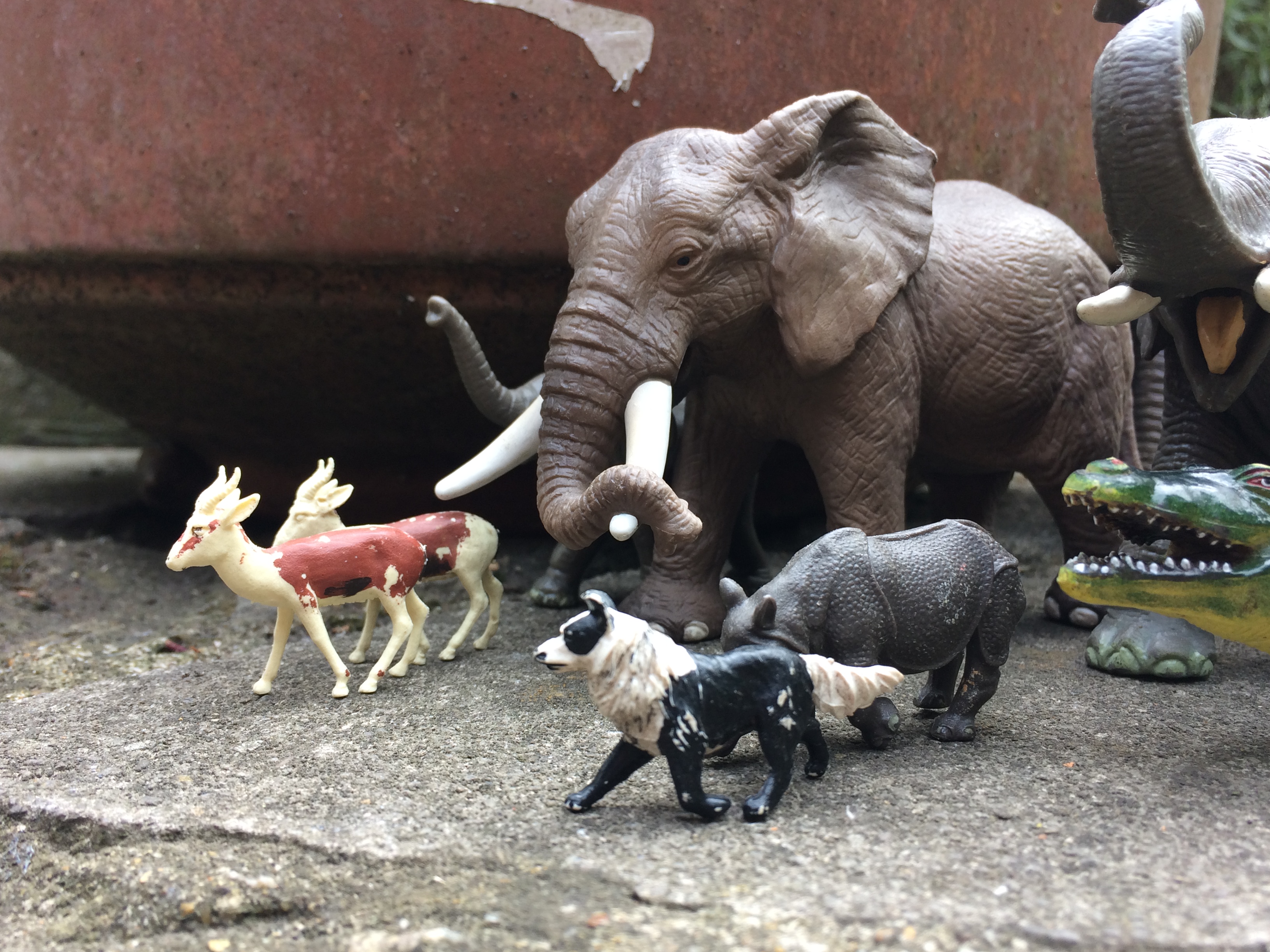
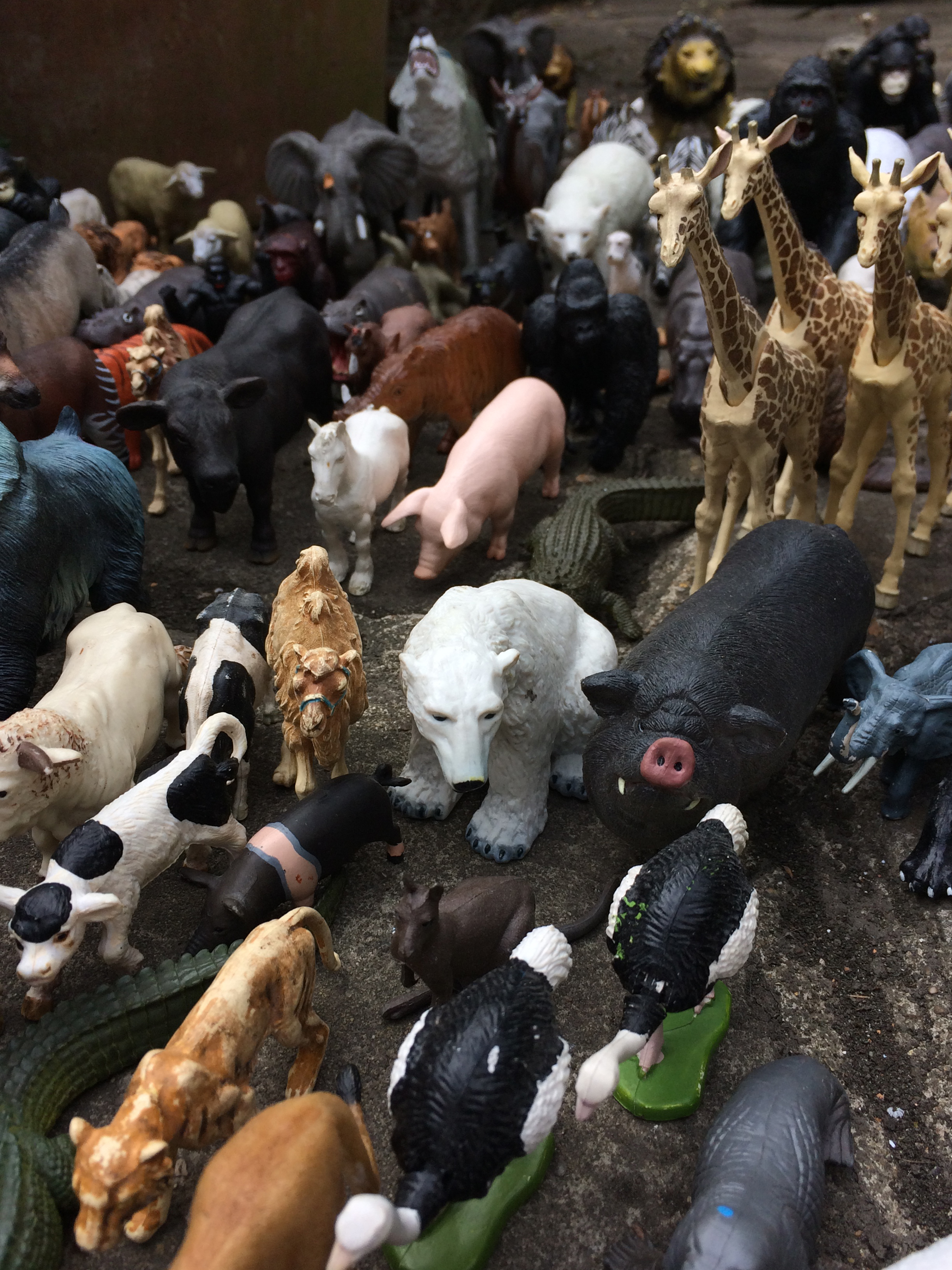
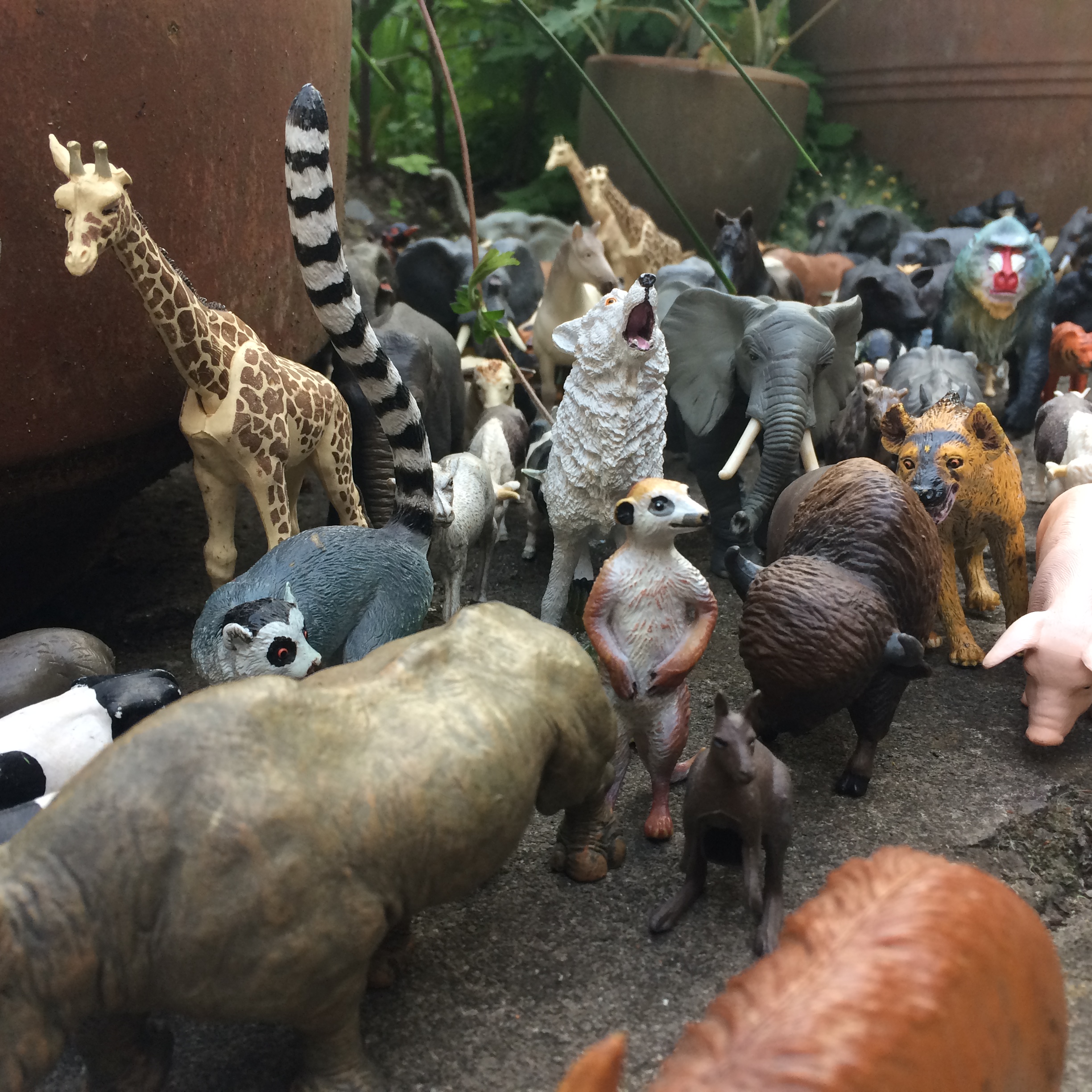
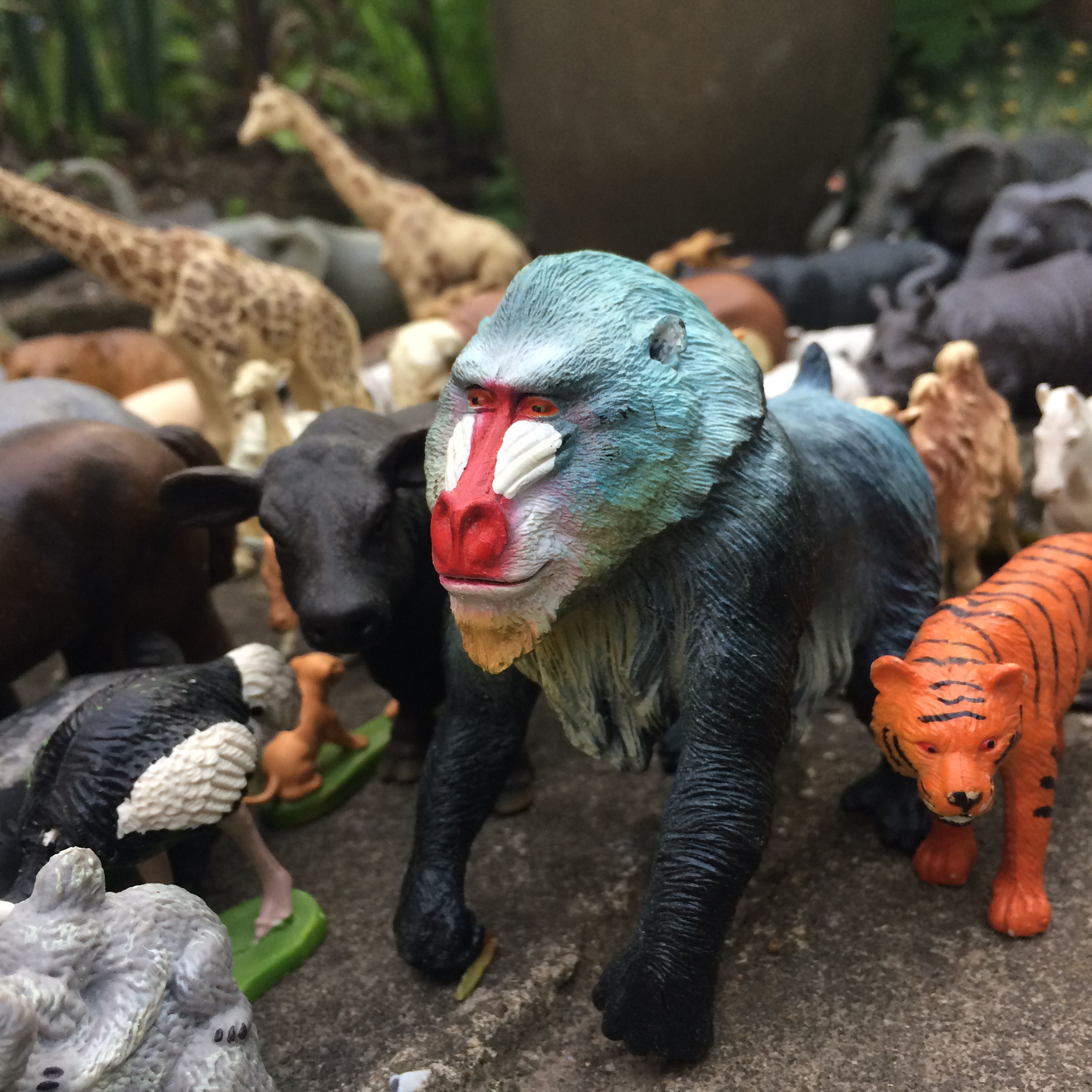

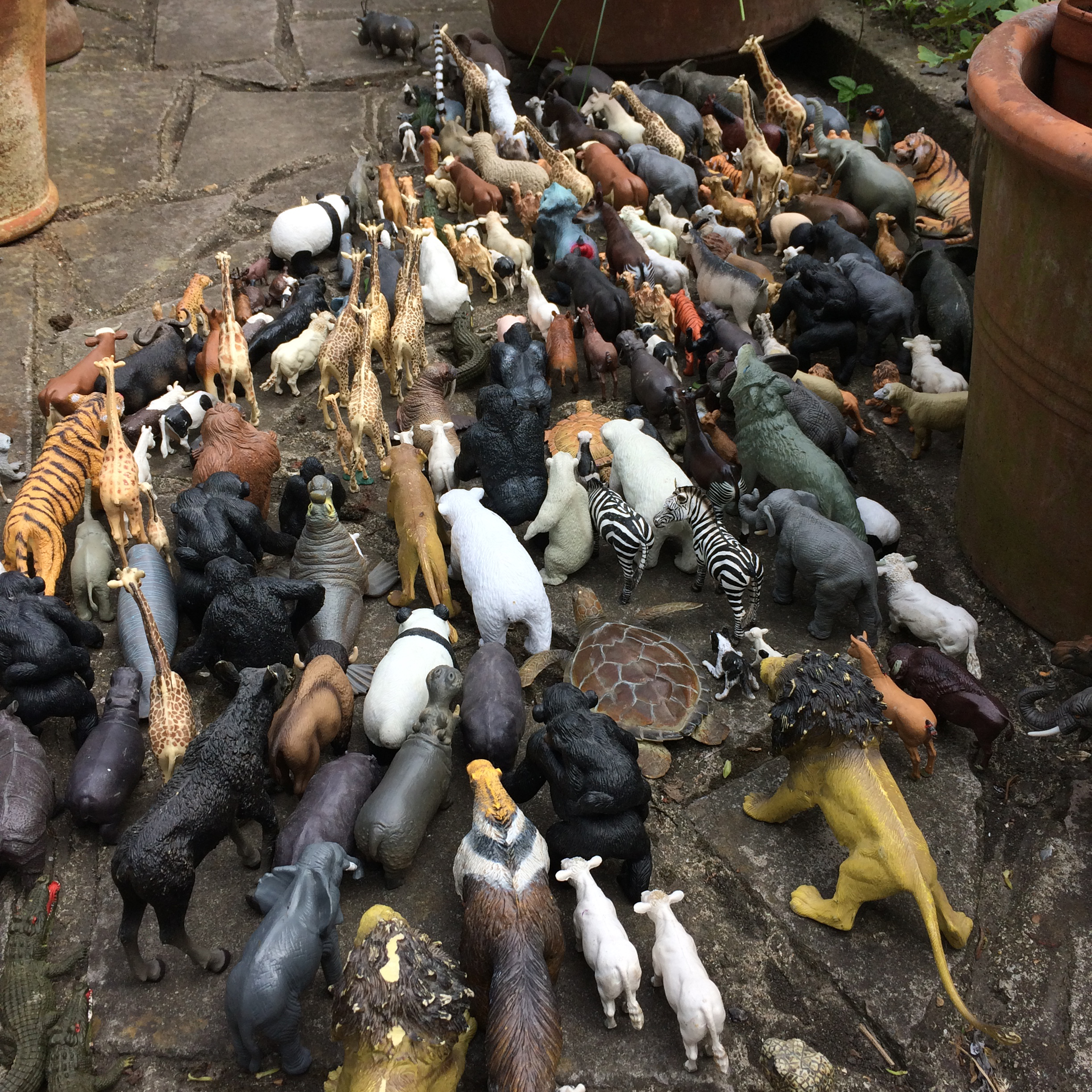

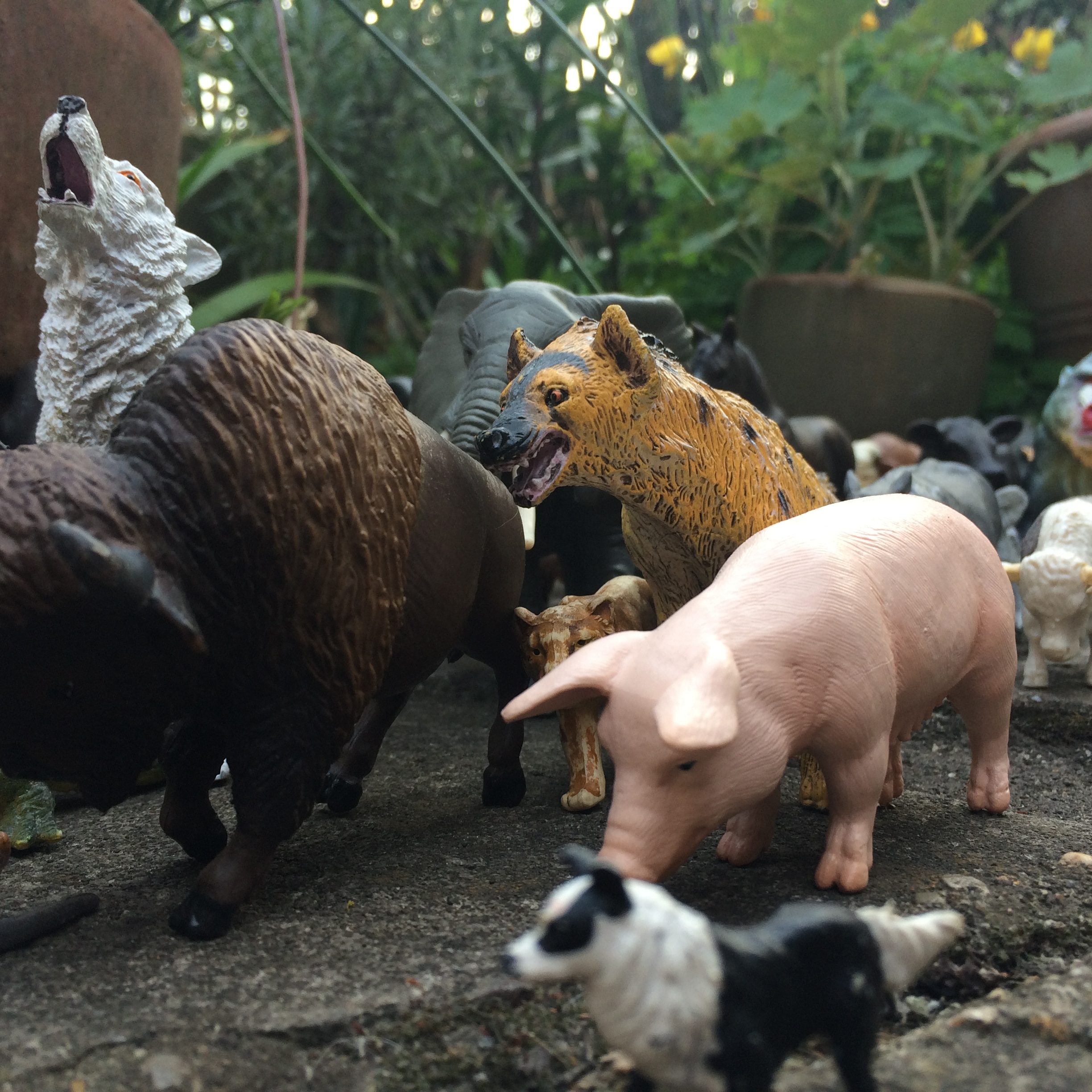
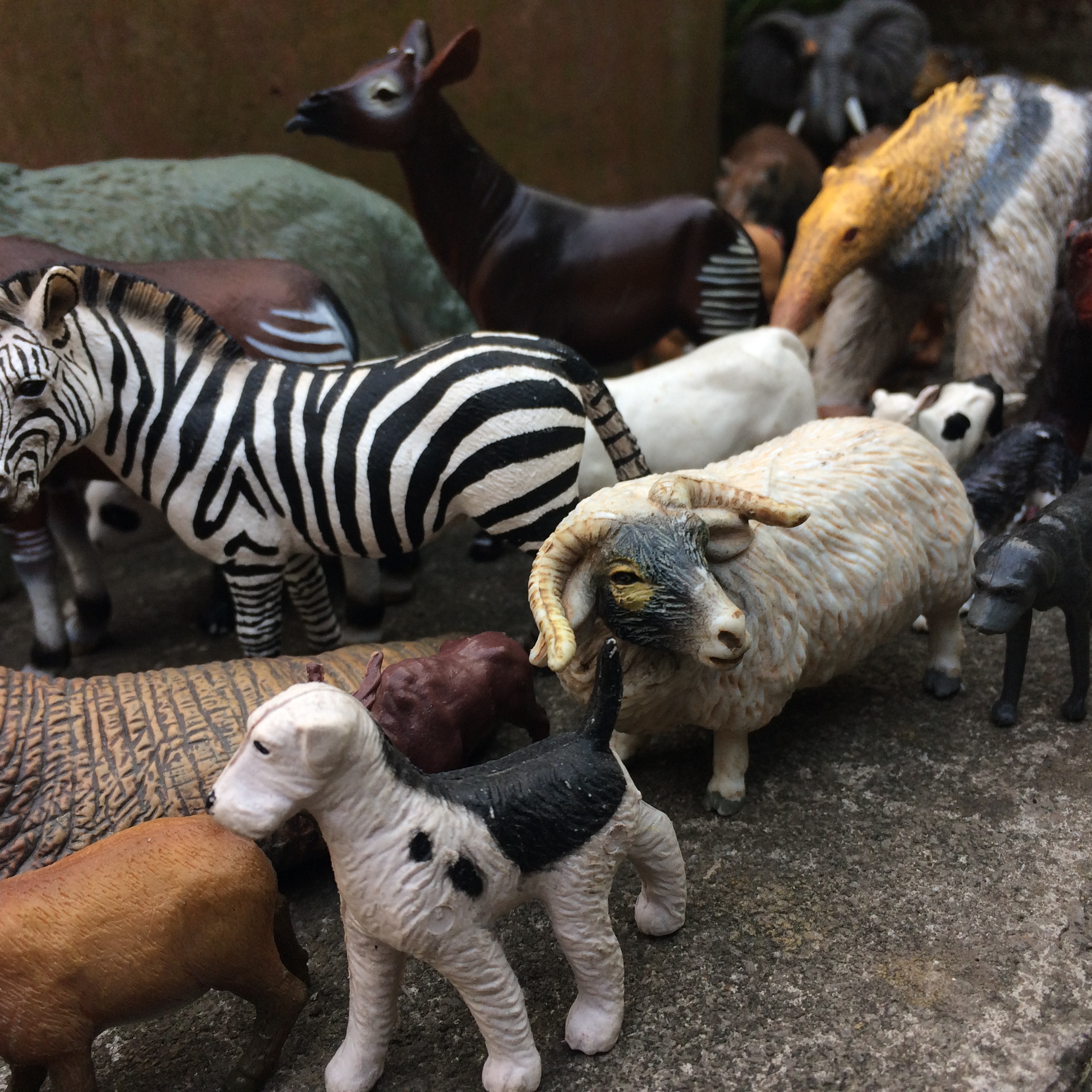
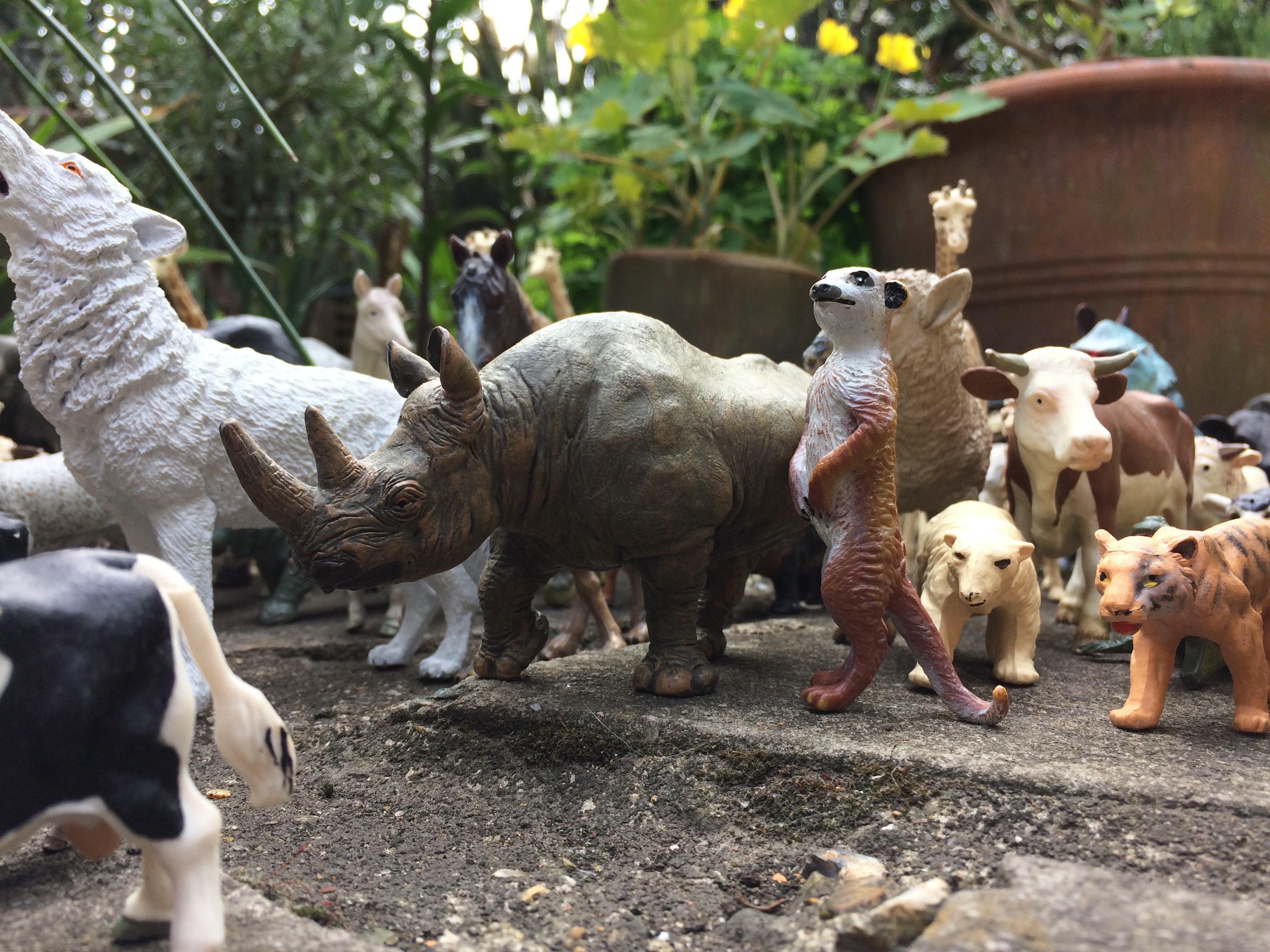
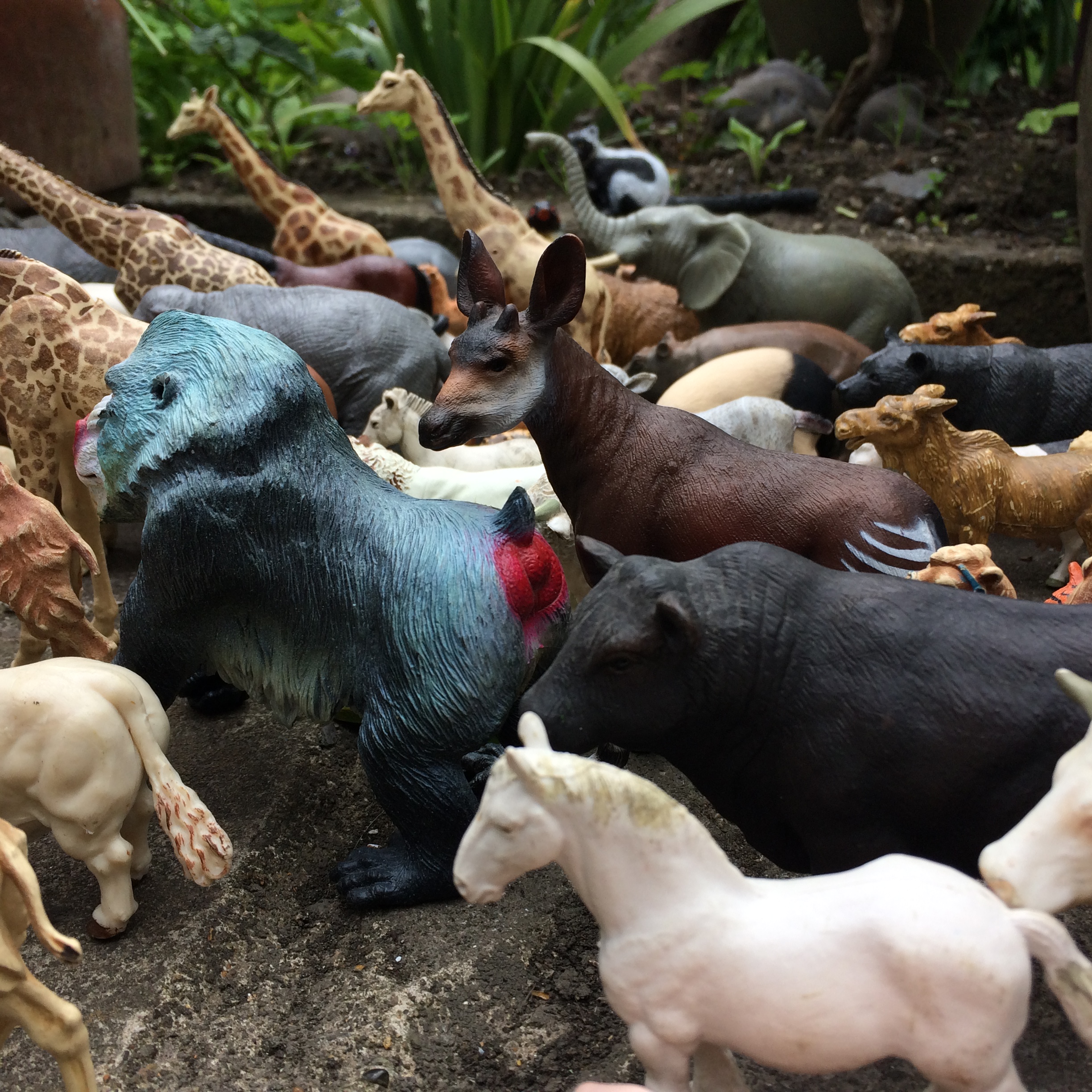
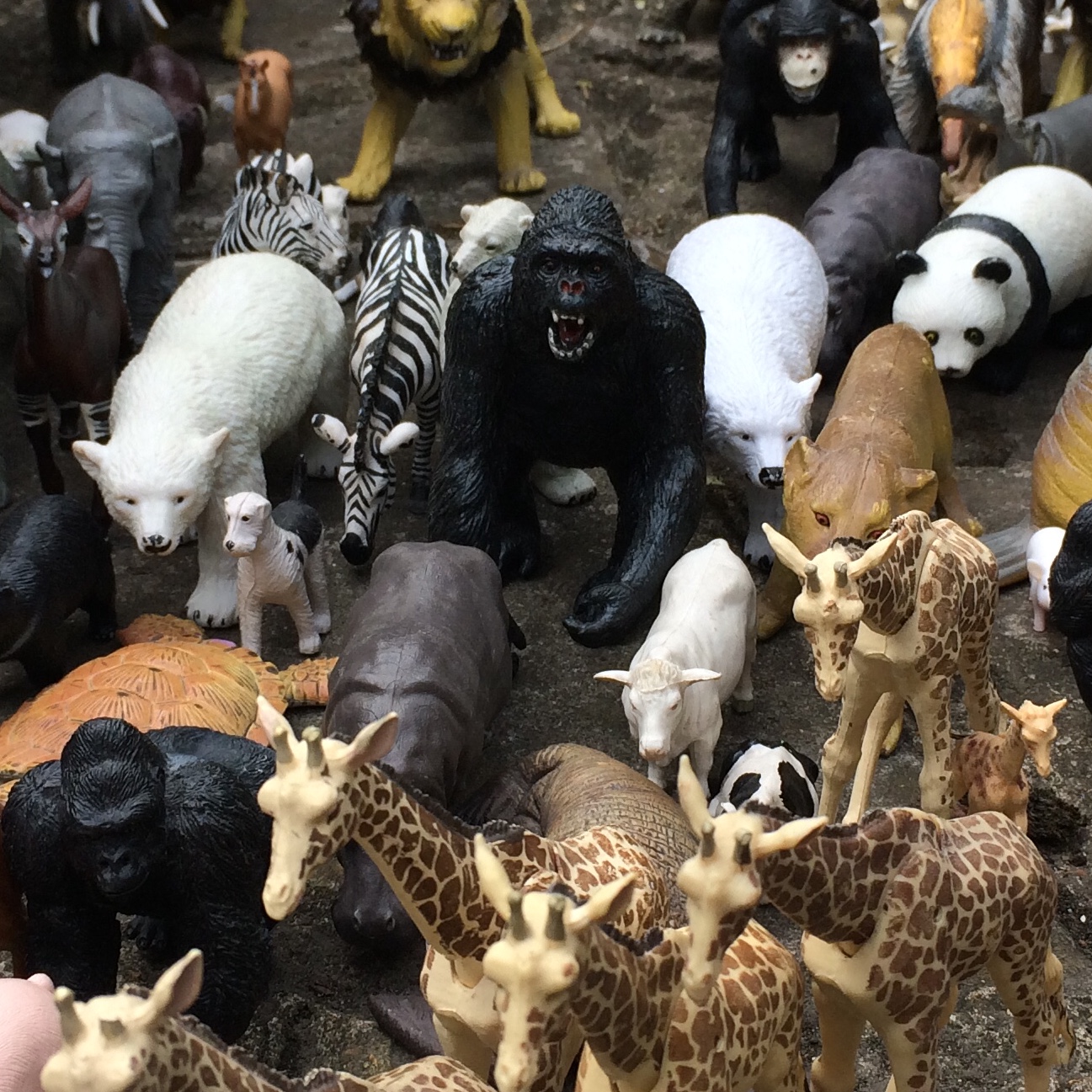
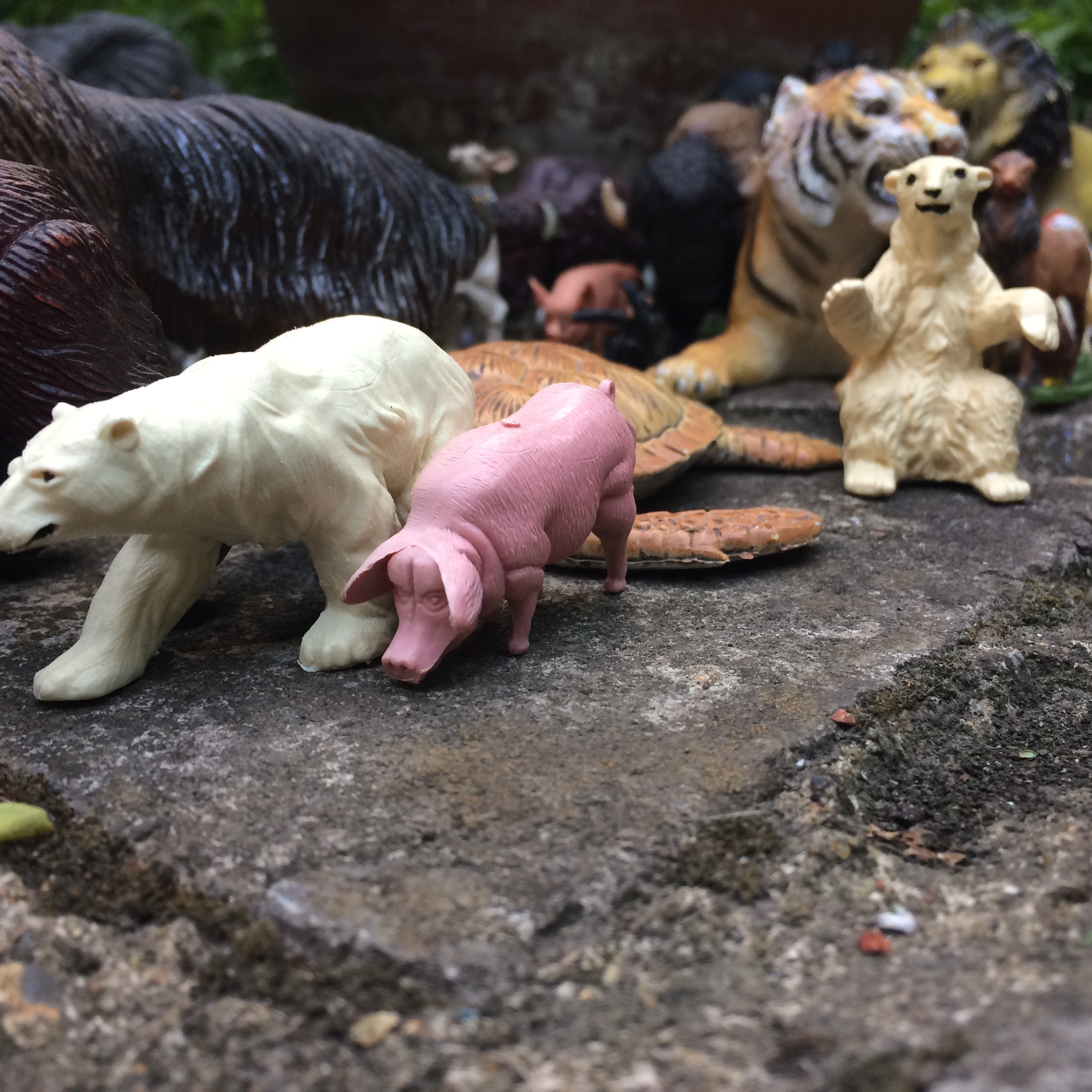
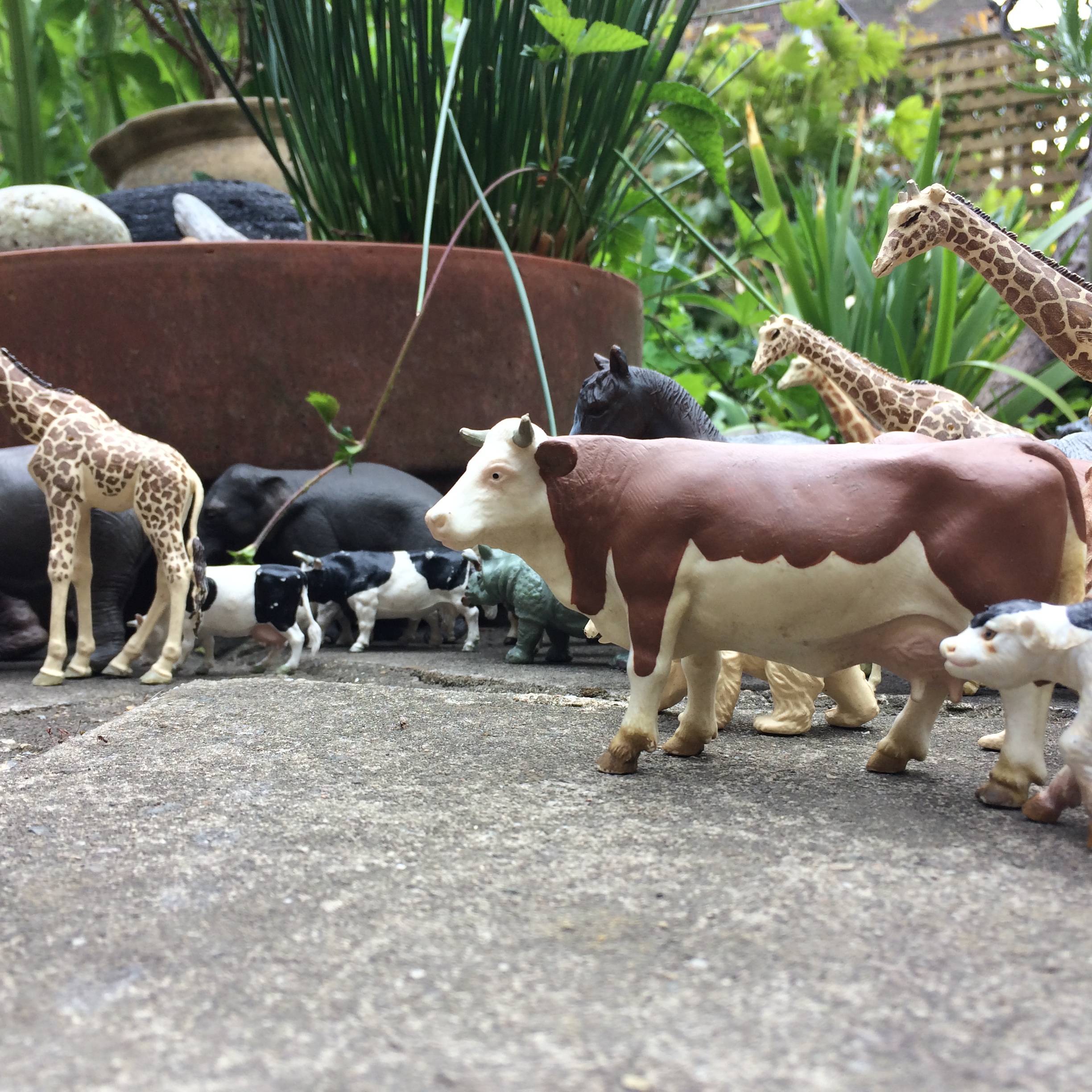
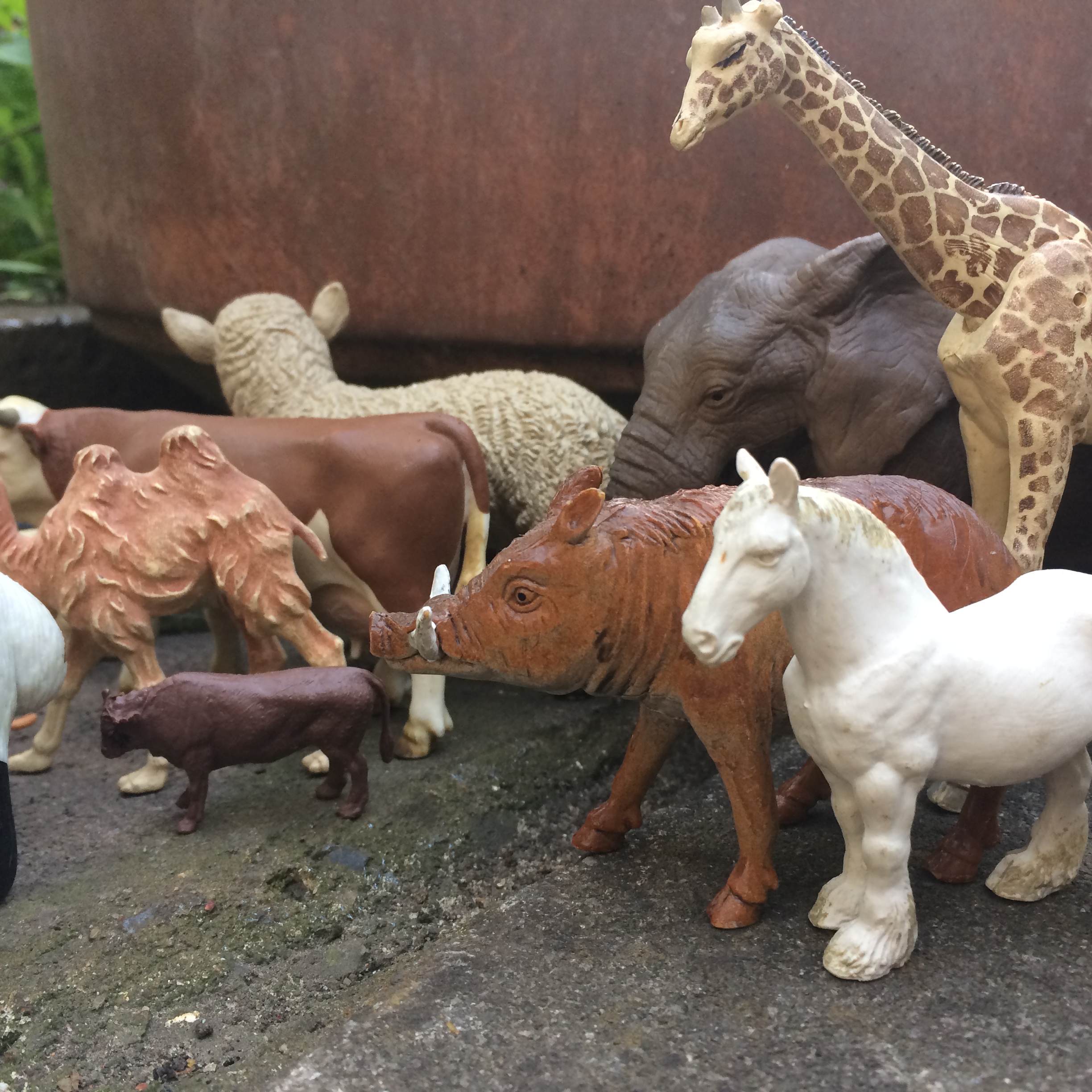
The last decade has seen Margate’s cultural landscape flourish with the dual success of Turner Contemporary and a resurgent Dreamland to book-end the seafront panorama. Successful regeneration by Thanet Council has also brought significant and tangible changes to the Old Town. One of the most significant outcomes delivered by the Council without fanfare or drama however, has been the Margate Flood & Coastal Protection Scheme – also known more fondly as Margate Steps. A scheme funded by the Environment Agency to the tune of £6million pounds and brought in on time and under budget …and somewhat under the radar. This example of coastal civil engineering encompassed not only the Steps, but the Harbour Arm and Sea Wall along Marine Drive. This elegant and functional concrete stepped revetment structure has also brought a much needed and highly activated public realm and pedestrian space to the Town.
Throughout its history, a major catalyst for change and development in Margate had been the destructive force of storms and storm surges. These pages are taken from the Contextual Research Document, which I delivered in collaboration with the project team.
MARGATE STEPS CONTEXTUAL RESEARCH DOCUMENT 1
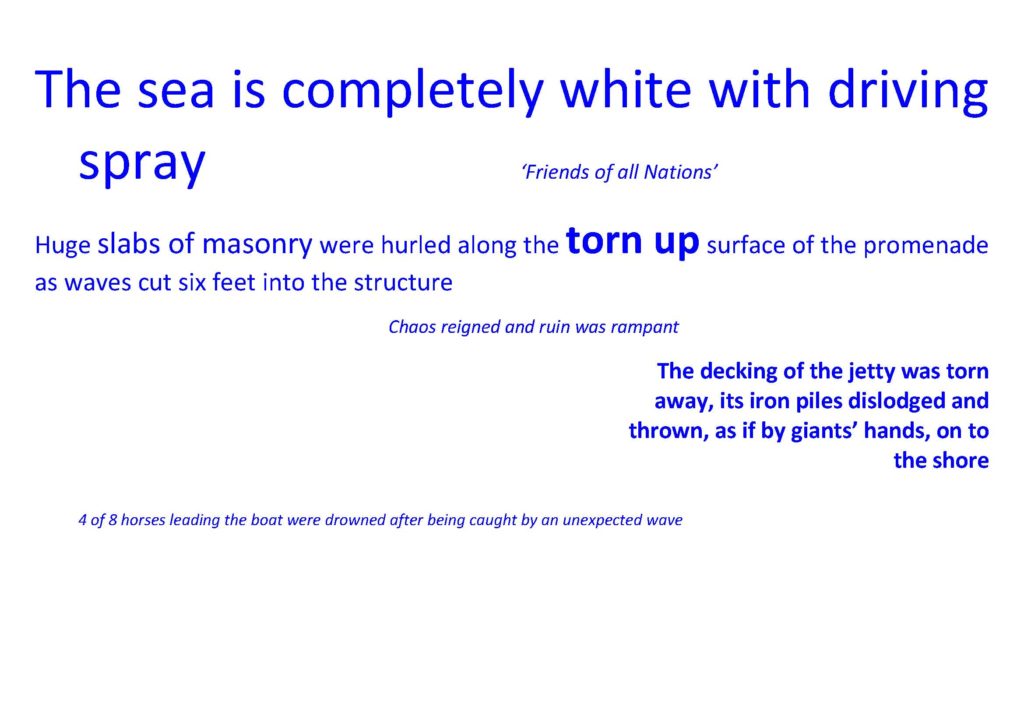
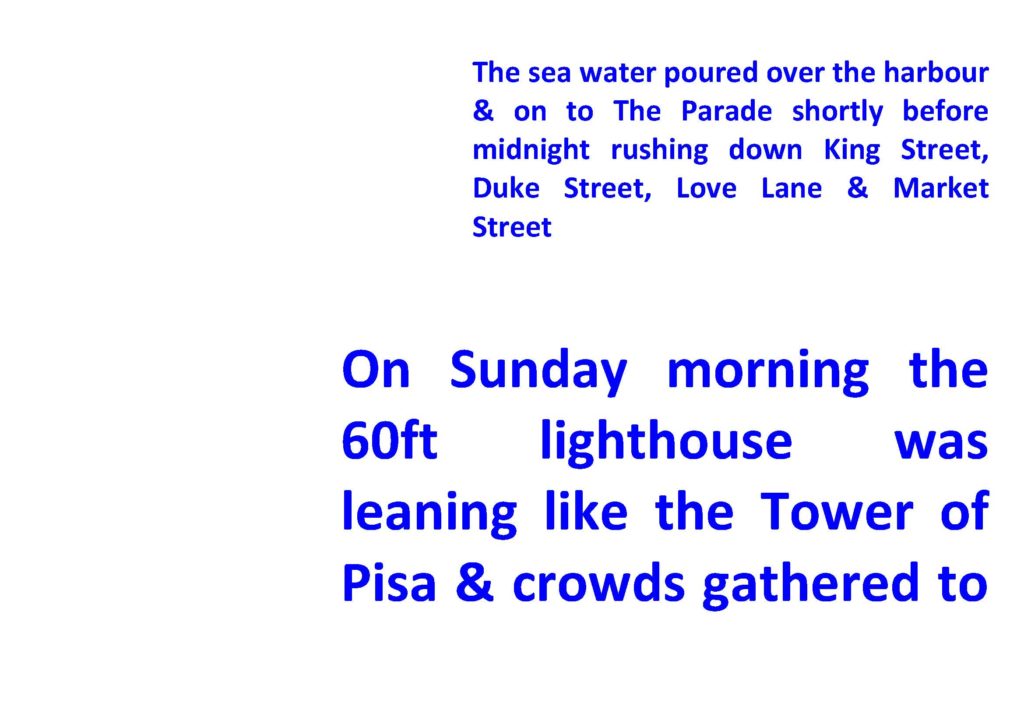
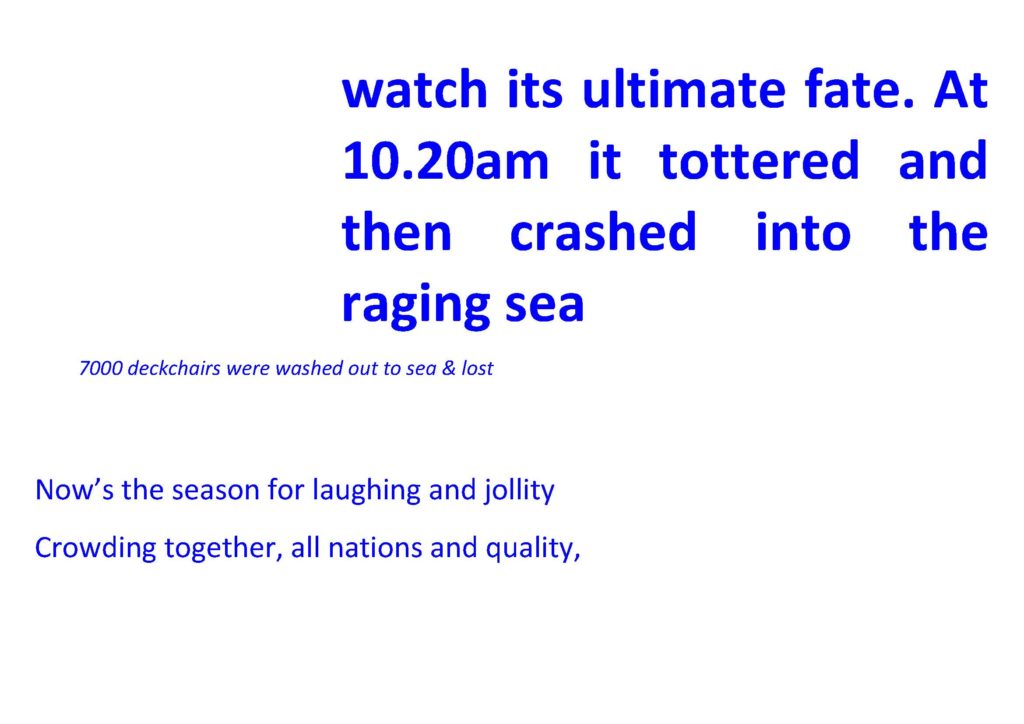
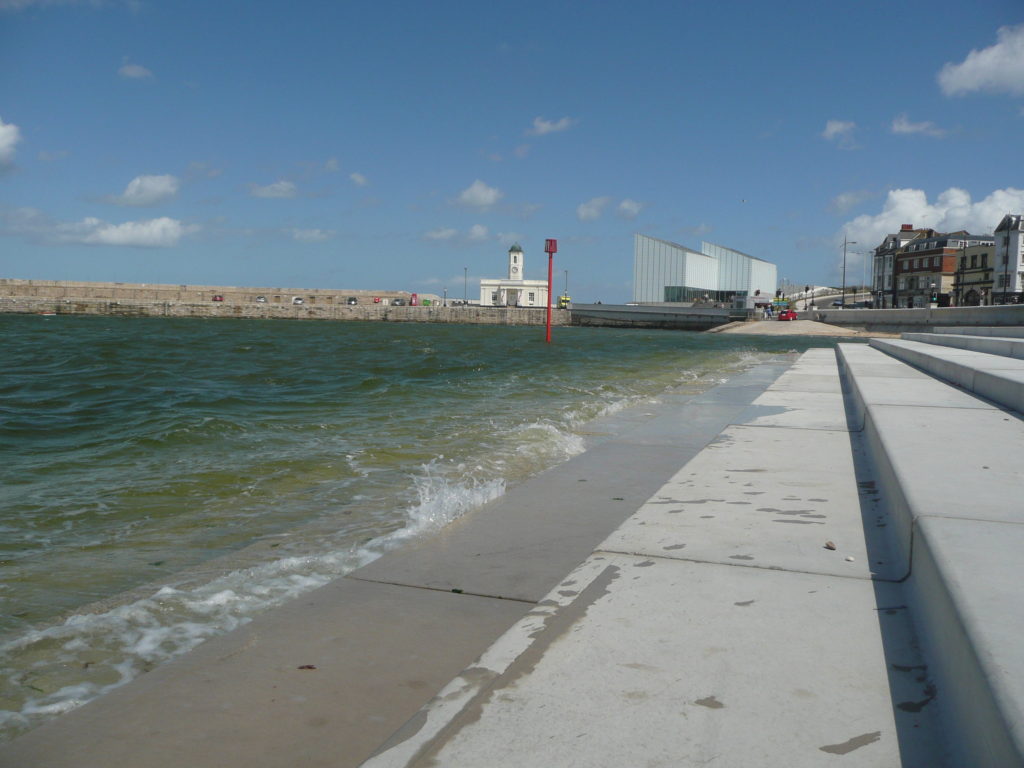
I was commissioned as project artist on the scheme by Thanet District Council & the Environment Agency in December 2010. My role was to uncover and present interpretive & contextual information & develop concepts with which to influence the design process & inform the structure & detailing of this major sea defence works. The work has now been completed and the project officially opened in May 2013.
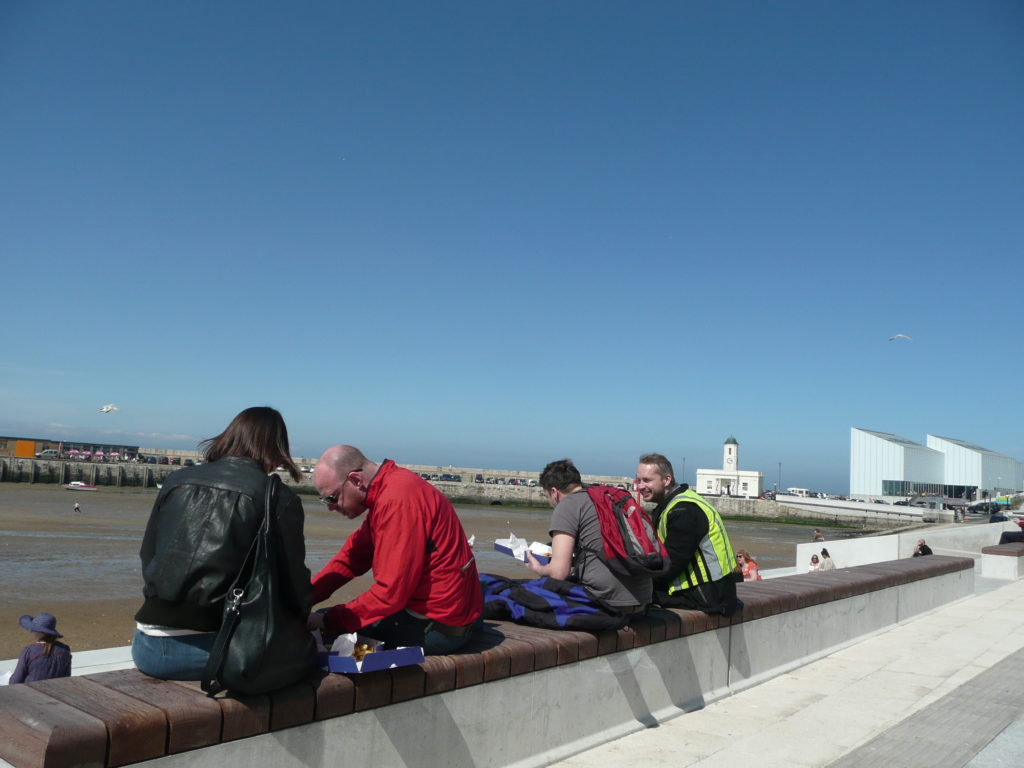
Client: TDC & Margate Renewal Partnership. Engineers: East Kent Engineering Practice. Landscape Architects and Urban Designers: Jacobs. Contractor: Breheney. Specialist Concrete Pre Cast: CCP Cornish Concrete Products.
Being part of an integrated design team from an early point was critical in enabling the contextual work, via a contribution to the detailed DESIGN & ACCESS STATEMENT , to influence the physical form of the structure, within its constraints as a sea defence work.
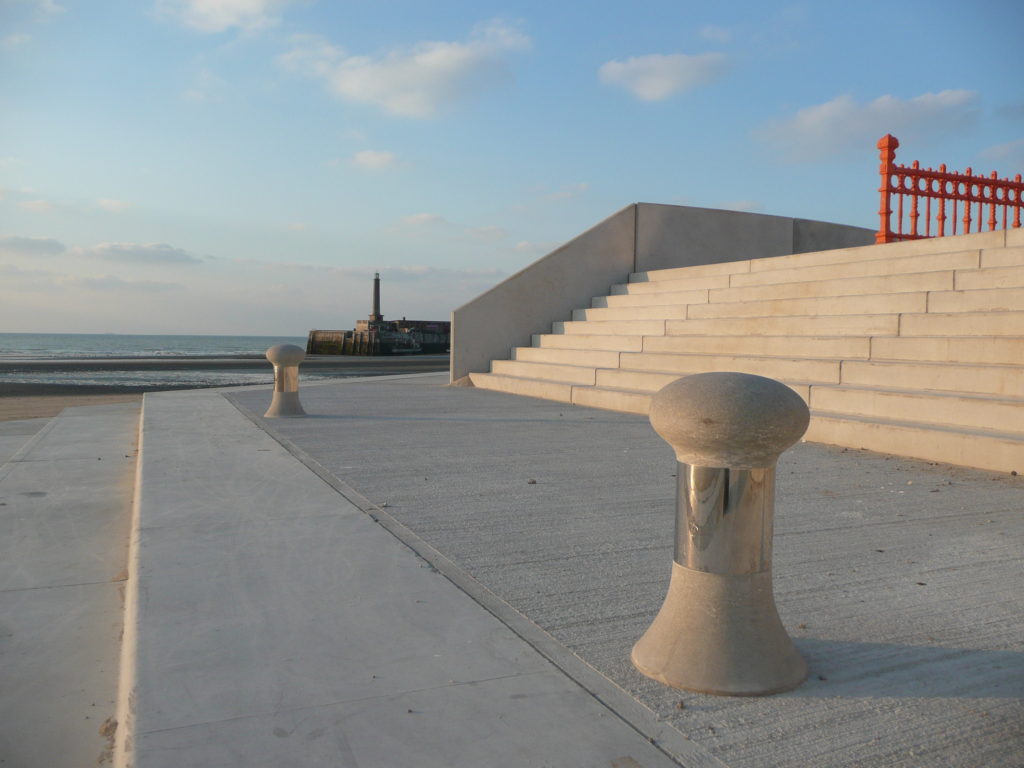
The public realm and amenity space which the project afforded Margate’s sea front has been a tremendous addition to an enlivened and highly activated sea front promenade which has Turner Contemporary and the Harbour Arm at one end & Margate Station & Dreamland at the other.
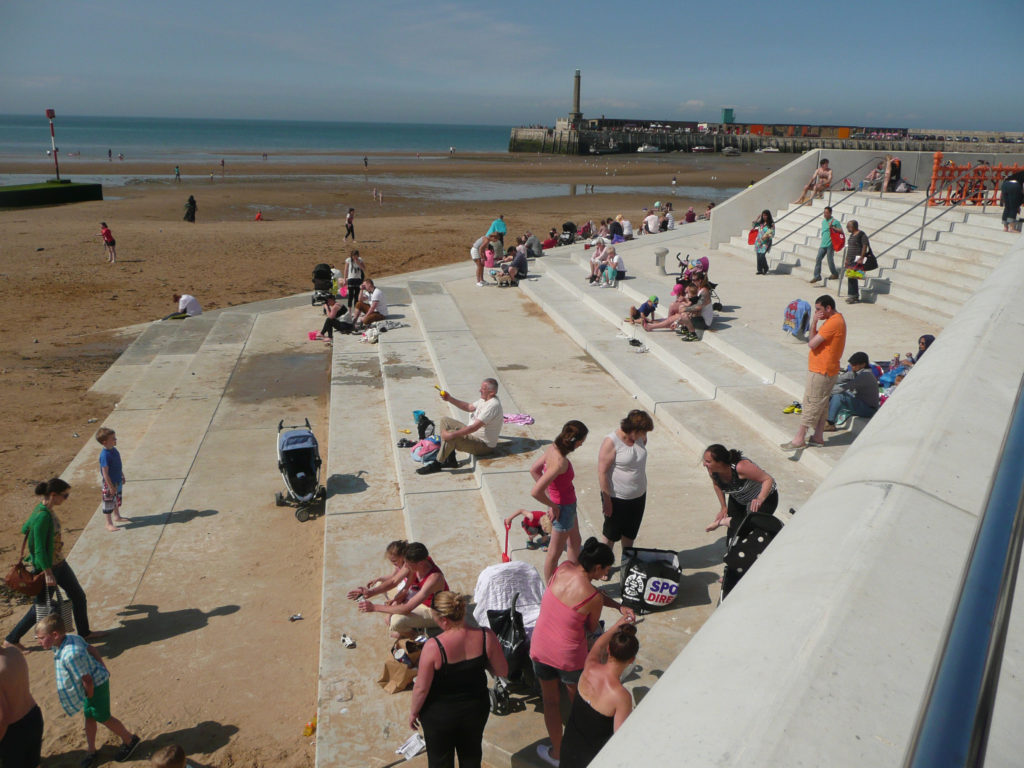
‘Animal Thanet’ exists as a series of images which examine our relationship with the natural world and environment through the use of plastic animals placed in a variety of habitats & scenarios in and around Ramsgate & the Isle of Thanet in Kent.
One of my first recollections as a child was of having a farm with plastic animals. I loved it. I collected these animals throughout my childhood and developed a strong affinity with the natural world and the creatures that inhabit it. When I got married and had a family and child of my own, I started collecting again – particularly after we moved to Ramsgate, Kent – always under the pretence that they were for my daughter Nell ! Living by the coast was like revisiting childhood.
My wider concerns for the natural world, is particularly focussed on the lives of its wild animals. Loss of habitat, diminishing numbers, extinction and callous exploitation hold a mirror to our humanity. We may soon only have plastic versions of our wild neighbours to play with.
This set of images was made on Ramsgate Main Sands and the coastal walk at low tide between Ramsgate and Broadstairs.
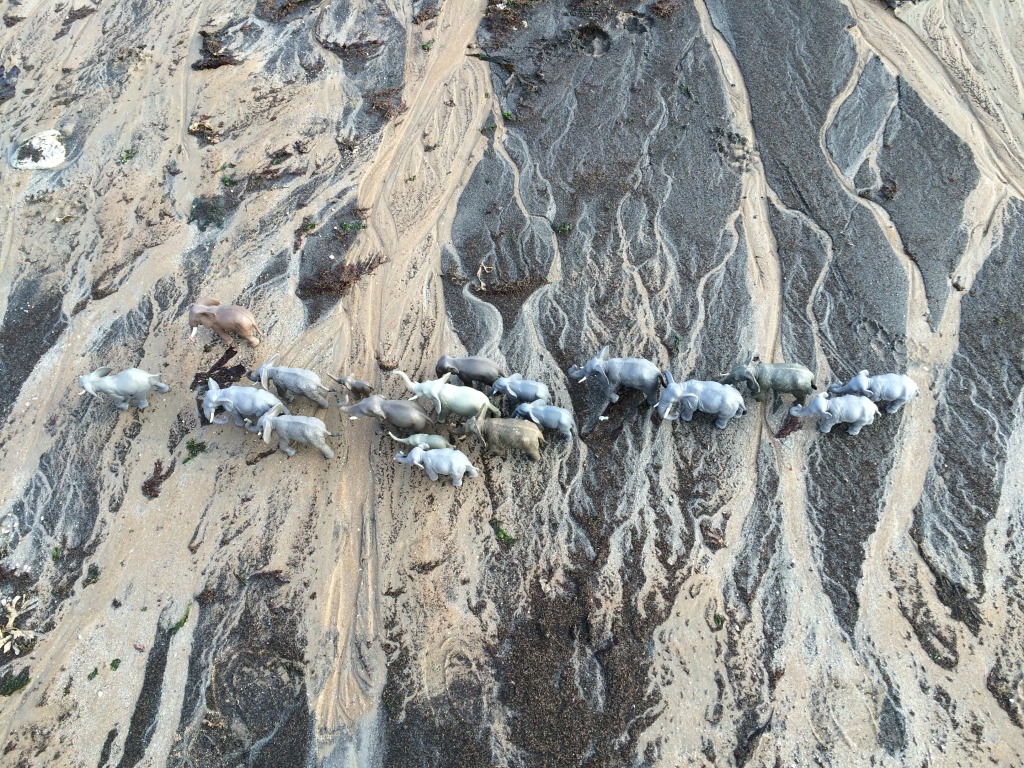

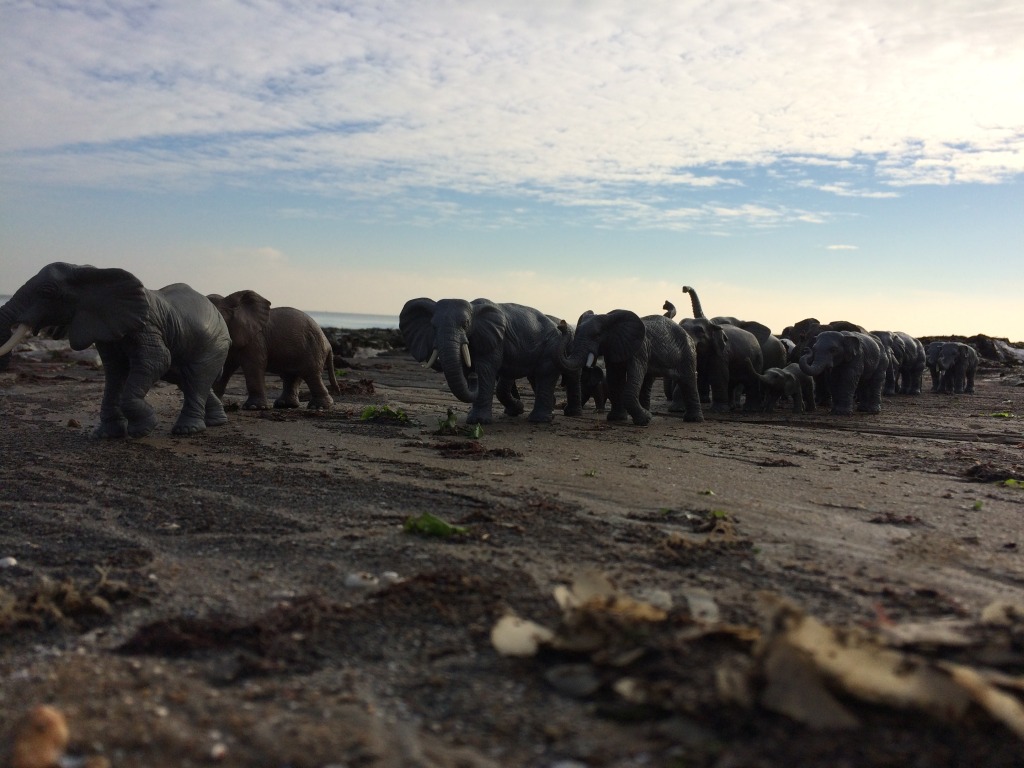
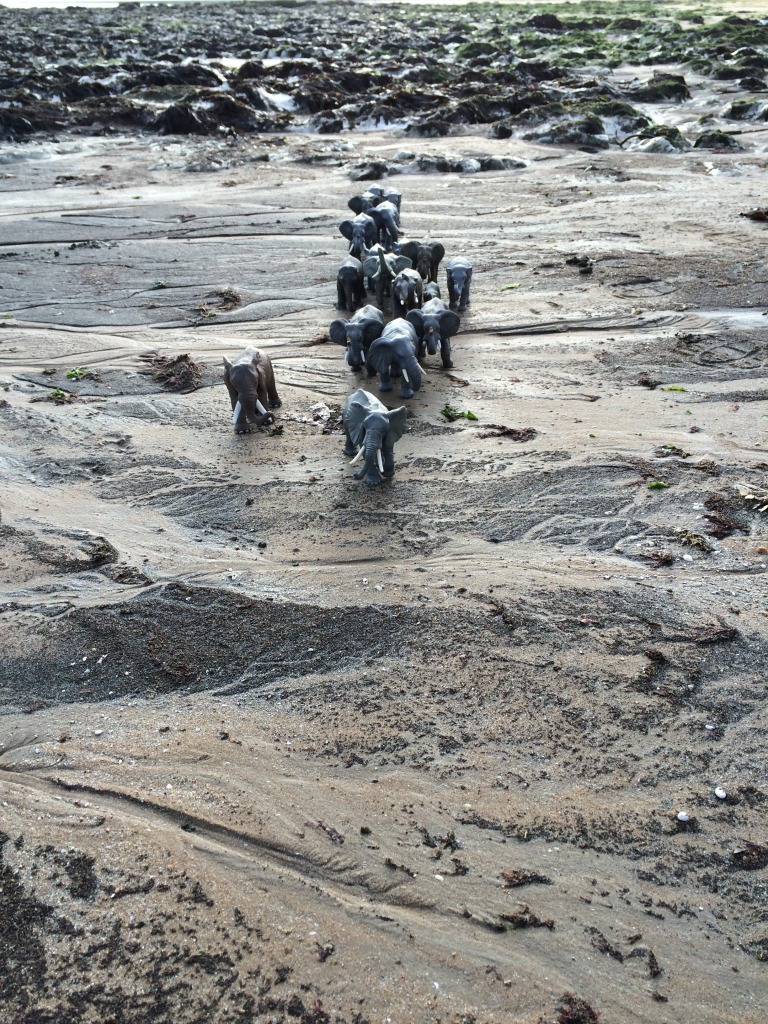
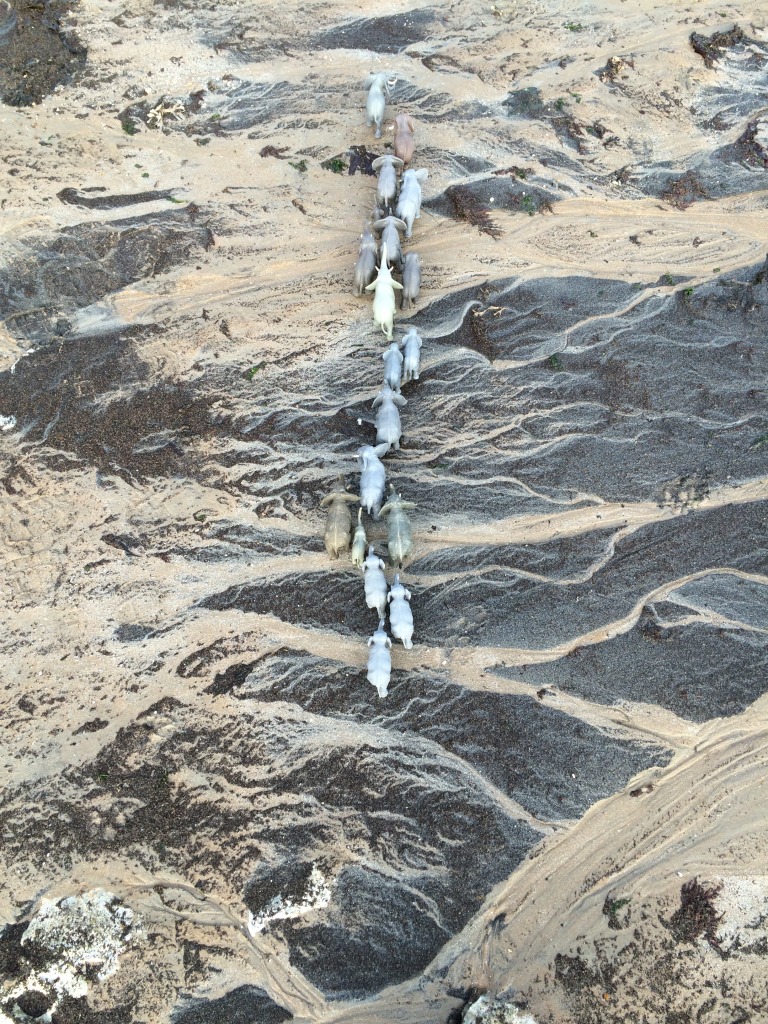
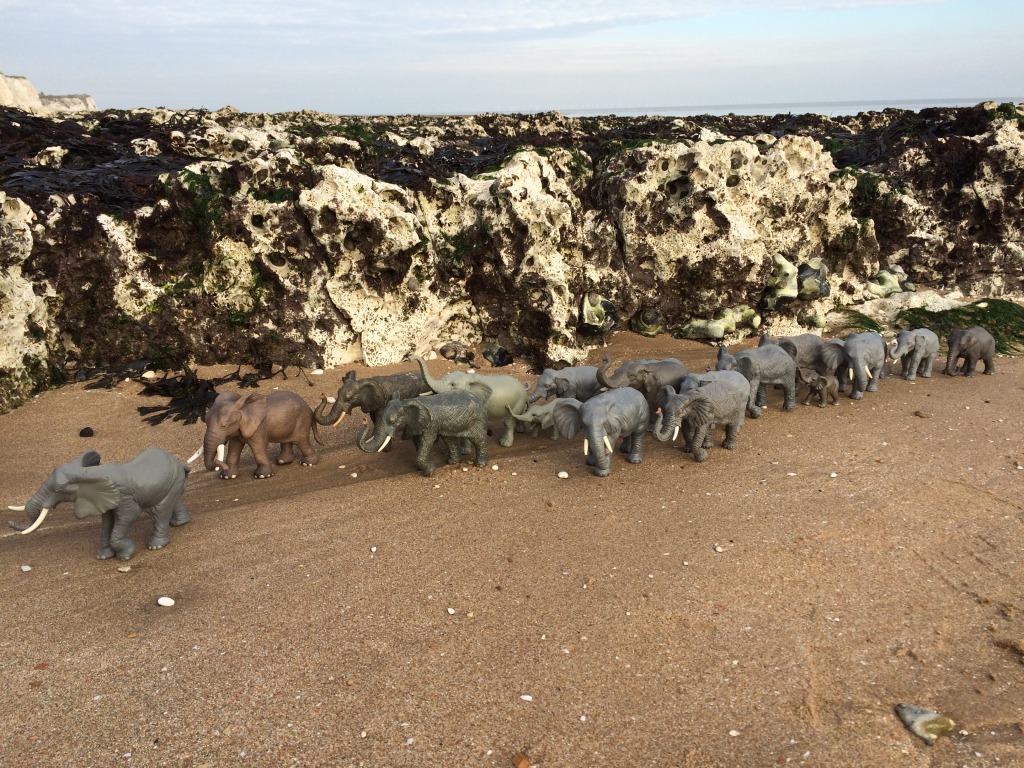
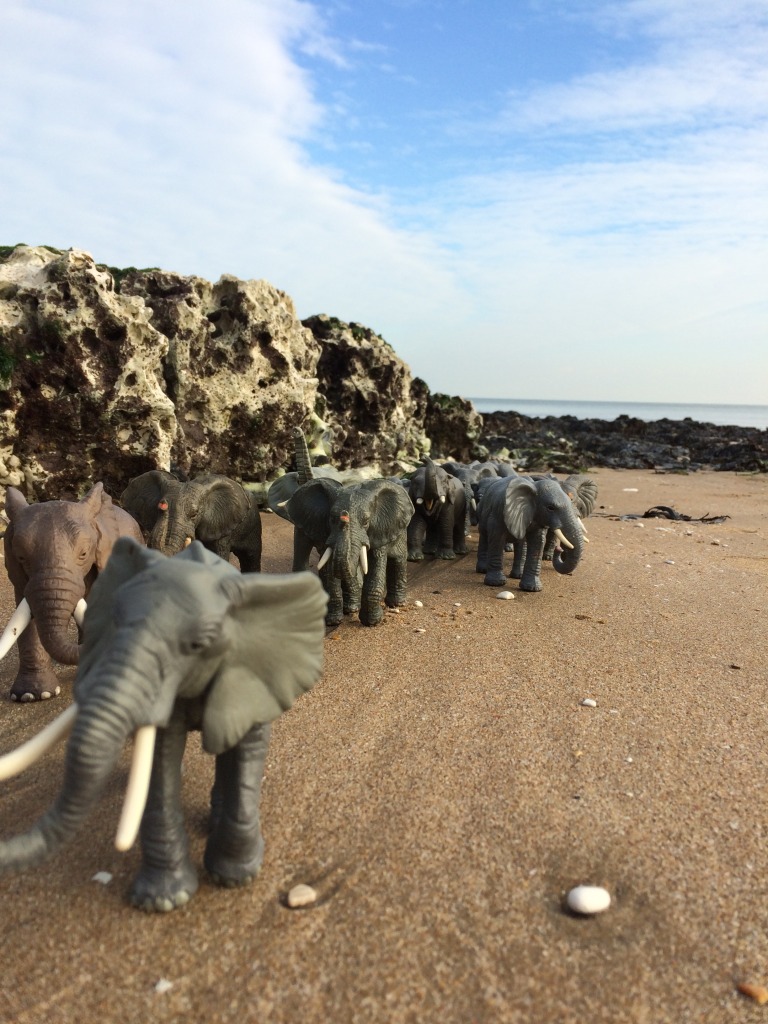
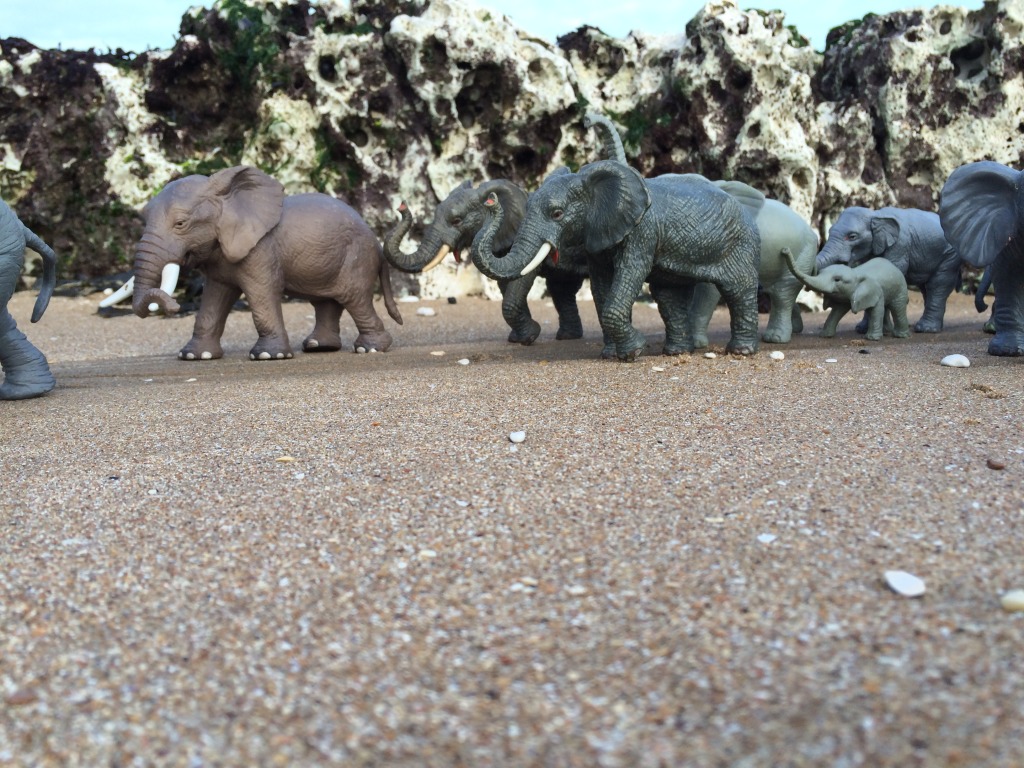
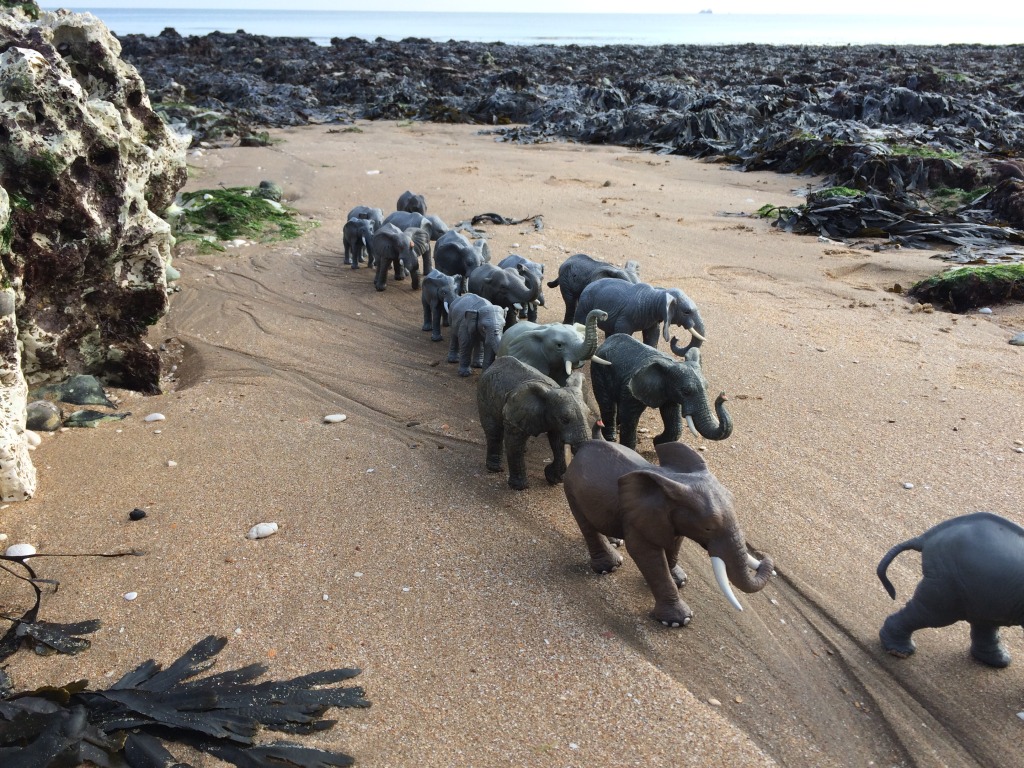
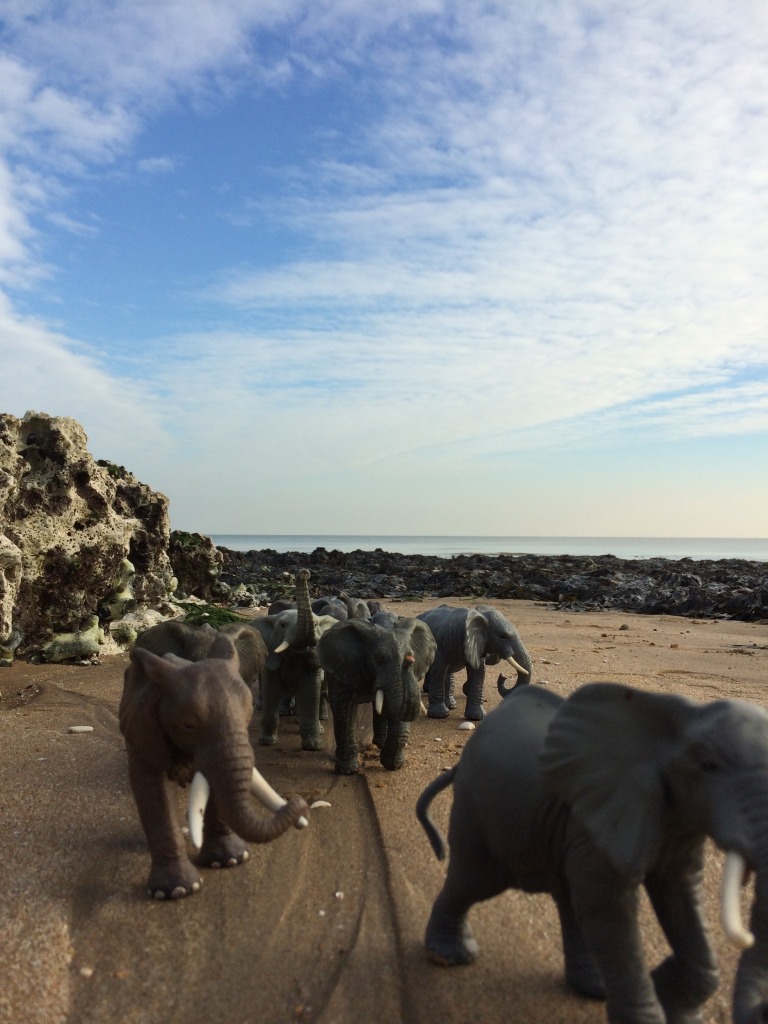
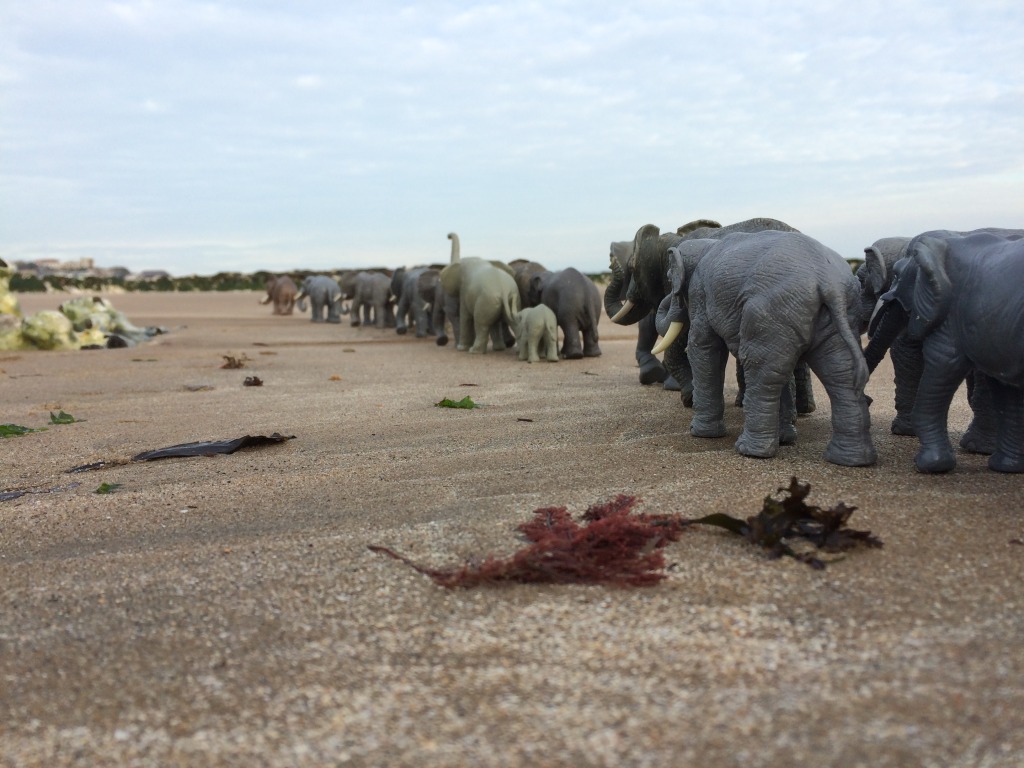
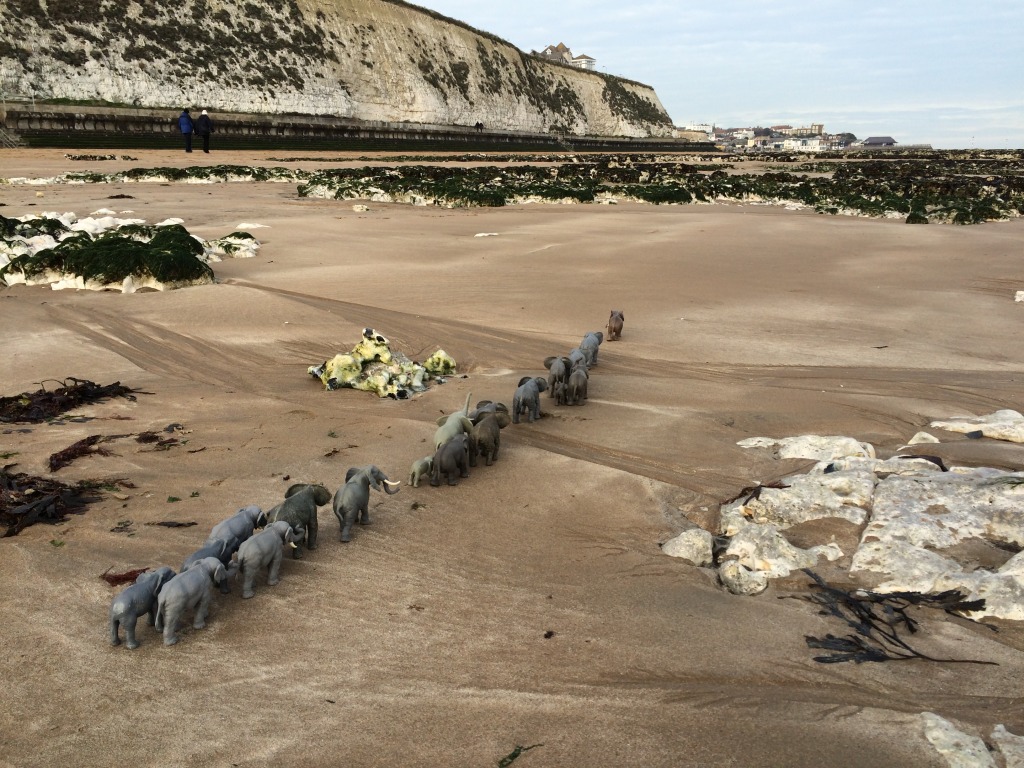
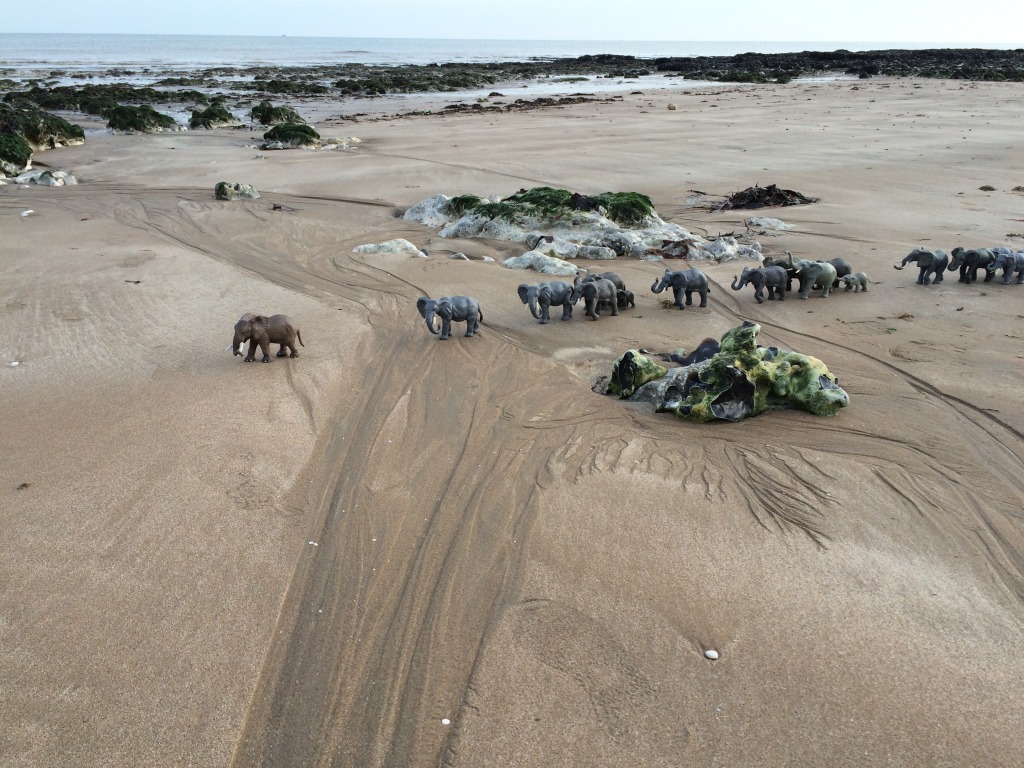
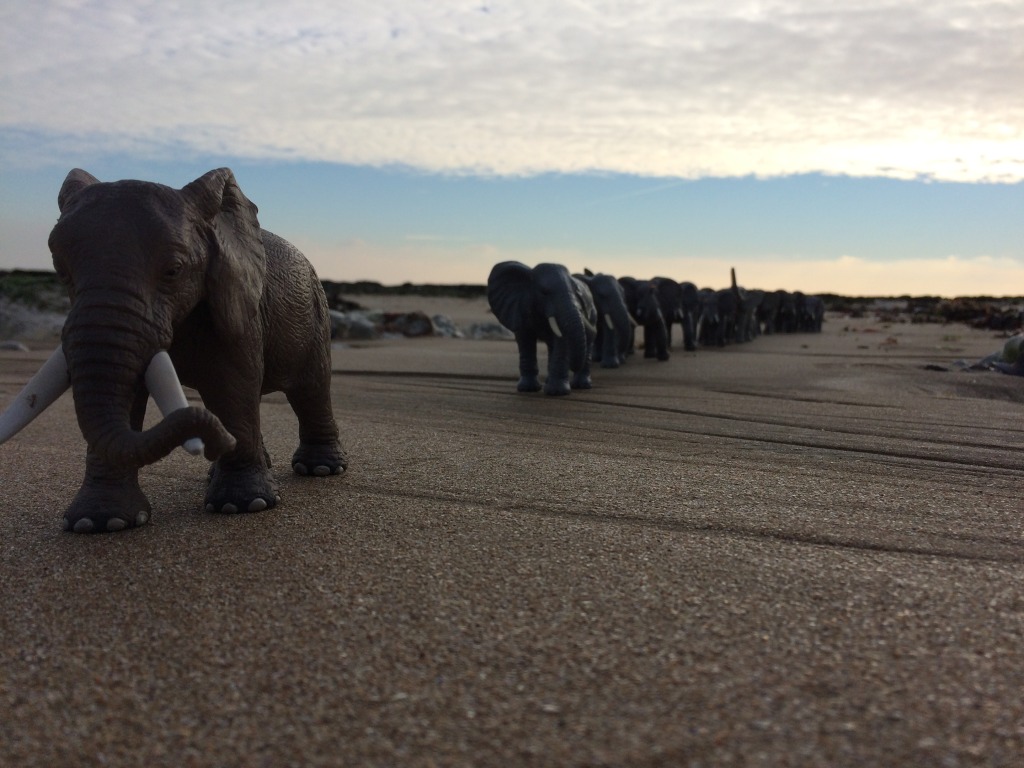
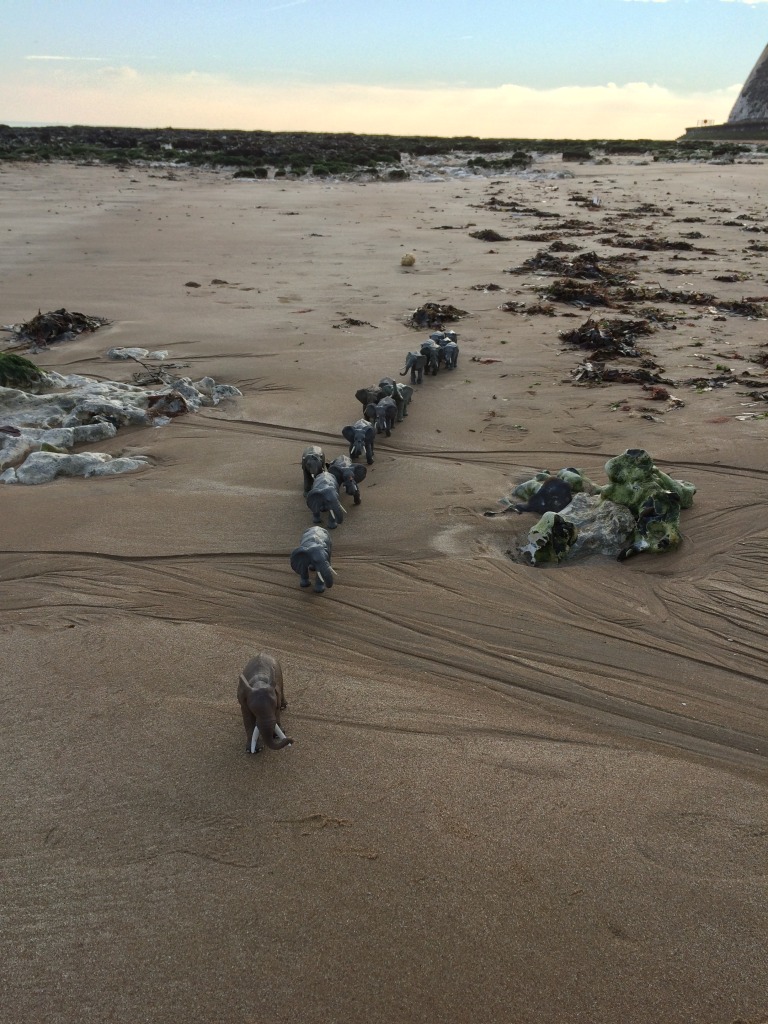

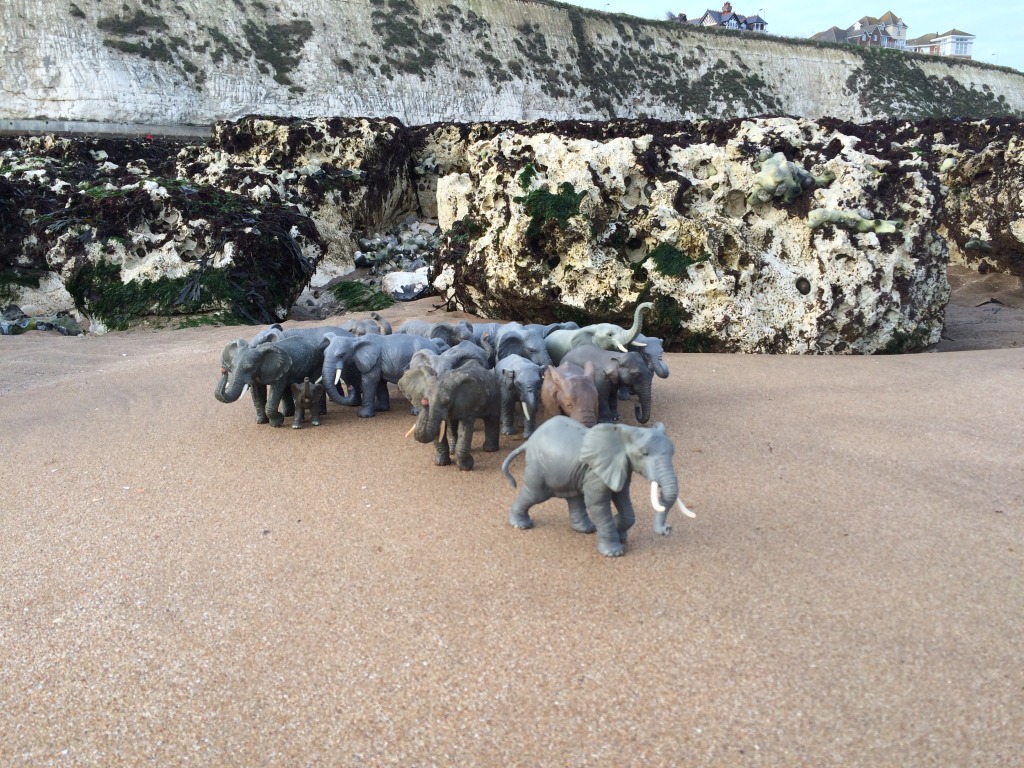
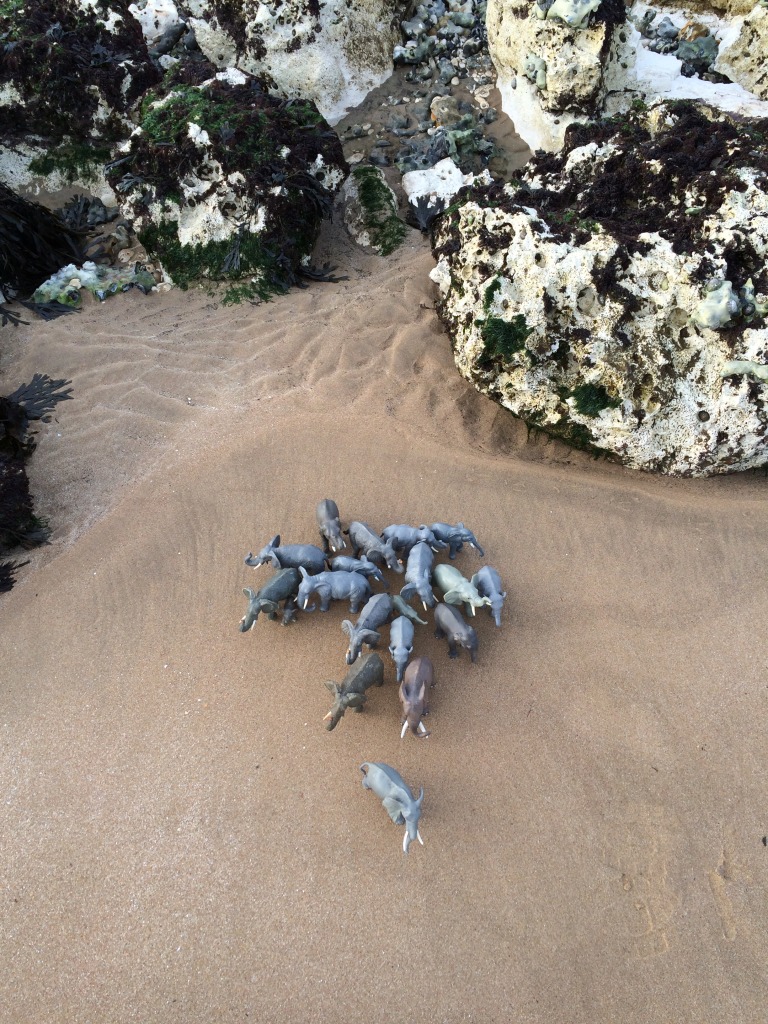
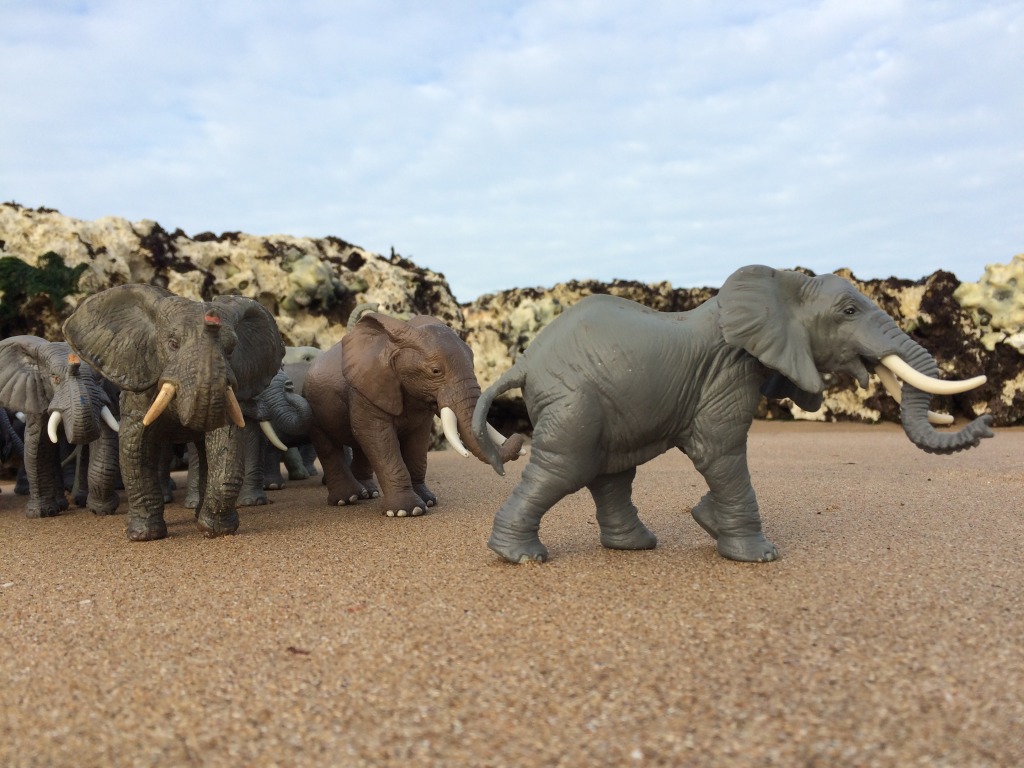
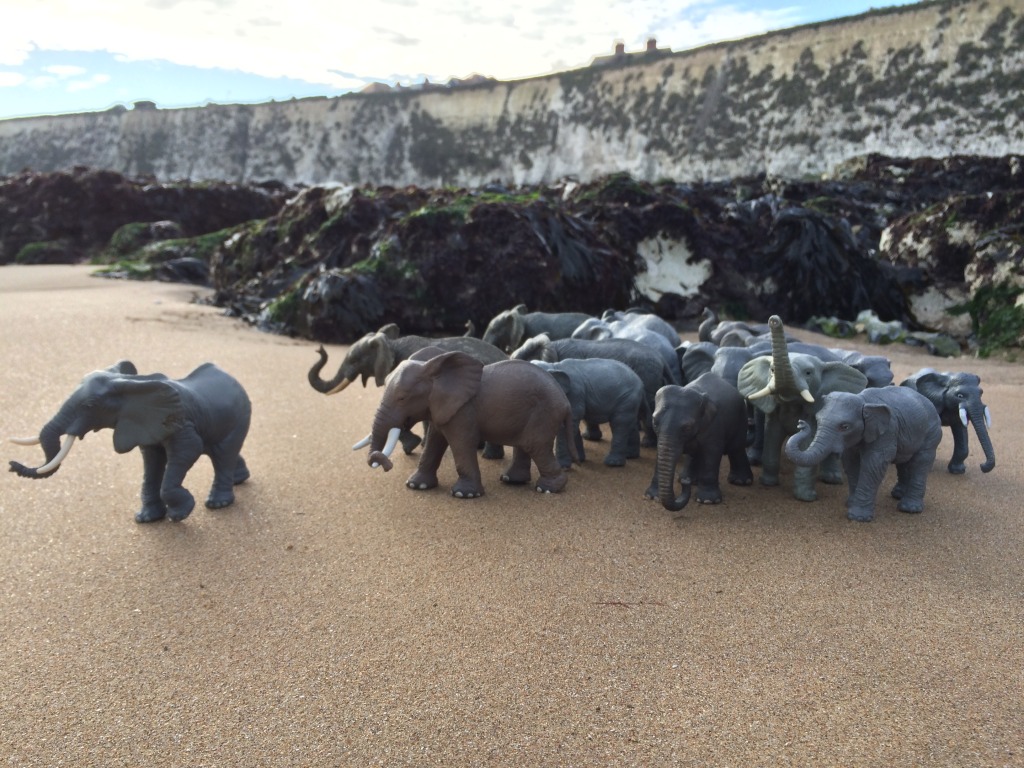
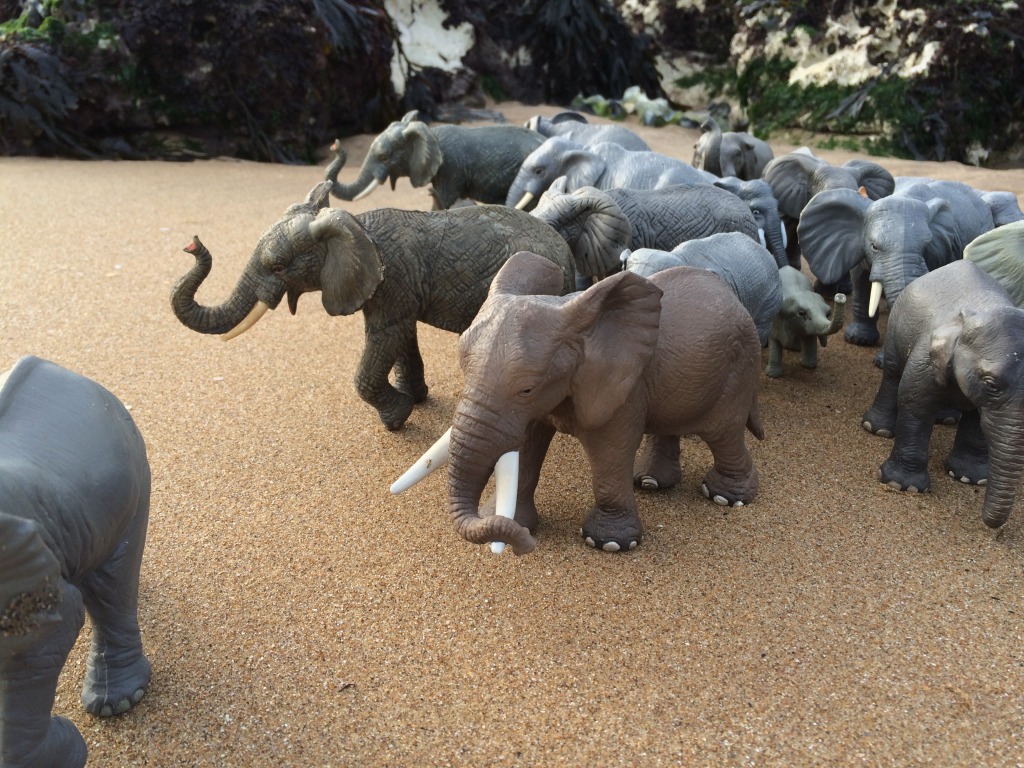
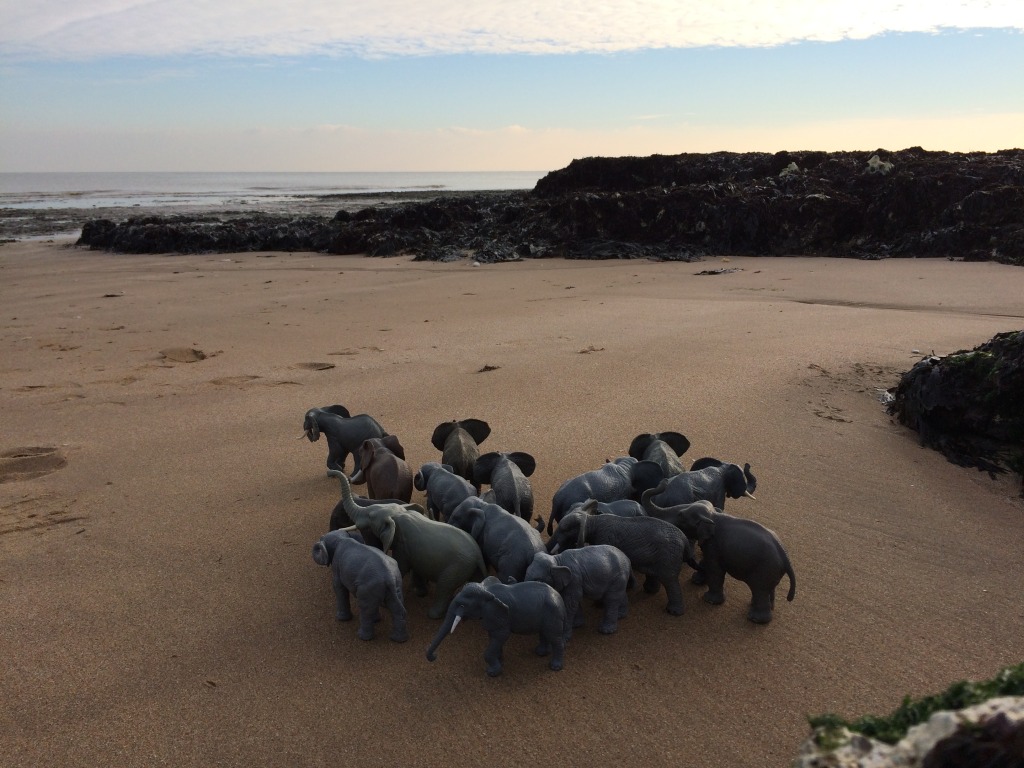
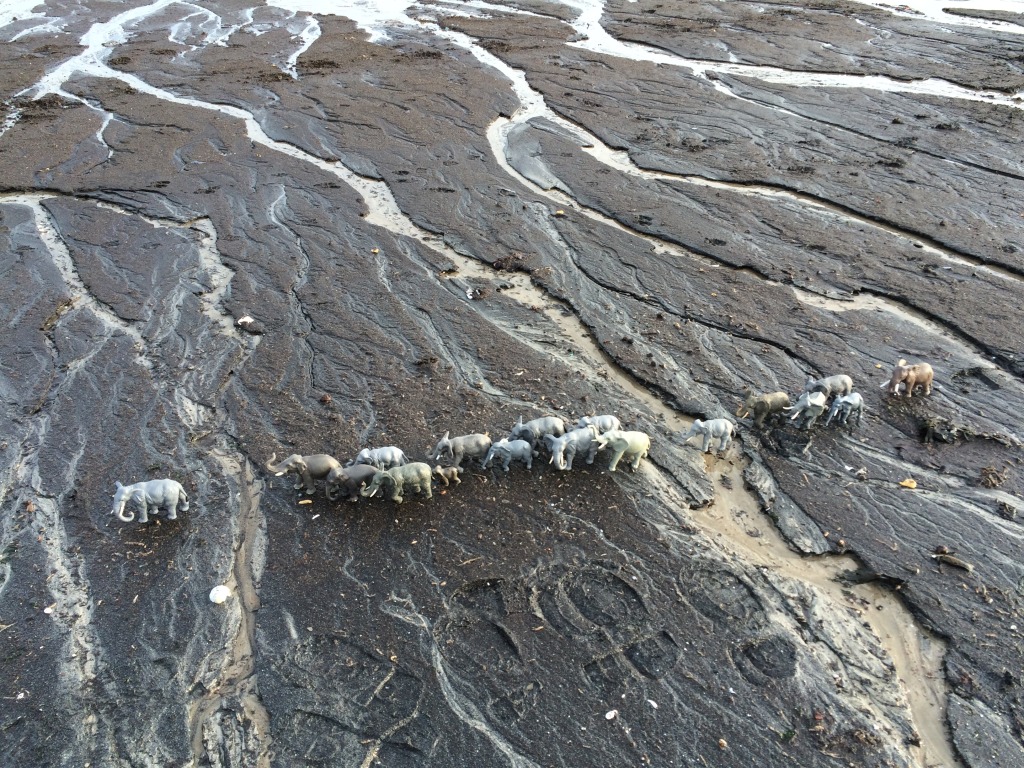
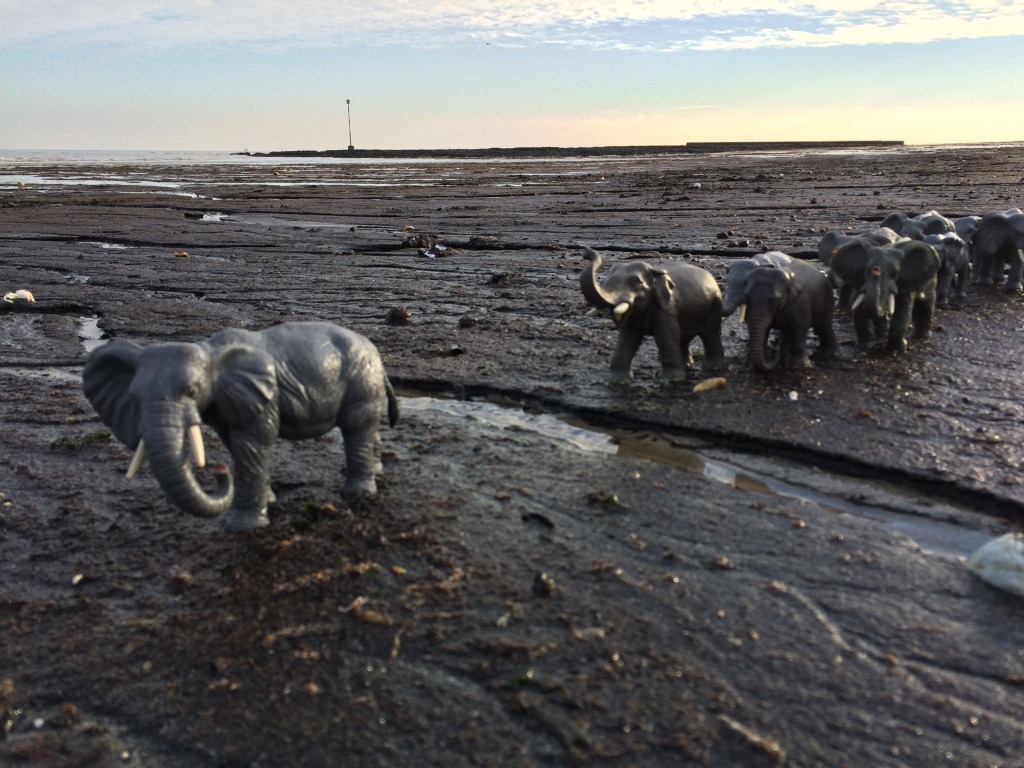
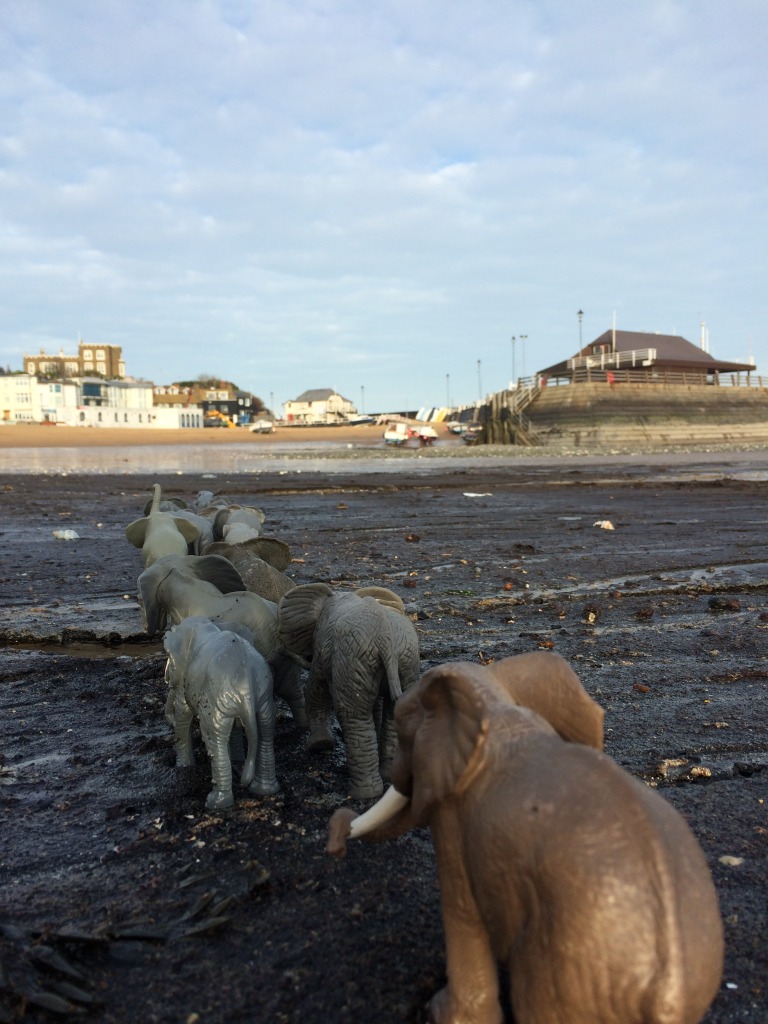
Light in the house…
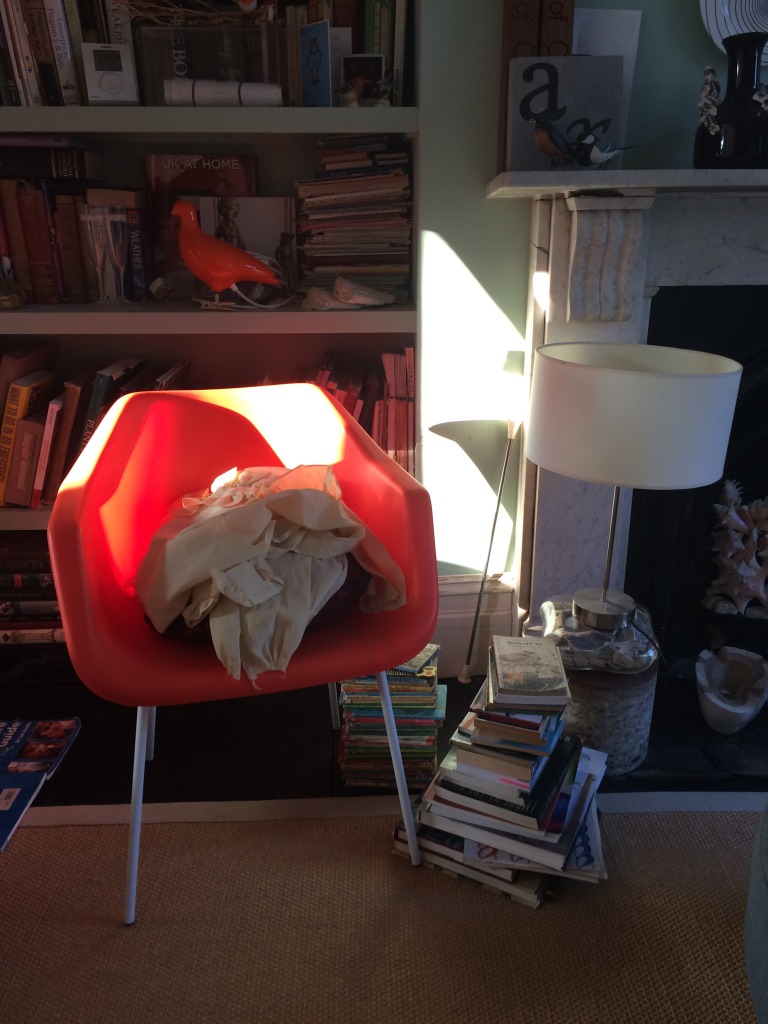
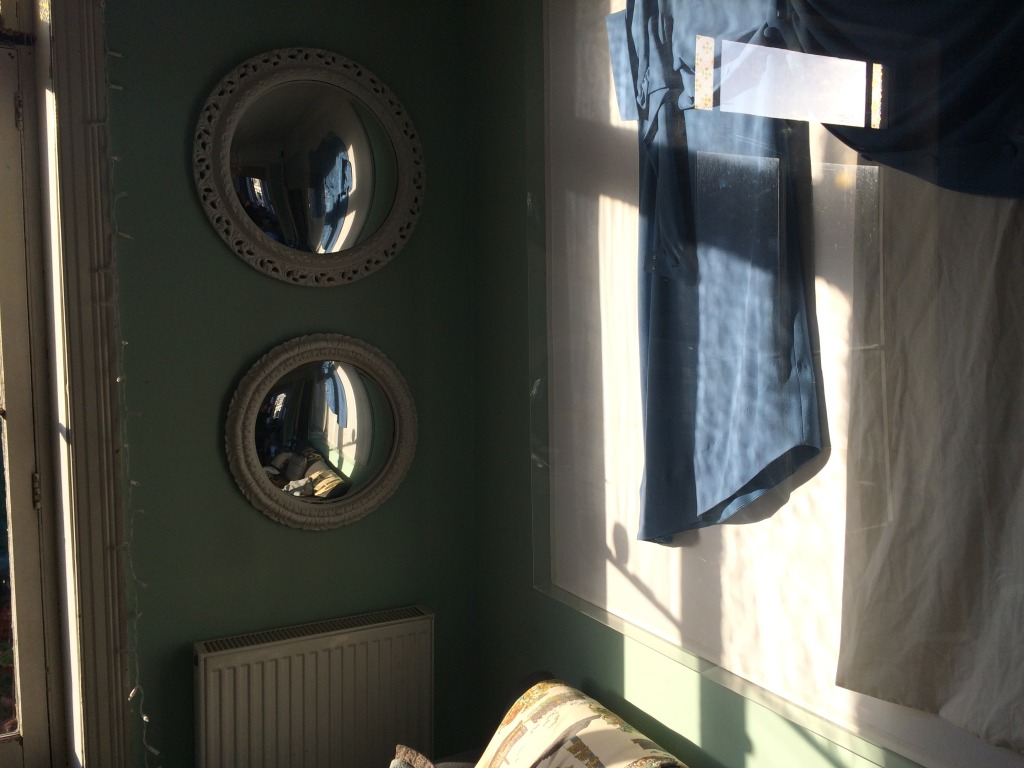
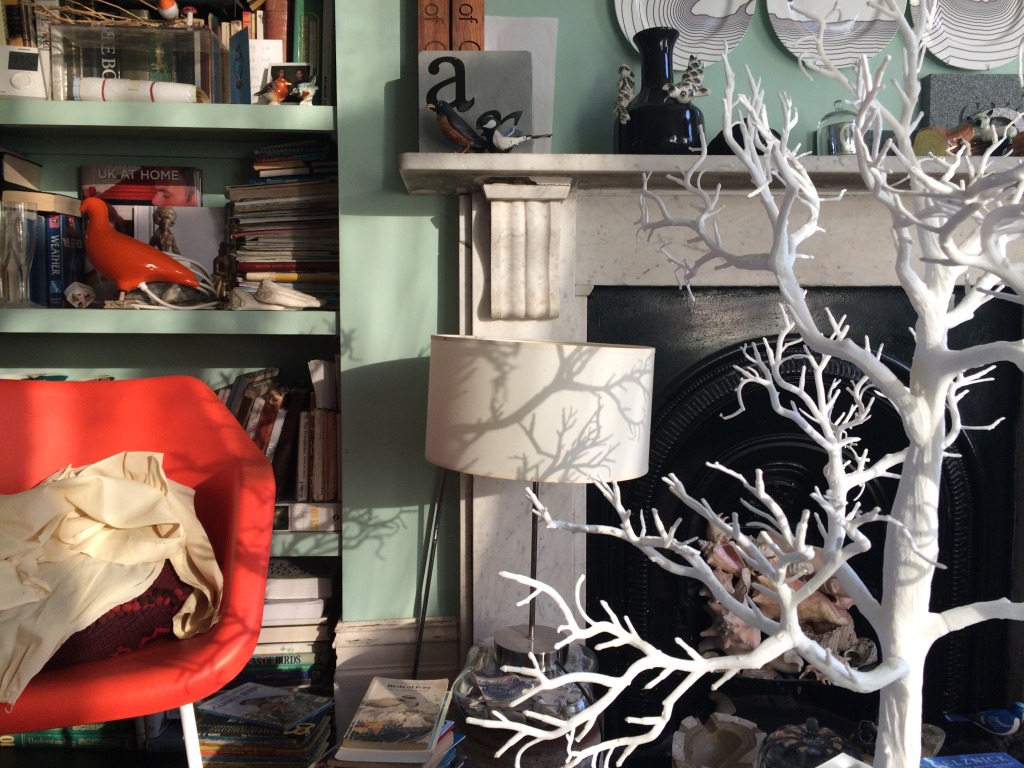
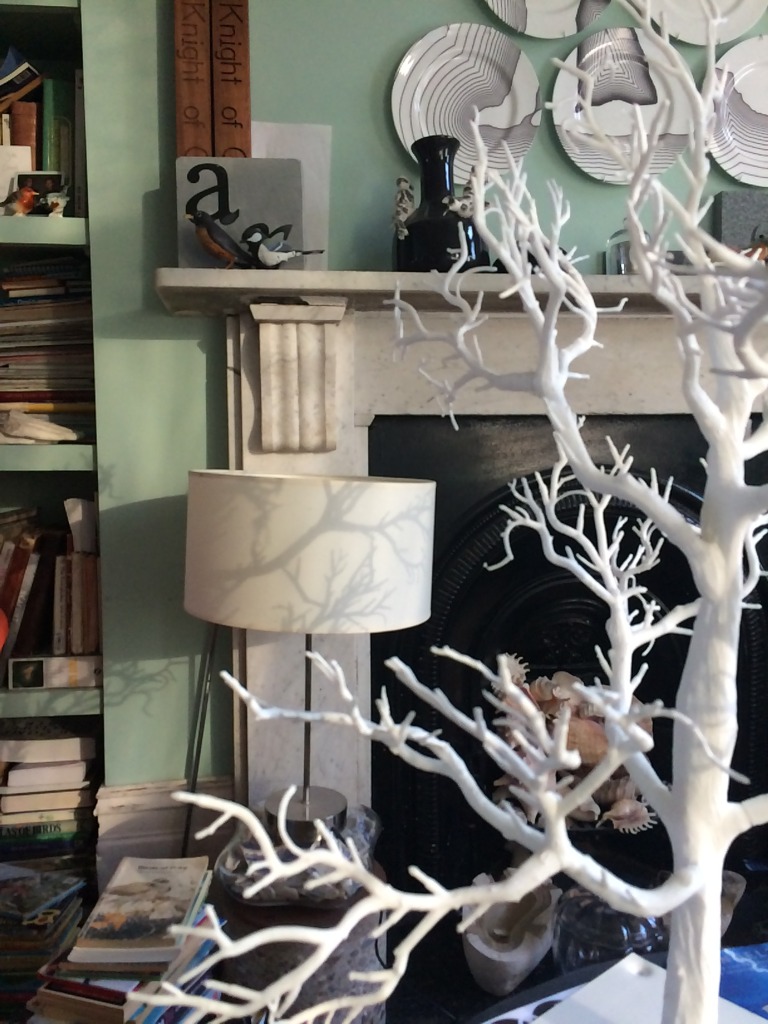
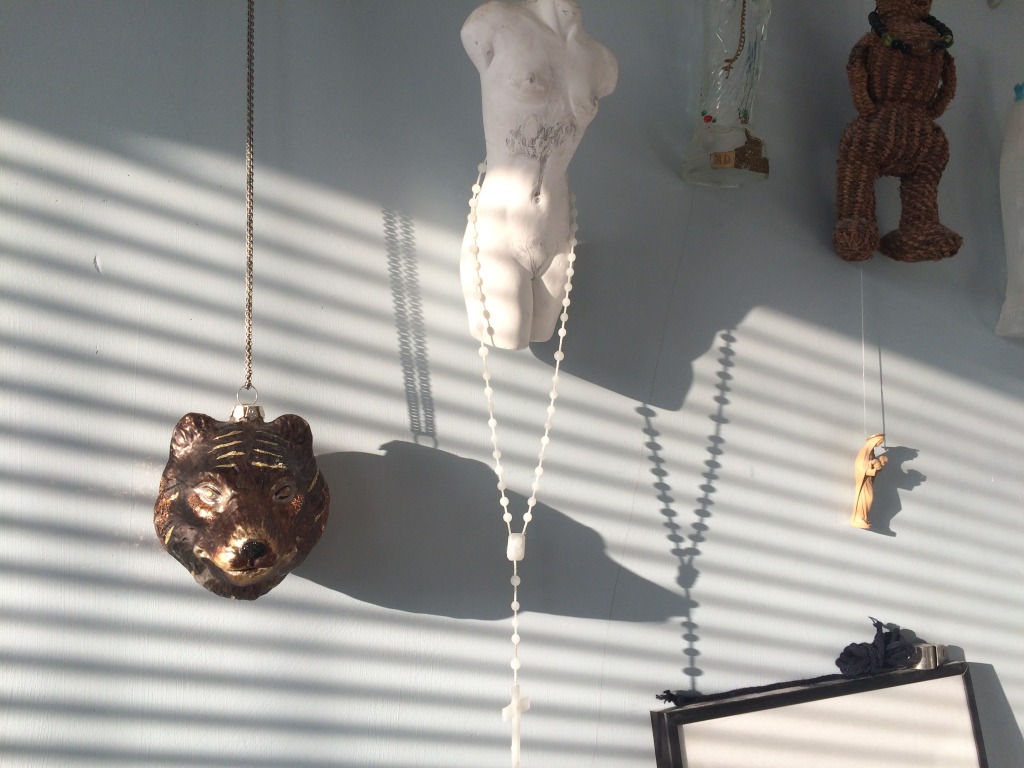
Broadstairs to Ramsgate – a walk back along the top of the chalk cliffs via Dumpton Gap and Ramsgate East Cliff & George VI Park.

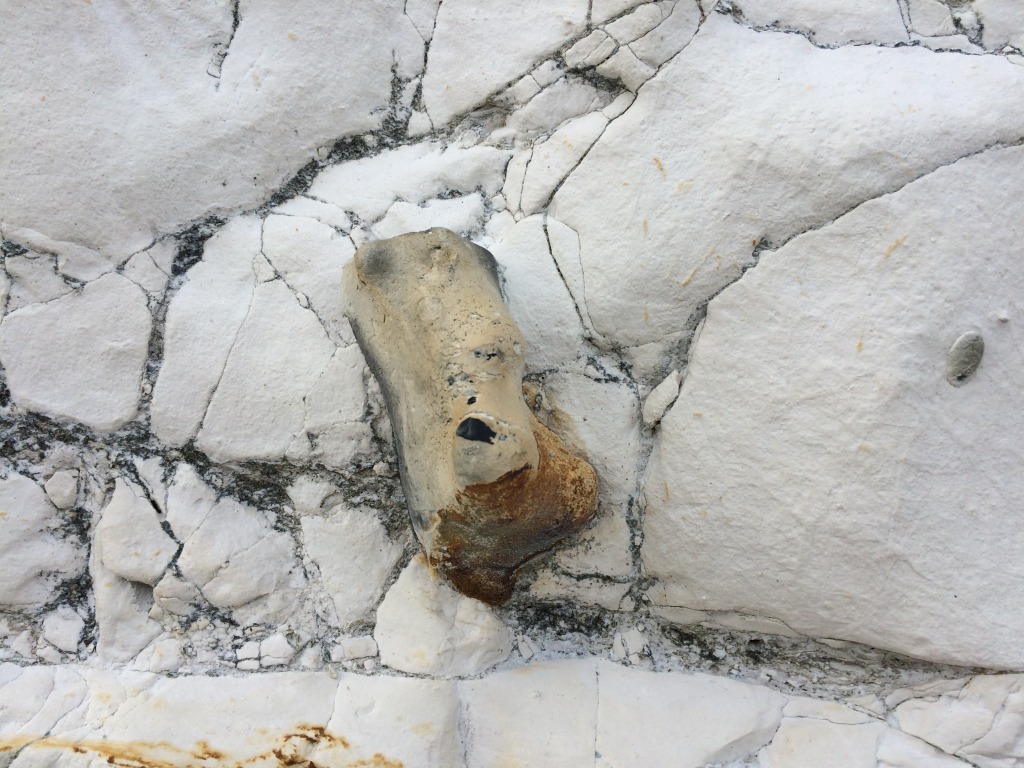


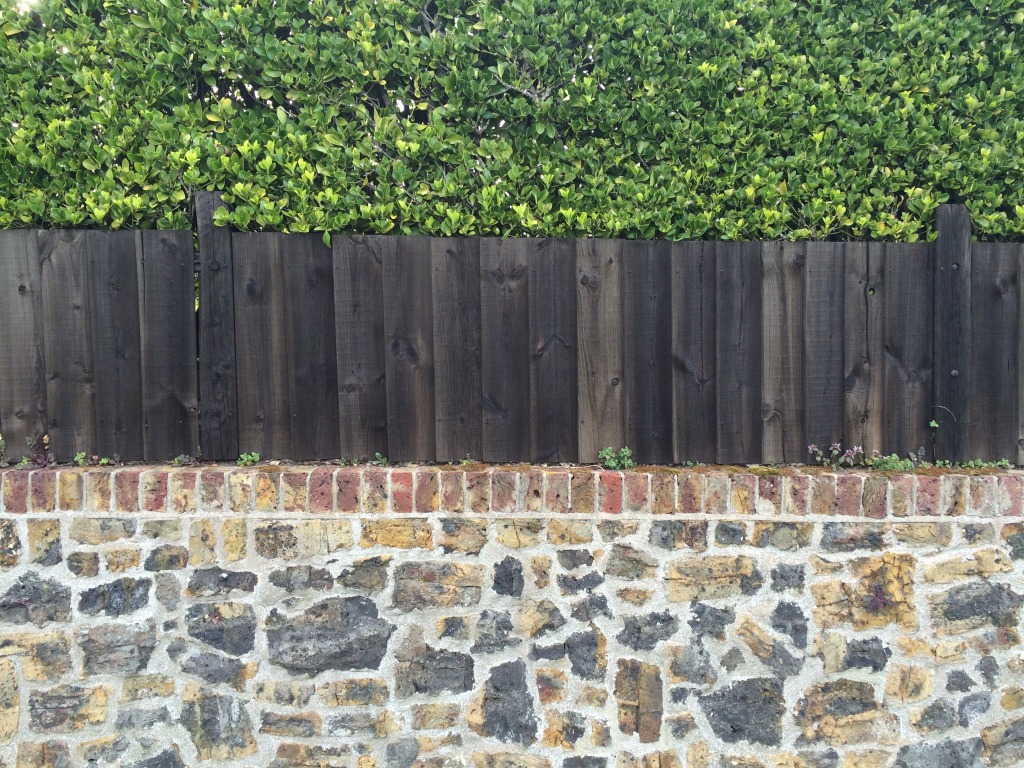
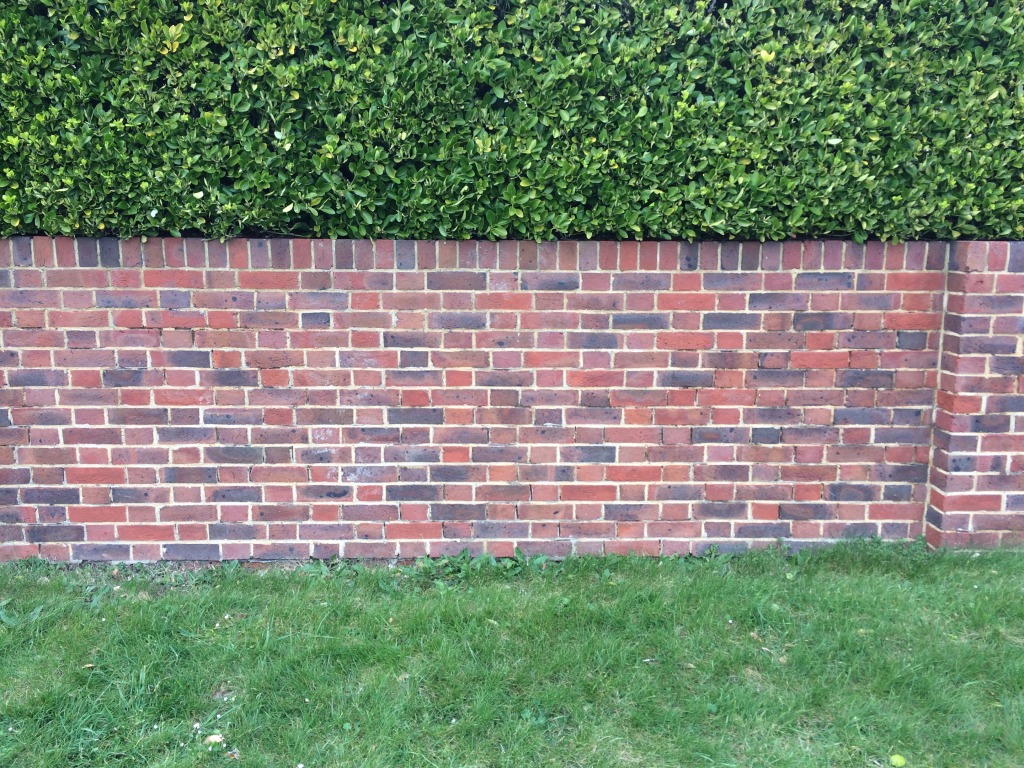

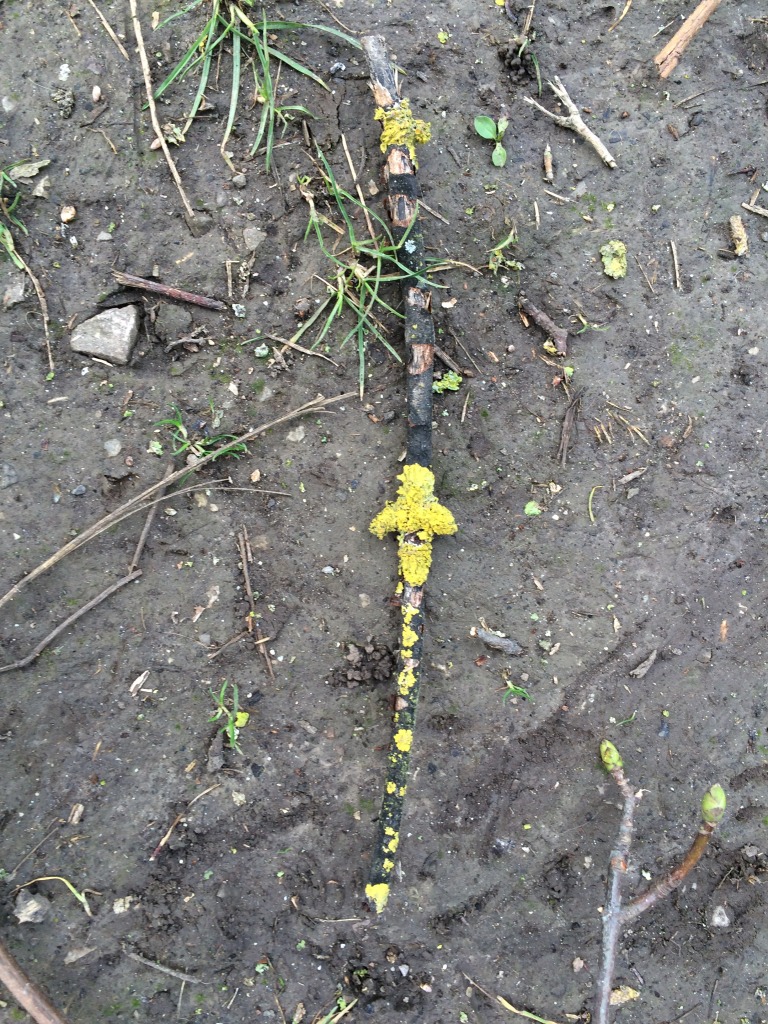
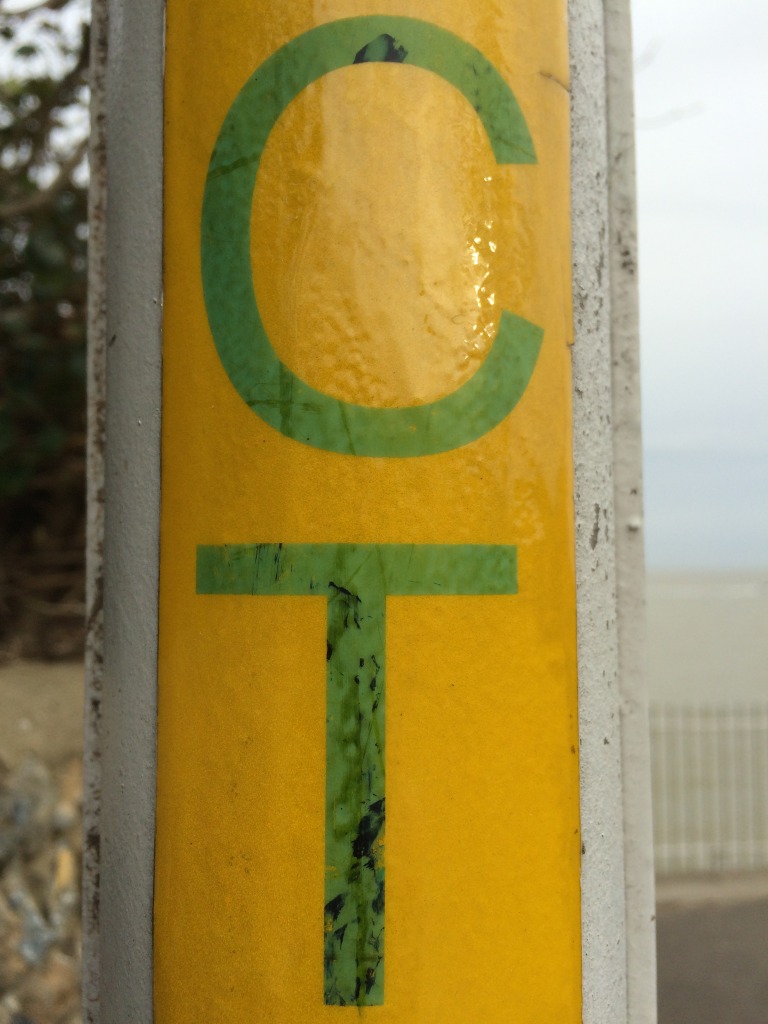
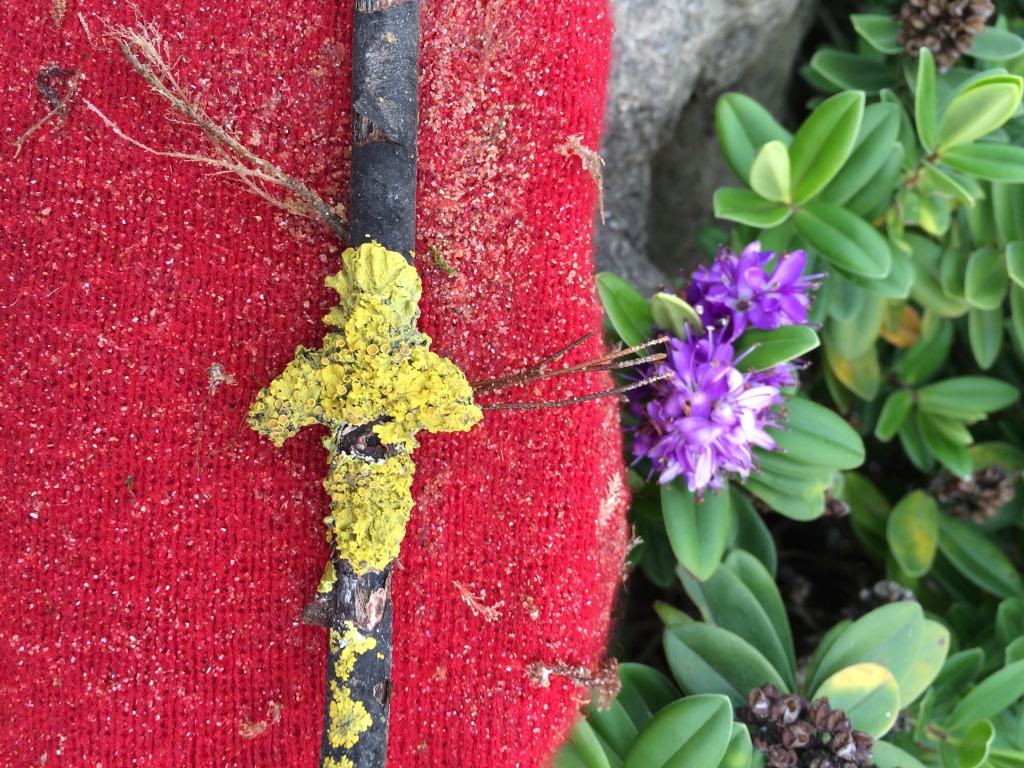
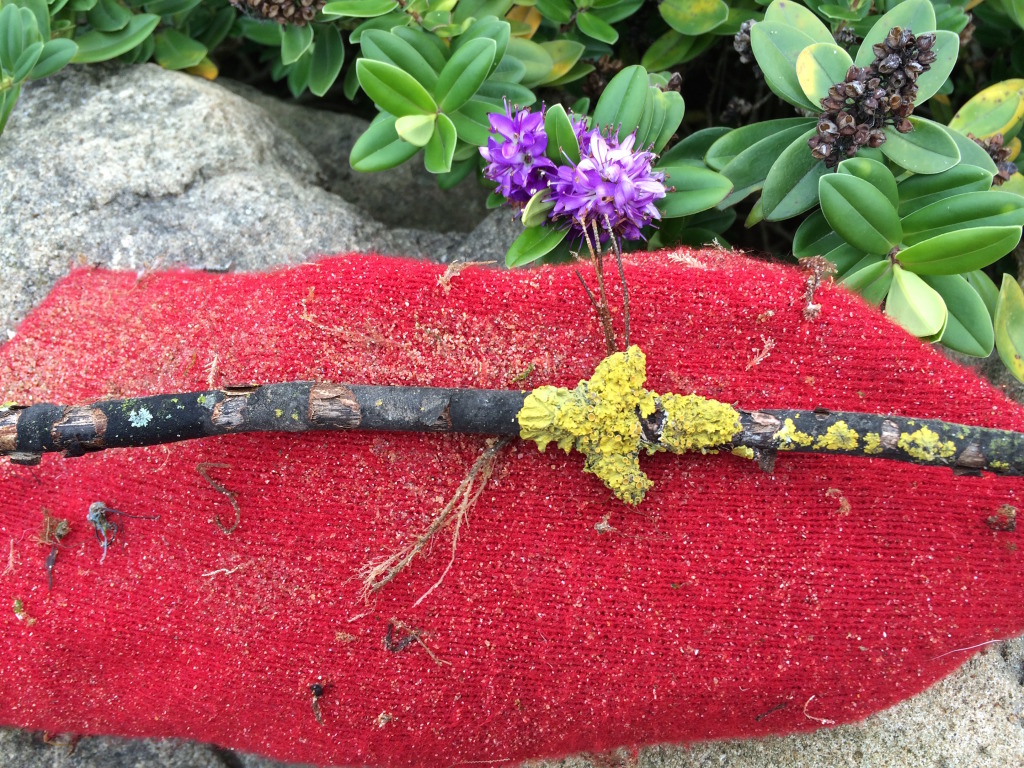
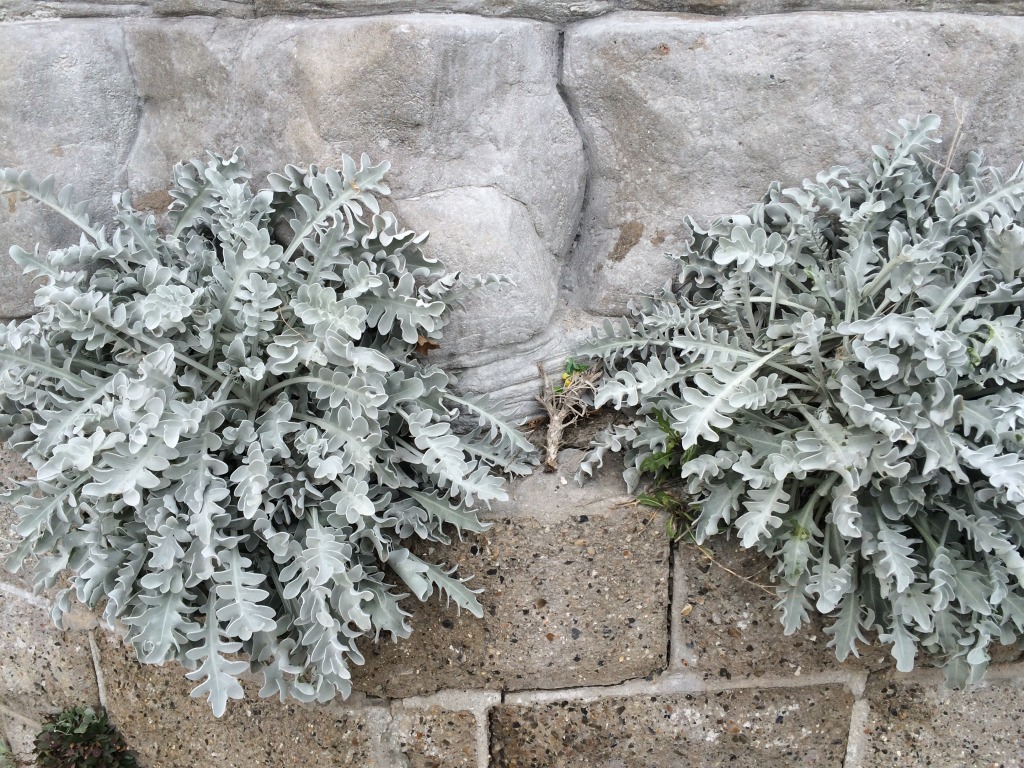
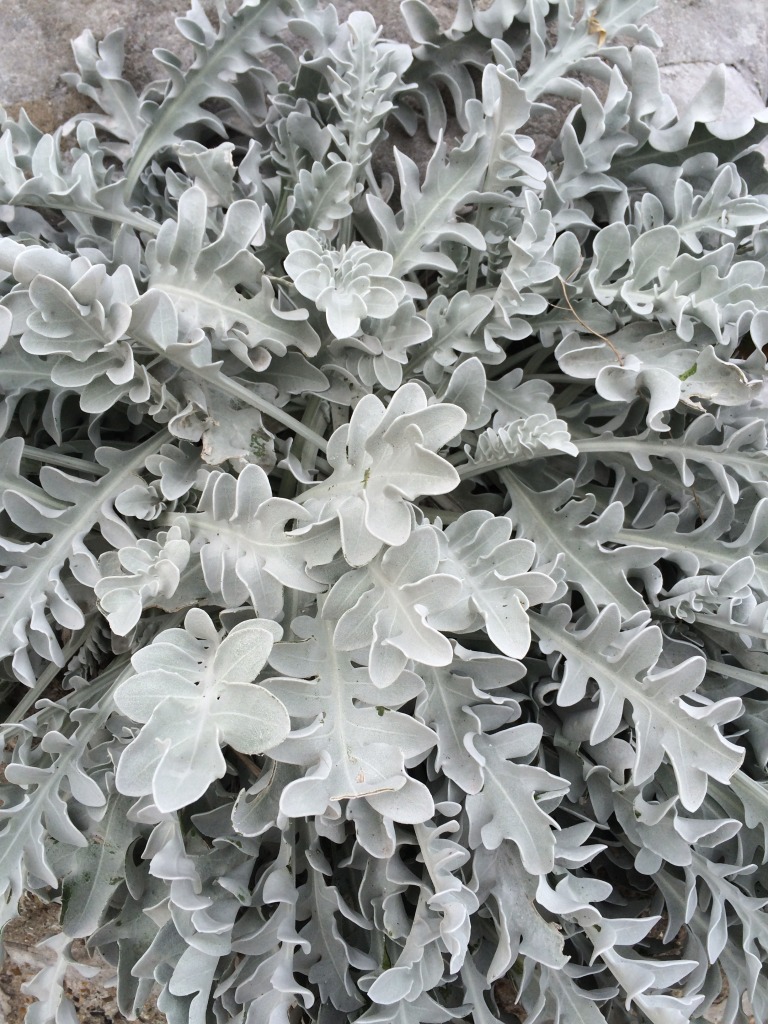
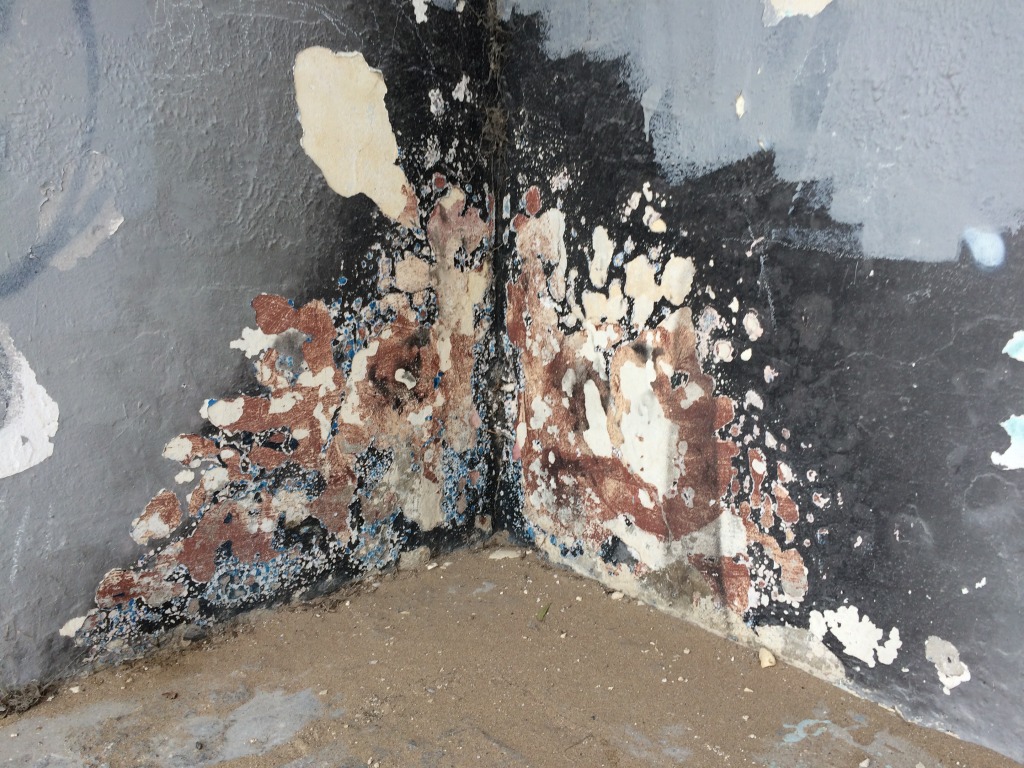
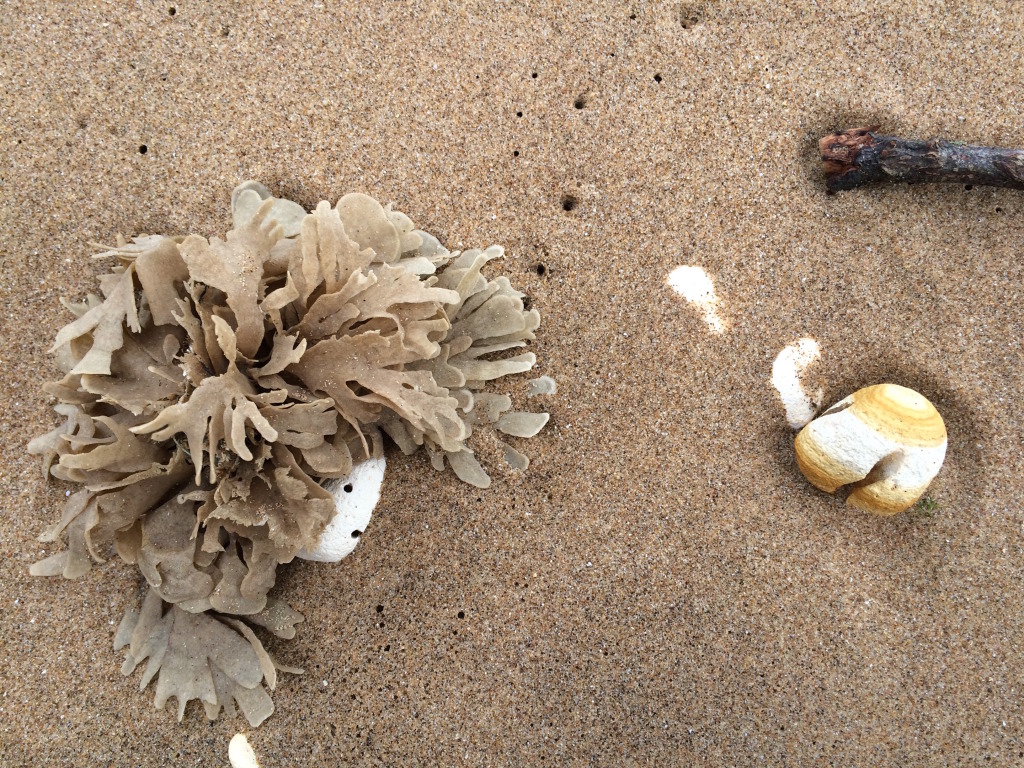
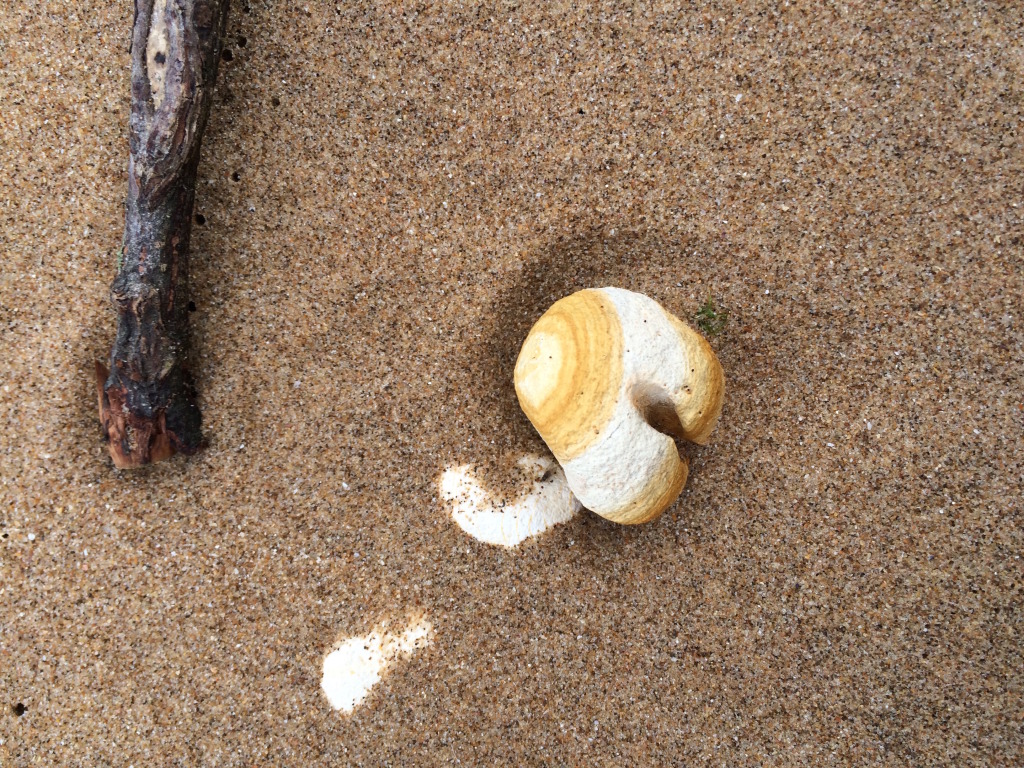
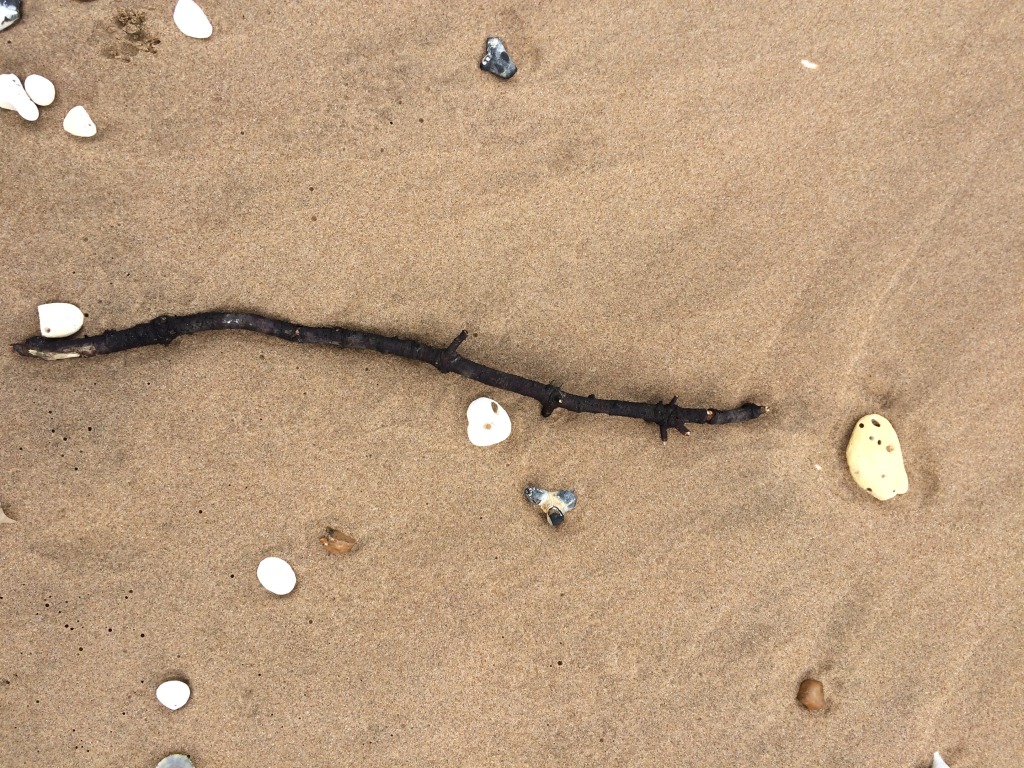
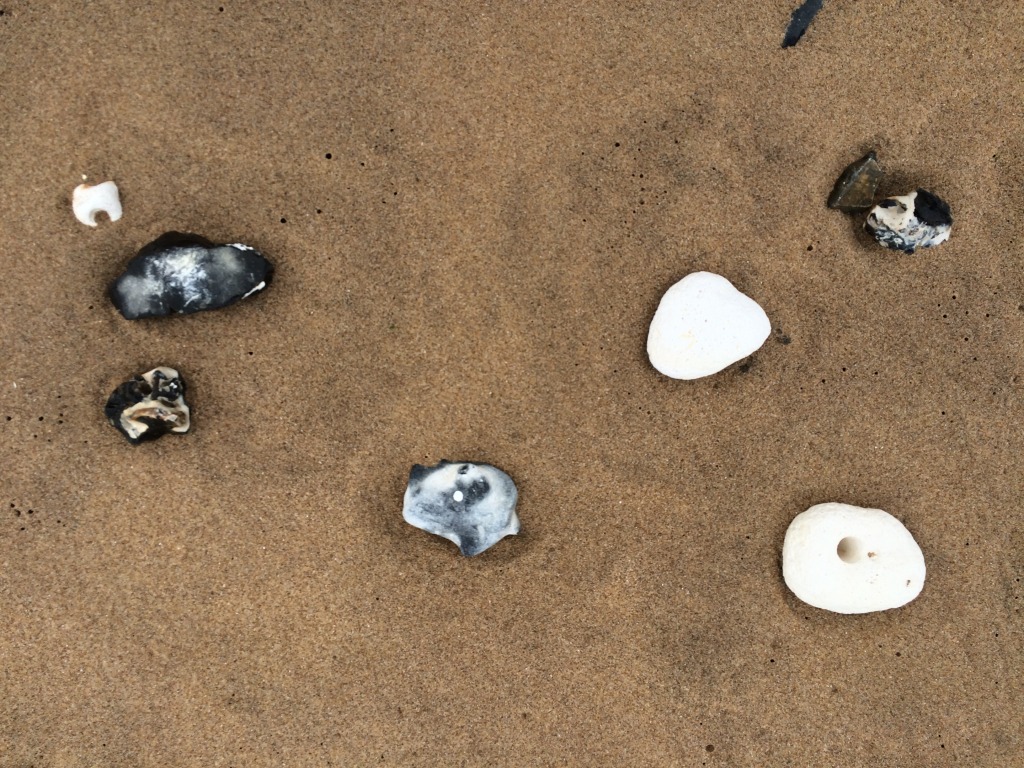
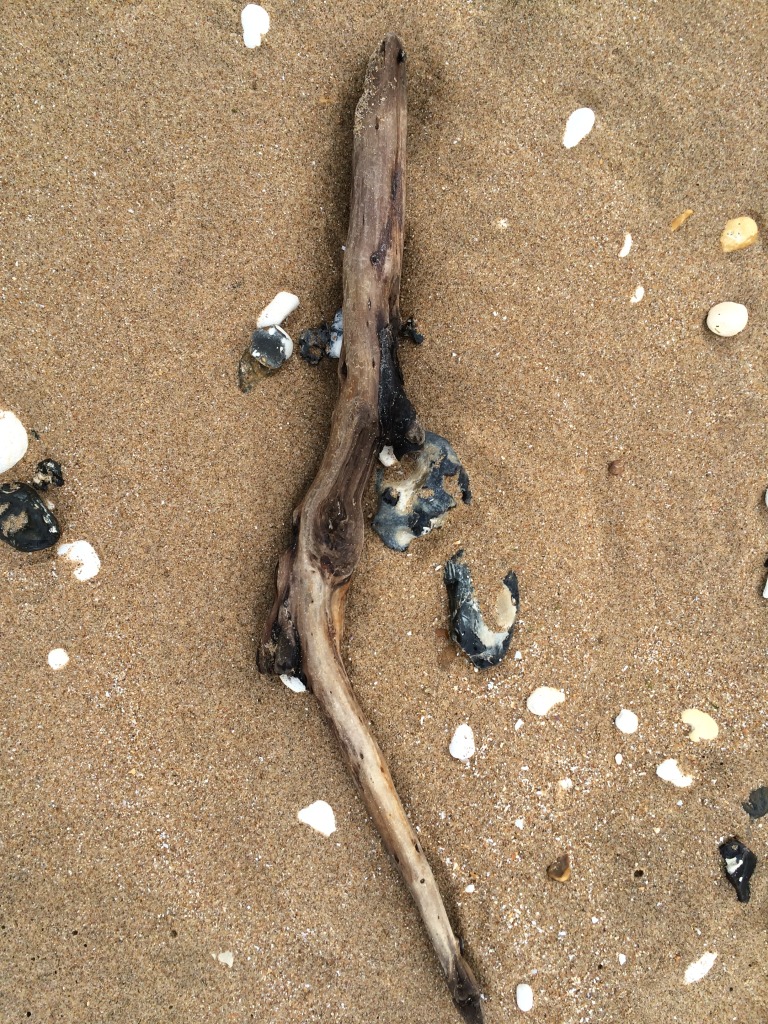
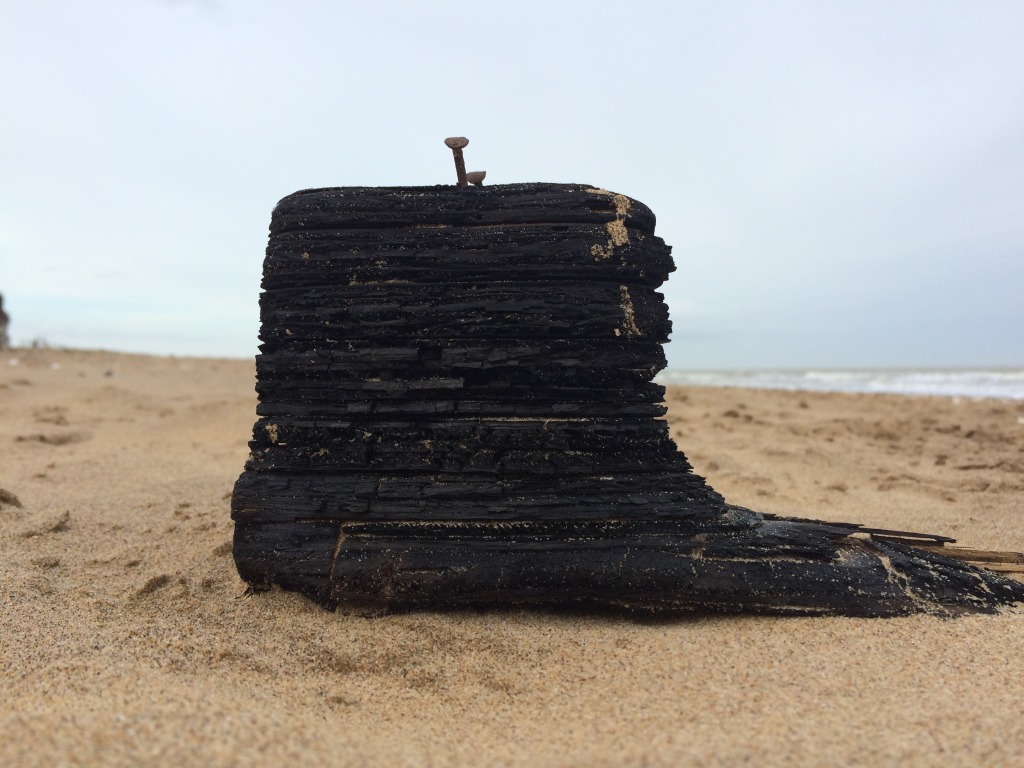
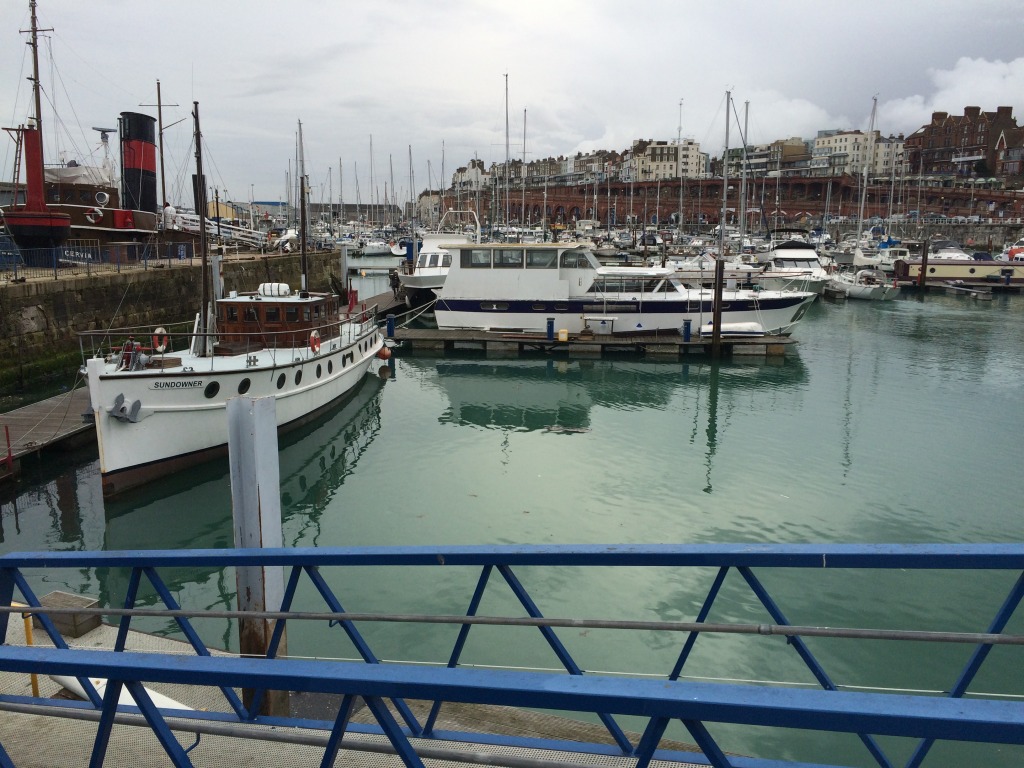
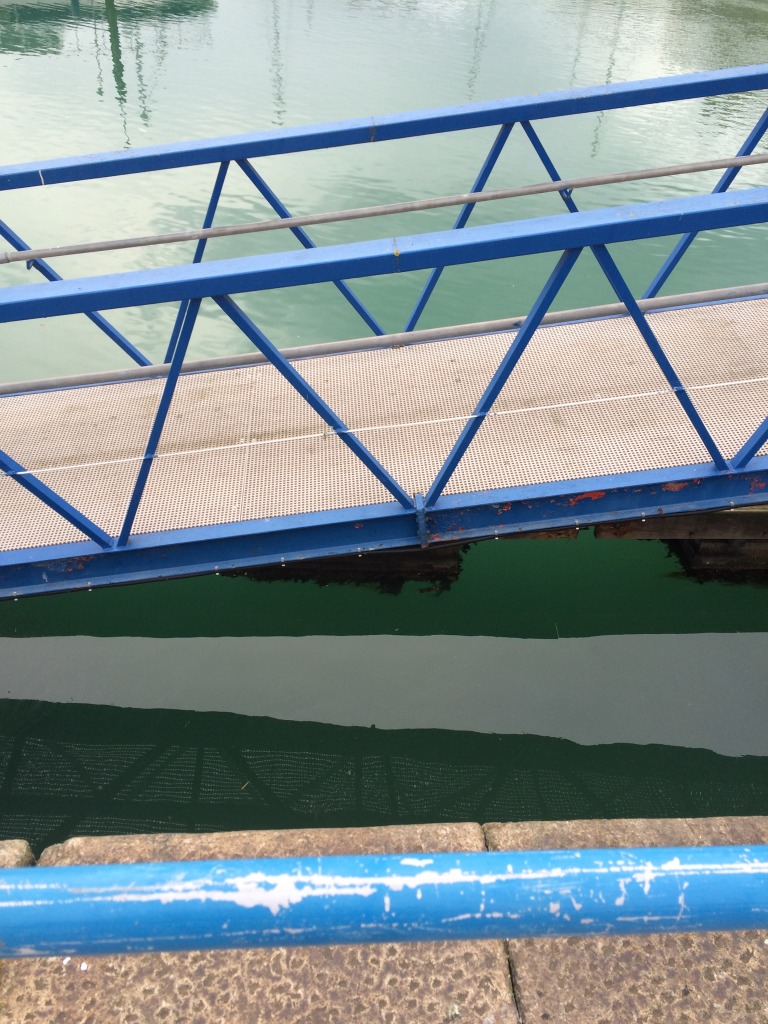
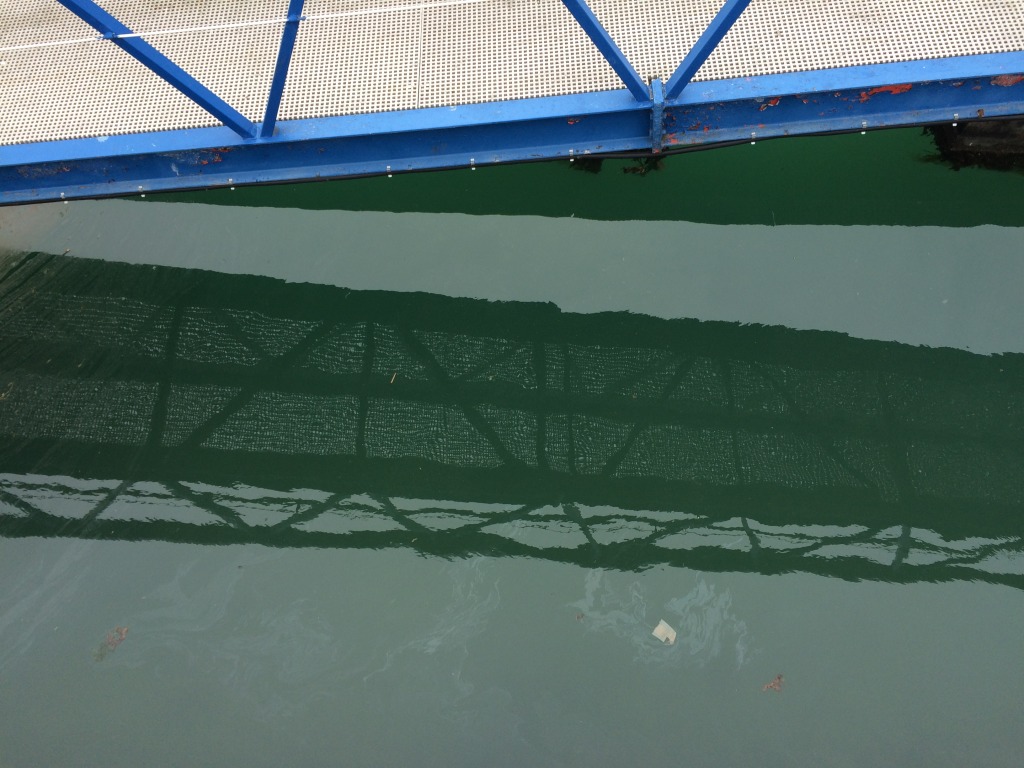
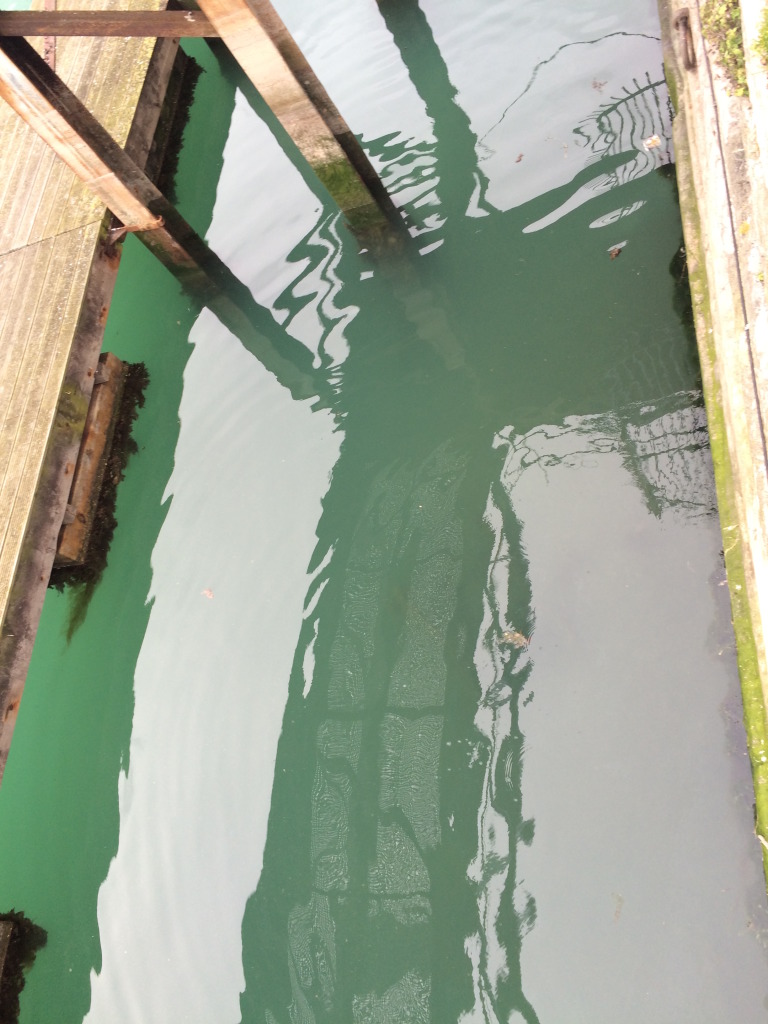
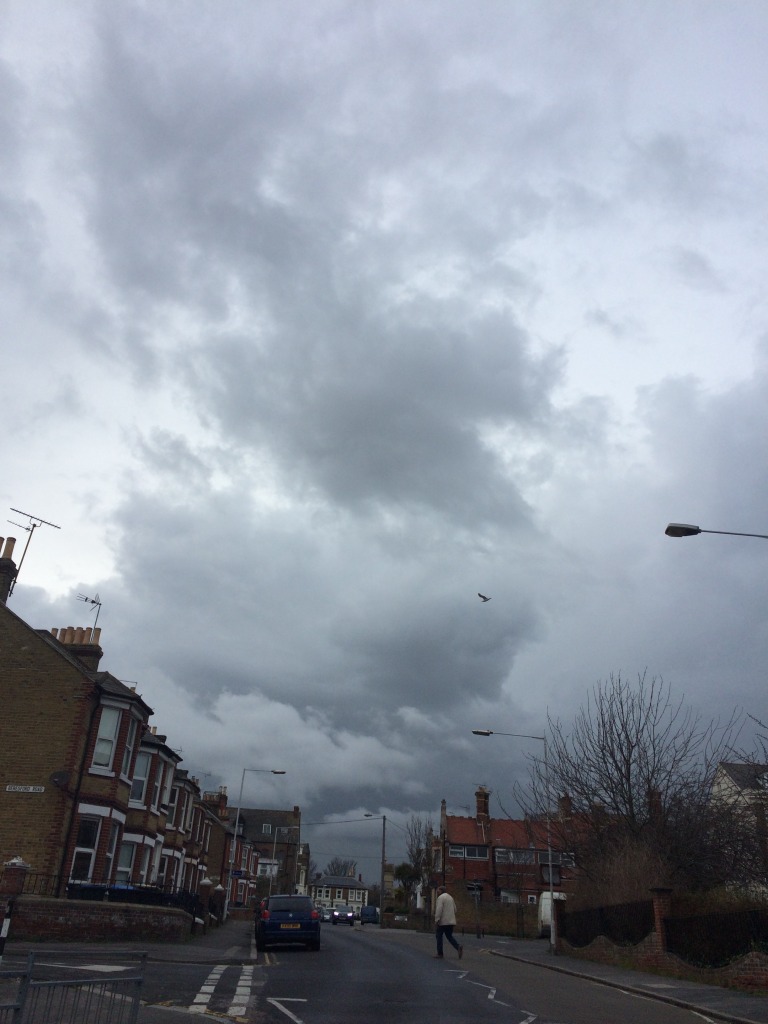
These images are from a walk I made over the Easter weekend from Ramsgate to Broadstairs and back again. I do this walk over and over again. It is different each time. I always see the small things as the grammar that holds a walk together.
